Better Sailing
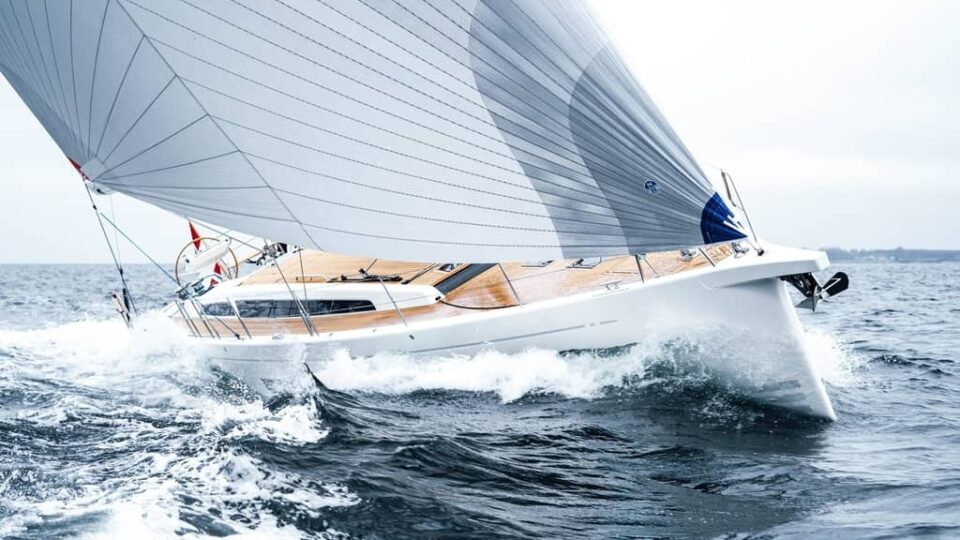

Names of Sails on a Sailboat
Are you a beginner sailor and want to get acquainted with the names of the sails? Are you an experienced sailor and want to learn more details about the sails on a sailboat? Then this article is written for you! Sails form a crucial part of the sailboat because without them, there’s no starting up. For that reason, there are many details about different types of sails concerning their utility, functionality, fabrication materials, and performance. Simply put, each sail serves different purposes when out on the water. Since the sail is the engine of your sailboat, in terms of it being the basic source of propulsion, it’s important to know when best to use either type of sail and why.
Types of Sails on a Sailboat
So, in order to better explain the types of sails, let’s look at their characteristics. The first important distinction between sails is their placement. Generally, the mainsail is placed aft of the mast , which means behind. On the contrary, the headsail is in front of the mast. There are also other sorts of sails that are used for specific conditions. These can be the spinnakers or balloon-shaped sails for downwind use. The second important distinction for the sails is their functionality. The specialized sails have different functionalities and are used in different sailing circumstances and weather conditions. A rule about sails is that large sails are appropriate for downwind use, whereas small sails are good for upwind use. Moreover, large sails perform better on weak winds while small sails are good for strong winds.
The Parts of a Sail and its Shapes
- Head: This is the top of the sail.
- Luff: The forward edge of the sail.
- Leech: Back edge of the sail.
- Tack: The lower front corner of the sail.
- Clew: The bottom back corner of the sail.
- Foot: Bottom of the sail.
There are two sail shapes, the fore-and-aft rigged sails, and square-rigged sails. Nowadays, fore-and-aft sails are more popular, have better performance and maneuverability. To grasp the idea square sails are the ones that Vikings had on their ships and are good at sailing downwind because they run from side to side. But they’re not suitable at all when sailing upwind. On the other hand, a fore-and-aft sail is tied from the front of the mast to the stern and is much better at sailing upwind.
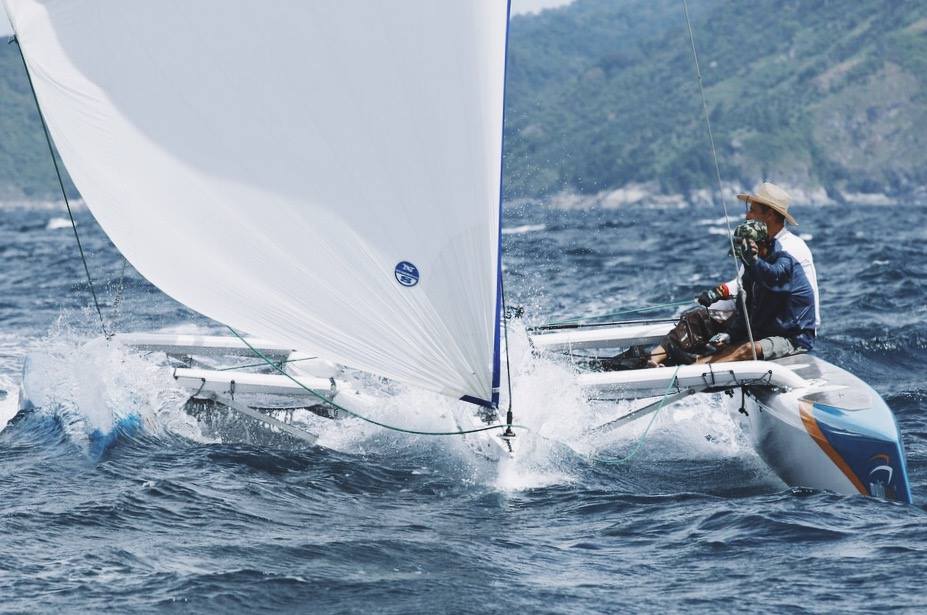
Also Read: What is Sailboat Rigging?
Types and Names of Sails
There are a lot of reasons why you’d want to put one sail over another, but the most important thing to remember has to do with the point of your sail and the wind strength. These points help you understand how your sailboat generates wind power. These points of sail include: into the wind (in irons), beam-reaching, broad-reaching, close-hauled, close-reaching, and running. They all go from windward to leeward and are symmetric from port to starboard . So, let’s get to the point and see the names and explanation of each sail:
- Mainsail : The large sail behind the mast which is attached to the mast and the boom, is called the mainsail. Mainsails cover a lot of surface area concerning incoming winds and by doing that they don’t need very strong winds to provide forward propulsion on a sailboat.
- Headsail or Jib : The small sail placed in front of the mast, attached to the mast and forestay (ie. jib or genoa), is called the headsail. Headsails are smaller than mainsails, thus their surface area is smaller. As a result, they can’t catch the same wind as a mainsail does. However, this is important because in case that the current wind is strong and the mainsail has been enough trimmed, being able to remove the mainsail and depend on the headsail alone, is a good strategy in order to reduce speed.
- Genoa : A genoa is like a large jib and it’s attached to the front of the forestay, like a headsail. When you use a genoa sail then you are expecting light to medium winds. Also, your sailboat would be somehow in a rush point of sail, meaning that the wind comes directly from the rear. Moreover, the surface area of a genoa sail is quite large, so it’s important to use it when winds are relatively low.
- Spinnaker : These downwind sails are symmetrical which makes them more sensitive to the reaching points of the sail and therefore more suitable for the running point of sail. Spinakkers are lighter than other types of jibs, and they don’t cover the mast like a genoa sail. Moreover, they remain unattached to the forestay and stretch out toward and past the bow of a sailboat.
- Gennaker : Gennakers are a mixture of genoa and spinnaker sails. There are small and big gennakers and both are downwind sails. They aren’t as symmetric as a spinnaker and aren’t attached to the forestay like a headsail. Furthermore, the gennaker sail is able to take on a more flexible point of sail while taking advantage of softer winds.
- Drifter Reacher : A drifter is a light air sail, and it’s basically a larger genoa for use in light winds. Its extra sail area offers better downwind performance than a genoa. It’s mostly made from lightweight nylon.
- Code Zero Reacher : This sail is a type of spinnaker, but it looks like a large genoa. However, code zero is designed for better reaching which makes it much flatter than the spinnaker.
- Windseeker : This sail is small, and it’s designed to guide light air onto the lee side of the mainsail. Moreover, it’s tall and thin and ensures a smoother flow of air.
Sail and Mast Configurations
Now that you got an idea of the different types of sails on a sailboat, it would also be an advantage to know how these types of sails are related to the configuration of a sailboat’s mast. There are numerous combinations when it comes to sails and mast configurations, let’s see some of them!
- Cat: A cat is similar to a dinghy and has one mast and one sail. The mast is located at the bow of the sailboat.
- Sloop: The sloop has the classic single mast and a double sail setup. The headsail can be different kinds of jibs, is connected with the forestay on the mast, and runs all the way up to the mast.
- Fractional Rig Sloop: A fractional rig sloop is different from the sloop because its forestay doesn’t reach the top of the mast. Its headsail is restricted to a fractional amount of space and this means that less wind can be captured, therefore the speed of the sailboat is reduced.
- Cutter: Having two forestays on the mast and cutters that are able to house two headsails this setup allows easy cruising because it offers a wide combination of points of sail for different strengths of wind.
- Ketch: Just like a sloop the ketch has a mast that enables the mainsail and headsail to a full range forestay. However, it also has a smaller mast between the mainmast and the stern of the sailboat.
- Schooner: A schooner is when a sailboat has two or more masts but it has a couple of sails to manage. A schooner’s aft mast is taller than the forward mast and sometimes a schooner can have up to six masts.
Names of Sails on a Sailboat – Summary
So, how many types of sails are there? In general, sailboats have one mainsail and one headsail. The rigging also affects the types of sails you can use. As we’ve explained before, the mainsail is a fore-and-aft Bermuda rig. Then, for a headsail, we use a jib or genoa. Most experienced sailors use extra sails to ensure better performance for their sailboat. For example, the spinnaker (a common downwind sail), the gennaker, the code zero (for upwind use), and the storm sail. Keep in mind that every sail has its own use and performance. Want to go downwind fast? Use a spinnaker. Don’t just raise any sail you think suits you best and go for it! It’s of great importance to understand the functionality, use, and performance of each sail.
Peter is the editor of Better Sailing. He has sailed for countless hours and has maintained his own boats and sailboats for years. After years of trial and error, he decided to start this website to share the knowledge.
Related Posts

Lagoon Catamaran Review: Are Lagoon Catamarans Good?

Best Inboard Boat Engine Brands

Are O’Day Sailboats Good? A Closer Look at a Classic Brand

Why Do Sailboats Lean?
- Buyer's Guide
- Destinations
- Maintenance
- Sailing Info
Hit enter to search or ESC to close.

Most Popular Types of Sails on a Sailboat
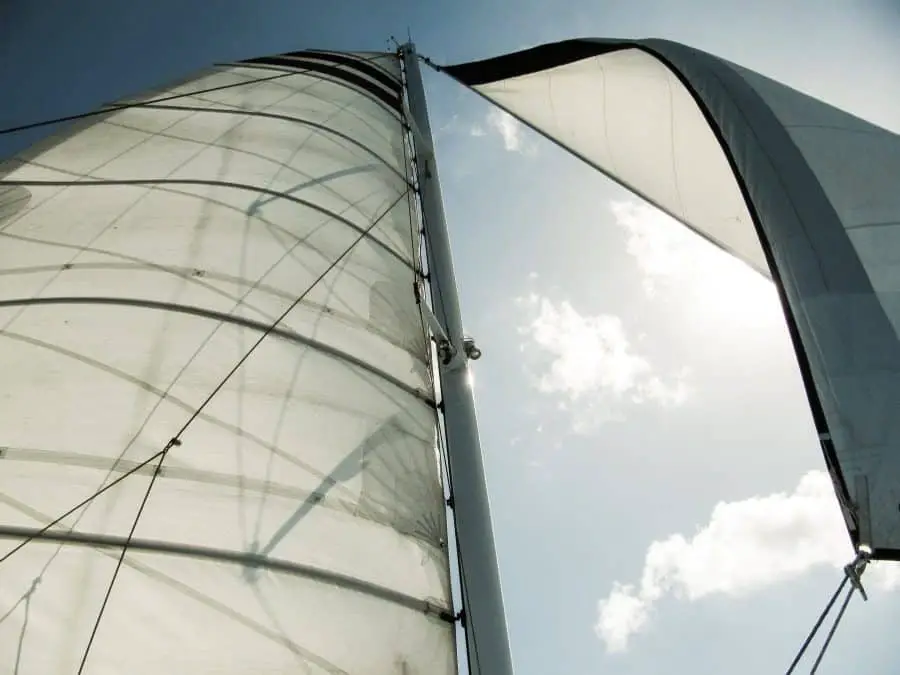
Learning about how there were different types of sails on sailboats for me was a bit strange at first. I thought something along the lines of “Don’t you just need to put some fabric on some polls and grab the wind?” Obviously, there’s far more to it than that.
So what are the most popular types of sails on sailboats? The mainsail, headsail (or jib), genoa, spinnaker, and gennaker are the most popular types of sails on sailboats. There are also a number of different configurations when considering the type of sail and mast in use including a sloop, fractional rig sloop, cutter, ketch, schooner, yawl, and cat.
Simply put, different sailboat sails serve different purposes when out on the water.
The sail is kind of like the “engine” of your sailboat (of course, sailboats can have actual engines) in that it’s the main source of forward propulsion.
So, it’s important to know when best to use either type of sail and why including the many different names of sails on a ship.
Types of Sails
There are a number of reasons why you’d want to use one sail over another, but the most important points to consider have to do with the point of sail you’re sailing in and the wind strength.
Maybe you need downwind sails, square sails, or a triangular sail. Maybe a unique sail shape, sail cloth, or sail area. With that in mind, let’s check out the different sail types!
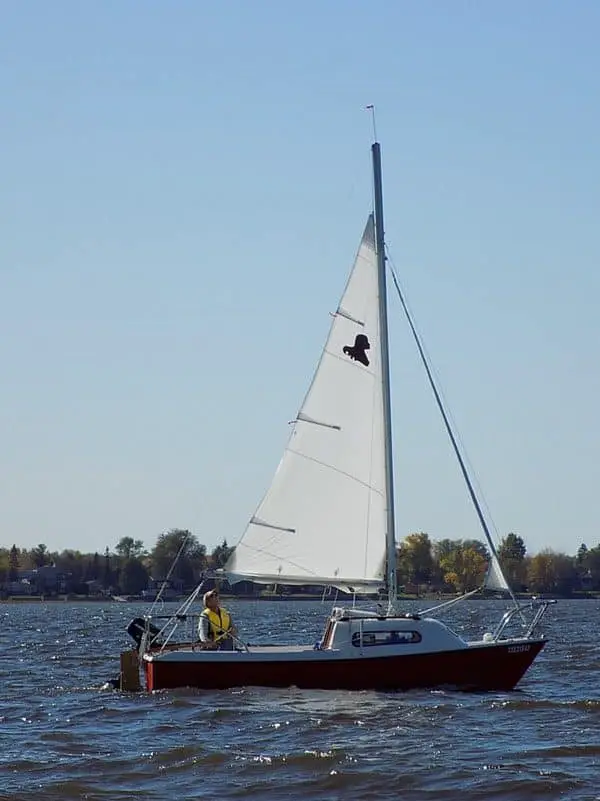
The mainsail is by far the most popular type of sail on sailboats and is often the first image that comes to mind when thinking about a sailboat.
Mainsails are found behind the mast and attached to the boom, which makes it a common part of the sailboat to keep an eye on as it takes up a lot of real estate on a boat with sails especially during a sail tack.
Mainsails are able to cover a lot of surface area with respect to incoming winds, especially since they’re attached to the boom.
The fact that they have a large surface area means they don’t require very strong winds to provide good forward propulsion on a sailboat.
Also, since the position of the mainsail can be easily configured thanks to the boom, all points of sail are achievable.
Headsail/Jib

The headsail (or jib) is probably the second most popular type of sail on sailboats since it usually accompanies the mainsail.
The headsail is always placed at the front of the mast and can cover a good amount of the bow of the sailboat. It’s also smaller than a mainsail, making it more portable and easy to work with.
Headsails aren’t as big as mainsails, therefore they have a smaller surface area which results in the fact that they’re not capable of catching as much wind as a mainsail.
This is an important point though since if the current wind is exceptionally strong and your mainsail has been trimmed as much as possible, being able to put away your mainsail and depend on your headsail alone is an excellent strategy to reduce speed.
When the wind is just too strong to keep your mainsail out, putting it away and using only your headsail is a great option.
You won’t be grabbing as much wind as with the mainsail and you’ll be able to have a much more enjoyable (and safer!) sailing experience.
One of the most picturesque sailing images one can conjure up is the one with a sailboat using a genoa sail (see the image above on the right).
A genoa is a type of large jib that’s attached to the front of the forestay just like a headsail.
One of the main differences with the genoa sail is that it’s bigger than the normal headsail and oftentimes extends behind the mast partially or completely covering the mainsail. It actually used to be called an “overlapping jib”.
Using a genoa sail means you have light to medium winds and your sailboat is more or less in a dead run point of sail (wind coming directly from the rear or sailing downwind).
Since the surface area of a genoa sail is so large, it’s important only to use it when winds are relatively low. Otherwise, you’ll be moving exceptionally fast resulting in a potentially risky situation.
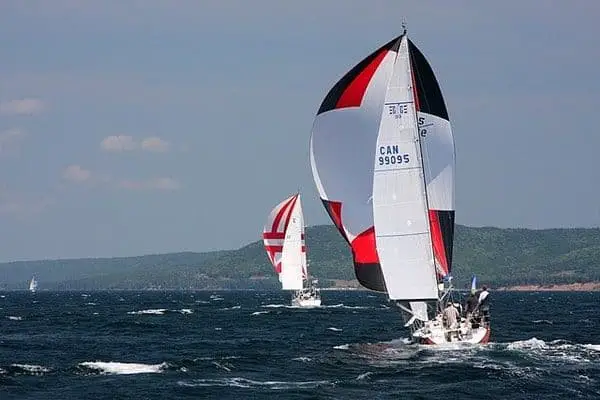
A spinnaker sail is a fun sail to use since it’s quite large, colorful, and can pick up a lot of wind.
Unlike a genoa sail, they’re often symmetrical making them more sensitive to the reaching points of sail and thus more appropriate for the running point of sail. They’re also lighter and have a “kite” kind of feel to them.
The reason they resemble a “kite” is not only that they’re generally lighter and more colorful than other types of jibs, but also they don’t cover the mast like a genoa sail.
Instead, they don’t attach to the forestay and stretch out toward and past the bow of a sailboat. Since they’re bigger than genoa sails, you want to be even more careful to only use them in relatively low and non-volatile wind environments.
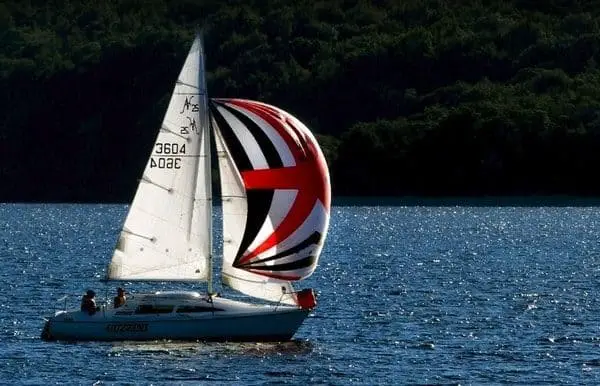
A gennaker sail is a more recent type of sail on sailboats since they were developed around 1990.
Gennakers are a cross between genoa and spinnaker sails (as the name might suggest), which are big like a spinnaker, aren’t as symmetric as a spinnaker, and aren’t attached to the forestay like a genoa sail or headsail.
The reason for the invention of the gennaker is that sailors wanted to take advantage of lighter winds without having to resort to using a spinnaker if the winds change from a pure dead run to more of a reaching point of sail.
All in all, the gennaker sail is able to bridge the performance gap between a genoa and spinnaker sail in terms of being able to take on a more flexible point of sail while taking advantage of relatively softer winds.
Popular Sail and Mast Configurations
Now that you’re familiar with the most popular types of sails on a sailboat, it’s good to get an idea of how these sail types relate to the configuration of a sailboat’s mast.
There are a huge number of combinations when it comes to sails and mast configurations, so I thought I’d lay out the most popular ones you’ll likely run into out on the water.
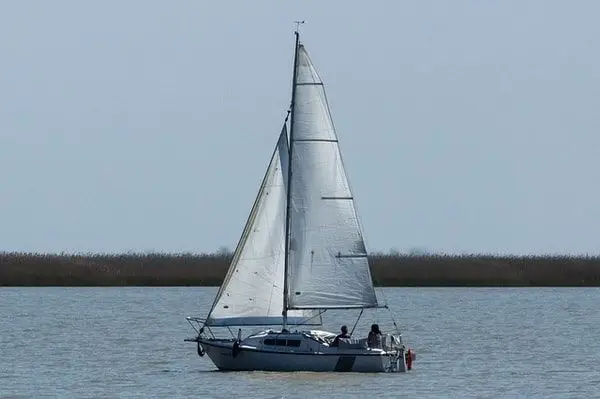
A sloop is the most common type of sail and mast configuration for sailboats. The sloop is the classic single mast, double sail setup.
The sails on a sloop consist of a mainsail and a headsail. The headsail can be different types of jibs, including the genoa, spinnaker, or gennaker sails. The headsail is connected to the forestay on the mast and runs all the way to the top of the mast.
Fractional Rig Sloop
Similar to a sloop, a fractional rig sloop has a single mast, double sail setup. The only difference, however, is that the forestay doesn’t reach the top of the mast, resulting in the headsail being restricted to a fractional amount of space a normal sloop would allow for.
This reduction of surface area for the headsail means that less wind can be captured and, thus, reduced sailboat speed.
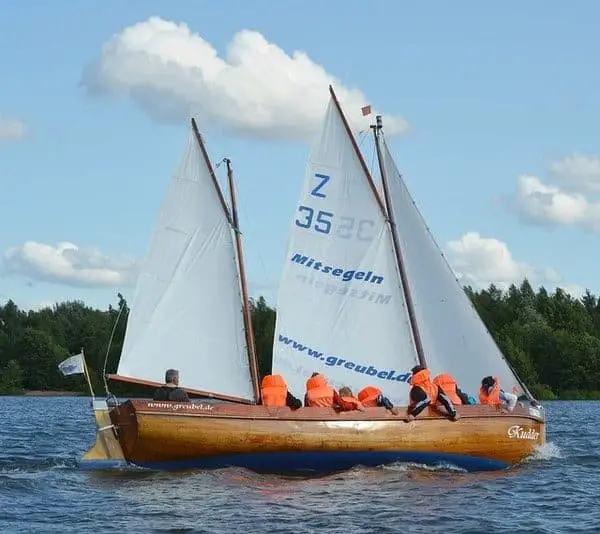
A cutter is an interesting setup since it’s just like the sloop and fractional rig sloop setup, but instead of one forestay it has two. With two forestays on the mast, cutters are able to house two headsails.
This can be a preferred setup because it allows for easy cruising due to it offering a diverse combination of points of sail for different strengths of wind.
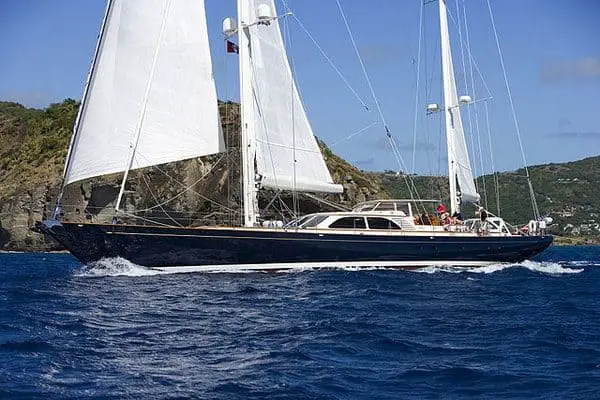
A ketch is a less common setup when compared to the previous setups since it has two masts.
Just like a sloop, it has a mast that allows for a mainsail and headsail with a full range forestay, but it also has a smaller sized mast between the mainmast and the stern of the sailboat.
This mast configuration was commonly used in Northern European freighter and fishing boats and is called the mizzen mast.
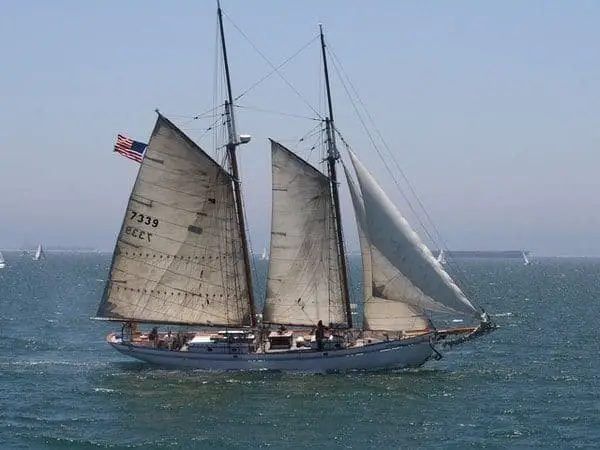
If you’ve ever seen Pirates of the Carribean, you’ll have seen almost nothing but schooners. A schooner is when a sailboat has two or more masts, similar to a ketch, while having a number of sails to manage.
The main differences between a ketch and a schooner are that a schooner’s aft mast (the rear mast) is taller than the forward mast and a schooner can have up to six masts some including a square sail or two. This makes names of sails on a schooner the fore and aft sail (or fore and aft rig).
A yawl is almost identical to a ketch with the only difference being that the mizzen mast is located directly behind the sailboat’s rudder post. In terms of a ketch vs yawl, the mizzen sail is also much smaller than the mizzen sail on a ketch due to its position on the sailboat.
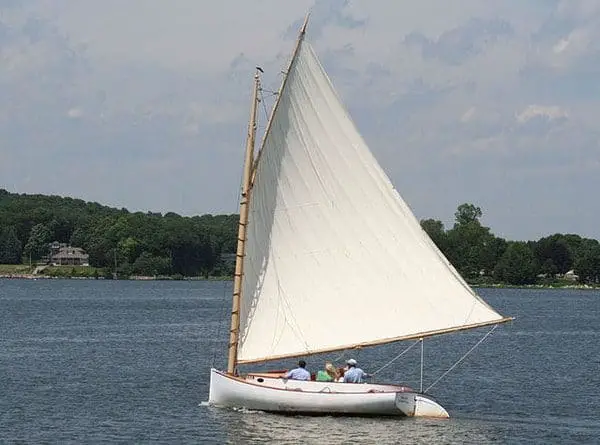
A cat has one mast and one sail with the mast being positioned at the bow of the sailboat. This mast configuration is most commonly found on smaller sailboats, especially dingy sailboats. These types of sailboats are colloquially called “catboats”.
Get the very best sailing stuff straight to your inbox
Nomadic sailing.
At Nomadic Sailing, we're all about helping the community learn all there is to know about sailing. From learning how to sail to popular and lesser-known destinations to essential sailing gear and more.
Quick Links
Business address.
1200 Fourth Street #1141 Key West, FL 33040 United States
Copyright © 2024 Nomadic Sailing. All rights reserved. Nomadic Sailing is a participant in the Amazon Services LLC Associates Program, an affiliate advertising program designed to provide a means to earn fees by linking to Amazon.com and affiliated sites.
Sail Types: A Comprehensive Guide to 8 Types of Sails
Sailboats come in all shapes and sizes. And that means there are many types of sails on the market! For those who might not know, sails are made of canvas and use wind power to propel sailboats through the water.
Understandably, different sails are required for different types of sailboats . And sailboats are categorized by the number of hulls they have. Monohulls have a single-hull design, catamarans have two hulls, and trimarans have three. Generally, sailors use catamarans for upwind sailing (but they can be used to sail downwind in certain conditions).
The type of sail you'll need for your sailboat depends on the kind of sailboat you have. Additionally, sails are highly dependent on the wind and weather conditions. Therefore, it's always a good idea to have different types of sails on board to navigate the ever-changing weather conditions.
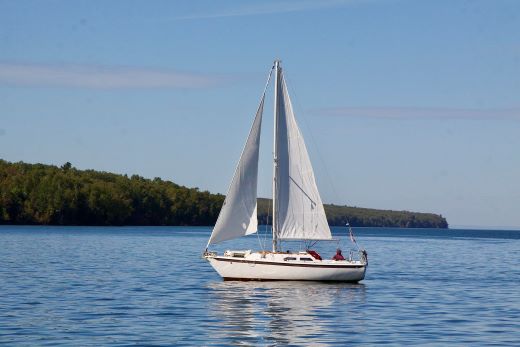
8 Types of Sails for Sailboats
As mentioned, you should carry multiple sails when sailing to prepare for various weather conditions. Here's a brief overview of the types of sails for sailboats:
1. Mainsails
The mainsail is the largest and most important sail. Therefore, it's probably the first sail to come to mind when you think of camping. Typically, it's situated directly behind the mast — connected to the boom — and uses wind energy to move the vessel. The mainsail plays a significant role in tacking and gybing, making it essential for any voyage.
Since the mainsail is a larger sail, it doesn't require wind to propel it forward. And the fact that it can be moved by moving the boom makes it uber-easy to operate.
Learn More About Sailing
2. Headsail
The headsail often accompanies the mainsail, though it is smaller in size. Regardless of your sailboat type, the headsail is positioned at the front of the mast – over the sailboat's bow.
Because headsails are small, they are helpful when navigating through windy conditions. Smaller sails catch less wind, preventing them from propelling your boat as strongly as larger sails. Additionally, headsails help lift, balance, and protect the vessel from inclement weather conditions.
While the term 'headsail' refers to any sail in front of the mast, the jib is the most common type of headsail. (And when a jib is so large that it overlaps the mast, it's called a genoa.)
Learn More About Sailboats
3. Genoa
The genoa is a large sail that attaches to the front of the forestay. (In this instance, it's similar to a headsail.) However, the genoa is larger than the headsail and overlaps the mainsail partially or completely to help the boat go faster.
Genoa sails are useful when sailing through light or medium wind. You can also use it when the wind comes directly from the rear. If you use a Genoa sail during high winds, you'll probably start sailing too quickly and put yourself and your boat at risk.
4. Spinnaker
The spinnaker is a large and whimsical (often colorful) sail. Spinnaker sails are usually symmetrical, allowing them to reach different points of sail. Generally, these are lighter sails and don't cover the mast like the genoa.
Because spinnaker sails are on the larger side, you have to be incredibly careful with them. Don't use them in rough conditions. Instead, save them for sailing in low winds and calm seas.
5. Gennaker
As the name suggests, the Gennaker sail combines a spinnaker and a Genoa sail. They are as large as the spinnaker, although they're not symmetrical.
They come in handy whenever the wind changes from a pure dead run to a reaching point of sail, as sailors can navigate various wind types with the same sail. It's still only meant for lighter and milder winds, but it's more versatile than the spinnaker and genoa.
6. Light Air Sails
Light air sails are useful in calmer conditions when the headsail and mainsail alone aren't cutting it. They include:
- Code Zero : A code zero sail is a gennaker sail ideal for sailing in light to mild winds. It's designed to create lift and boost boat speed whenever regular sails don't generate enough power. For that reason, many racers and cruisers use code zero sails to improve performance and gain control in various situations.
- Windseeker : This small, special sail is reserved for no wind or light wind. Essentially, it helps boats remain maneuverable in extremely calm conditions. And for that reason, it's valuable to long-distance sailors.
7. Storm Jib
Storm jibs can be used as a headsail whenever the weather is particularly rough and windy. Because it functions as a safety seal, it prevents boats from capsizing by reducing the sail area exposed to the wind. Therefore, it's a necessary sail for every sailor.
Read Next: Boating in Inclement Weather
During strong winds and storms, sailors can raise a trysail — a small, triangular sail near the boat's stern — for better control and stability. Generally, sailors do this whenever the mainsail becomes too large and challenging to maneuver.
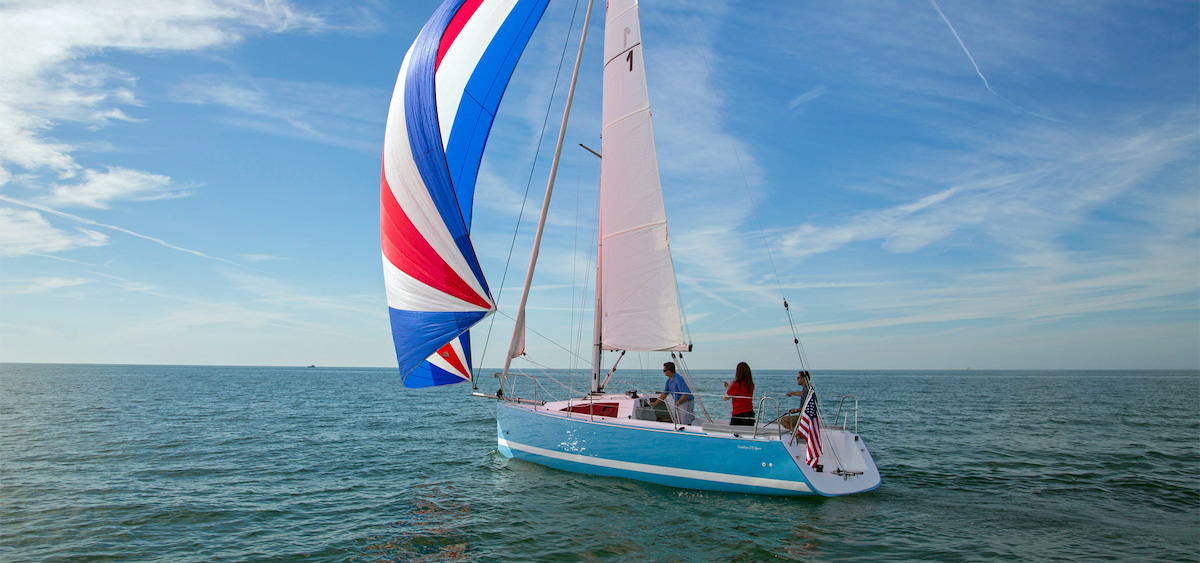
Join Our Newsletter!
Get community news, buying bargains, and how-to guides at your fingertips.

Types of Sails: A Comprehensive Guide
In the enchanting world of sailboat dynamics, where the dance between wind and water takes center stage, the significance of sails cannot be overstated. Like the wings of a bird, these meticulously crafted sails unfurl to catch the slightest whisper of breeze, converting it into a powerful forward thrust that carries us through the vast expanse of the ocean. They are the very essence of a sailboat, the conduits through which dreams and aspirations set sail.
Join us on a captivating voyage as we unfurl the secrets of the myriad types of sails adorning the mastheads of sailboats across the globe. From the grandeur of the mainsail, proudly dominating the skyline, to the nimble headsails that steer with precision, and the enigmatic mizzensails that add an extra touch of finesse, we shall embark on a comprehensive exploration of the diverse array of sail types.
Different Types of Sails on a Sailboat: Why Use Different Sails at All?
Different sail types for different wind conditions.
Triangular sails, such as the mainsail and jib, are commonly used on modern sailboats to optimize performance when sailing upwind. The shape of these sails helps to create lift, which propels the boat forward even against the wind’s direction. The mainsail is attached to the mast at the front edge and a boom at the bottom. Jibs, on the other hand, are headsails that are attached to a stay near the bow of the boat.
Balloon sails, like spinnaker sails, are designed for downwind sailing and catching more wind to increase boat speed when sailing with the wind behind it. These types of sails have a large surface area that allows them to catch more wind than triangular sails. Spinnaker sails can come in different shapes depending on their intended use and can be flown from a spinnaker pole or directly from the bow.
Sail Plans: Different Combinations for Different Boats
Sail plans refer to how different types of sails are arranged and combined on a sailing craft. Sail plans can vary depending on specific design features and intended use of boats. For example, some boats may have multiple masts with several triangular-shaped sails attached while others may only have one mast with one triangular sail (mainsail) and one square sail (spinnaker). The combination of different types of sails can also affect how easy it is to handle a boat under certain conditions.
Understanding Sail Anatomy
Head, tack, foot, luff, leech, and clew. These are the different parts that make up a sail’s anatomy. But what exactly are they and why are they important? In this section, we’ll take a closer look at each part and how it contributes to the performance of a sailboat.

The Head: The Top of the Sail
Starting from the top, we have the head of the sail. This is where the halyard (the rope or wire used to hoist the sail) is attached. The head determines how high or low the sail sits on its mast. A higher head means more power but less control over the sail’s shape. Conversely, a lower head provides better control but less power.
The Tack: The Lower Front Corner of the Sail
Next is the tack which is found at the lower front corner of most sails. It’s where one end of a line called a “sheet” attaches to control how much wind enters through this corner of your sail. Adjusting your sheet will affect your boat’s speed and direction.
The Foot: The Bottom of the Sail
At the bottom edge of any sail lies its foot which helps determine its overall shape and size. Generally speaking, longer feet result in larger sails that provide more power while shorter feet result in smaller sails with better maneuverability.
The Luff: The Forward Edge of the Sail
The forward edge of any sail is called its luff which runs along its mast track or forestay depending on what type of rigging you have set up on your boat. It helps maintain proper airflow over your sails by keeping them from flapping around too much in high winds.
The Leech: The Back Edge of Your Sail
Opposite from your luff is your leech – or back edge – which helps create lift by allowing air to flow smoothly over your sail. A longer leech will result in a more powerful sail, while a shorter one will provide better control and maneuverability.
The Clew: The Bottom Back Corner of Your Sail
Lastly, we have the clew which is found at the bottom back corner of most sails. It’s where the other end of your sheet attaches to control how much wind enters through this corner of your sail. Adjusting your sheet here can affect how well you’re able to steer your boat.
Primary Sail Types
The main sail is attached to the main mast and boom and can be adjusted to match the wind conditions. Its main purpose is to keep the boat steady and under control by providing stability to the stern (back) of the vessel.
There are several variations of mainsails that sailors can choose from depending on their needs. One popular type of mainsail is an in-mast furling mainsail. This type of sail can be easily furled and unfurled by pulling a line, making it ideal for short-handed sailing or cruising. Another variation is a slab reefing mainsail, which has horizontal strips called battens that help maintain its shape. Finally, there is also a boom furling mainsail, which uses a roller system inside the boom to make it easier to handle.
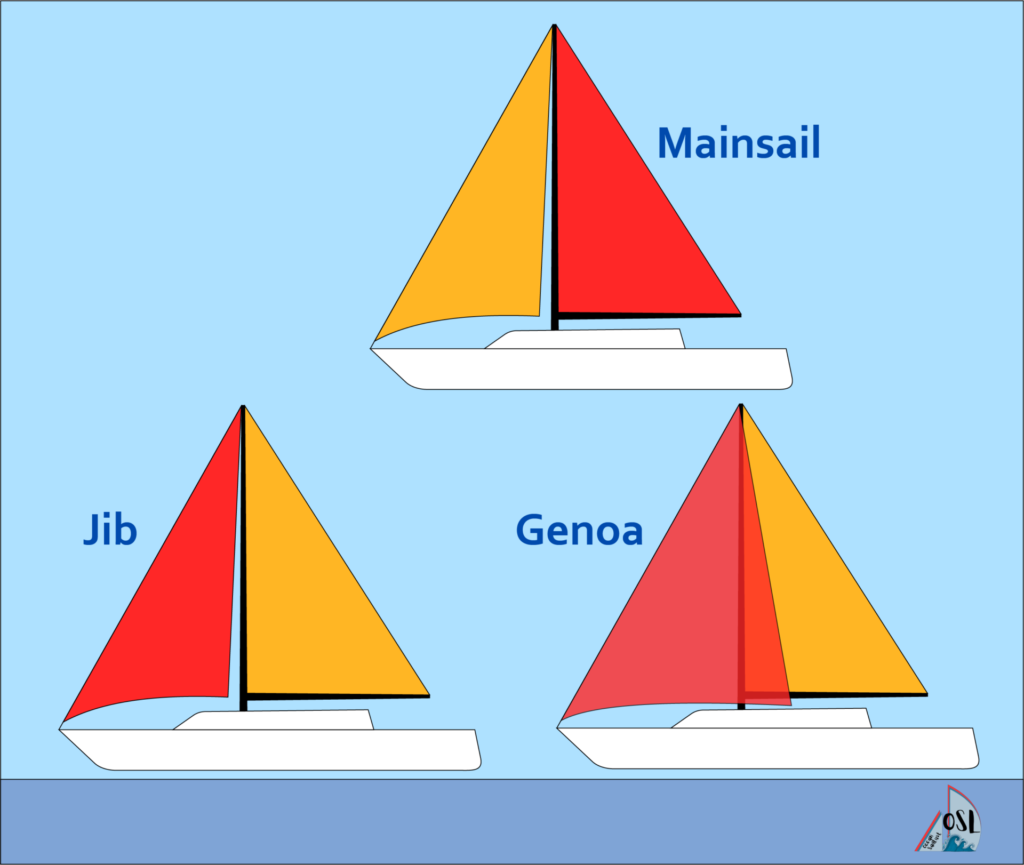
A headsail is any sail located forward of the mast on a sailing vessel. These sails are designed to work in conjunction with the main sail to provide optimal performance under varying wind conditions. There are several types of headsails available, each with its own unique characteristics and purposes.
One popular type of headsail is known as a genoa. This large foresail extends beyond the mast and overlaps with the main sail, providing additional power when sailing upwind or reaching across wind angles. Genoas come in various sizes ranging from 110% up to 150%, depending on how much overlap you want.
Another common type of headsail is called a jib. This smaller foresail does not overlap with the main sail but instead works in conjunction with it. The jib is typically used in higher wind conditions when a smaller sail area is needed to maintain control of the boat.
A staysail is a smaller sail located between the mast and the forestay. This type of headsail is typically used on larger boats to provide additional power when sailing upwind or reaching across wind angles. Staysails are often used in conjunction with other sails, such as a genoa or main sail.
Finally, there is also a mizzensail, which is located aft of the main mast on ketches and yawls. This sail provides additional power when sailing downwind or reaching across wind angles. Mizzensails come in various sizes and can be either fully battened or free-flying.
Lightwind Sails
Spinnaker sails are a type of downwind sail that can be used to increase boat speed when sailing in light winds. They are typically used in wind conditions below 10 knots, which are considered light air sails. Spinnakers come in two types: symmetrical and asymmetrical.

Symmetrical vs Asymmetrical Spinnaker
The symmetrical spinnaker is designed to sail directly downwind or with the wind coming from behind the boat. It is shaped like a balloon, with equal amounts of material on both sides of the sail. The sail is attached to a spinnaker pole, which extends out from the mast and holds the sail away from the boat.
Asymmetrical spinnakers, on the other hand, are designed for sailing at angles off the wind. They have an uneven shape, with more material on one side than the other. This design allows them to be flown without a spinnaker pole, making them easier to handle for smaller crews.
Another type of downwind sail is called a gennaker. Gennakers are similar to asymmetrical spinnakers but have a hybrid characteristic between a spinnaker and a genua. They are designed for reaching or running downwind at higher speeds than traditional cruising chutes or asymmetric spinnakers.
For those who prefer an even more user-friendly option than asymmetrical spinnakers or gennakers, parasailors might be what you’re looking for! A parasailor combines aspects of both a traditional spinnaker and a parachute into one easy-to-use package. The unique design of this sail makes it ideal for use in light winds when other sails may not perform well enough.
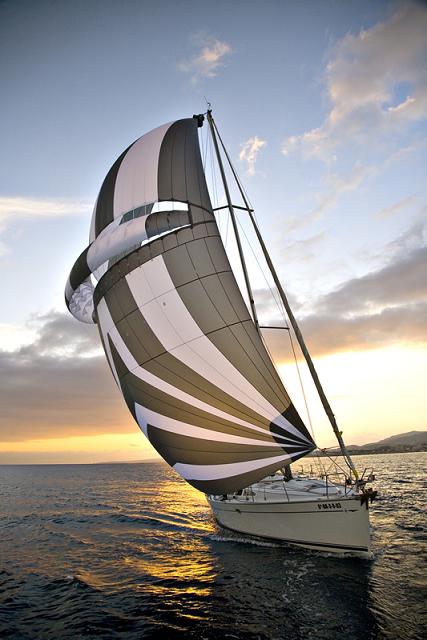
Finally, there’s another type of upwind/downwind sail called the code zero. Code zeros are designed to be used in light winds when sailing upwind, but they can also be used for reaching and running downwind. These sails have a flat shape that allows them to generate lift even in very light wind conditions.
Heavy Weather Sails
Heavy weather sailing is a challenging and potentially dangerous activity. The use of heavy weather sails, such as trysails, is crucial to ensure the safety of sailors and their vessels.
A trysail is a small triangular sail made of heavy-duty material, typically spinnaker cloth or other lightweight fabric. It is designed to be used in stormy weather conditions when winds are high and the seas are rough.
The role of a trysail is to provide an alternative source of propulsion when the main sail or jib cannot be used. In addition, it helps reduce the heeling effect on the vessel caused by strong winds. Trysails are rigged using a separate halyard and can be set up quickly when needed.
A trysail should be used in severe weather conditions when winds exceed 40 knots or more. It is recommended that sailors practice setting up their trysail before they need it so that they can do it quickly and efficiently in an emergency situation.

Another type of heavy weather sail that every sailor should have on board is a storm jib. This sail is typically much smaller than a regular jib and made from heavier materials such as Dacron or nylon. Its purpose is to provide additional stability during high wind speeds and rough seas.
The features of a storm jib include its size, shape, and weight distribution. It has a large luff (the leading edge) which allows it to be hoisted higher up on the rigging than other sails. This helps keep the boat stable during high-speed sailing in strong winds.
A storm jib should be used in extreme weather conditions where wind speeds exceed 50 knots or more. When using this sail, it is important to ensure that the halyard is properly tensioned and that the sail is sheeted in tightly. This will help prevent any unnecessary movement or fluttering of the sail.
Overview Common Sail Types
100% of mainsail
Light – High
100% of foretriangle
Moderate – High
triangular, overlapping
110% – 150% of foretriangle
Light – Moderate
60% – 80% of foretriangle
Close Reach – Broad Reach
Lightwind, Downwind
balloon shape, free flying
200% of mainsail (or even more)
Broad Reach, Running
parachute shape
100% of spinnaker
80% – 85% of spinnaker
Lightwind, Upwind
75% of spinnaker
30% – 60% of mainsail
Mainsail, heavy weather
17.5% of mainsail (or less)
Headsail, heavy weather
max. 65% of the hight of the foretriangle
Unconventional Sails
Wing sails are a type of sail design that is not commonly used in traditional sailboat designs. They are essentially vertical airfoils that generate lift and propulsion by directing the wind over the surface of the sail. Wing sails have become increasingly popular in modern sailing craft, particularly in high-performance racing boats.
One of the main advantages of wing sails is their ability to produce a significant amount of power with very little heeling force. This means that they can be used effectively in high-wind conditions without causing the boat to tip over. Additionally, wing sails are highly efficient at sailing upwind, which allows sailors to point higher into the wind than with other types of sails.
While wing sails may seem like a relatively new concept, they have actually been around for quite some time. The first recorded use of a wing sail was by German engineer Wolfgang Zimmermann in 1959. Since then, many different variations on the design have been developed and tested.

Kite sails are another unconventional type of sail that has gained popularity in recent years. Unlike traditional downwind sails such as spinnaker or parasailors, kite sails are flown from a line attached to the bow of the boat and do not require a mast or boom.
Sail Materials and Technology
Traditional sail materials.
Sails have been used for thousands of years to harness the power of the wind and propel boats across water. Traditional sail materials were flax, hemp, or cotton. These natural fibers were woven together to create a strong, yet flexible material that could withstand the harsh conditions at sea. However, as technology advanced and sailors began to demand more from their sails, new materials were developed.
Modern Sail Materials
Modern sailboats use synthetic materials such as polyester, nylon, or laminated fabrics for their sails. These materials are lightweight and incredibly strong, allowing sailors to achieve greater speeds with less effort. They are also more durable than traditional sail materials and can withstand prolonged exposure to sunlight and saltwater.
Popular Sail and Mast Configurations

The sloop rig is one of the most popular sail plans for modern sailboats. It features a single mast and one headsail, like a jib or genoa. The mainsail is typically triangular in shape and hoisted up the main mast using a backstay to support it. The jib or genoa is attached to the forestay that runs from the top of the mast to the bow of the boat.
Another popular sail plan is the cutter rig, which also features a single mast but has two headsails – an overlapping jib and a smaller staysail. The mainsail is still triangular in shape and hoisted up the main mast with a backstay for support.
Moving onto two-masted rigs, we have ketch rig, which features a main mast and a shorter mizzen mast located in front of the rudder. The mainsail is still triangular in shape and hoisted up the main mast with a backstay for support, while the mizzen sail is generally smaller and triangular or quadrilateral in shape.
Lastly, we have the yawl rig which is similar to the ketch rig but has its shorter mizzenmast located aft of the rudder. The mainsail is still triangular in shape and hoisted up the main mast with a backstay for support, while the mizzen sail is generally smaller and triangular or quadrilateral in shape.
Conclusion: Understanding the Different Types of Sails
Understanding the Different Types of Sails is crucial for any sailor who wants to optimize their performance and safety on the water. Whether you’re racing, cruising or simply enjoying a day out on your sailboat, having the right sails for the conditions can make all the difference.
Ultimately, understanding the different types of sails is essential for any sailor looking to improve their skills on the water. By selecting the right sail for your boat and conditions, you can optimize your performance while staying safe and comfortable during your time at sea.
So whether you’re a seasoned sailor or just starting out, take some time to explore the various types of sails available and find the ones that work best for you. With a little knowledge and experience under your belt, you’ll be well on your way to mastering this exciting sport!
Similar Posts

How do Boats Float? Exploring the Science Behind Buoyancy
Sailboats float because the average density of the boat is less than the density of water. When boats displace as much water as it weights, this is known as the buoyancy force generated by Archimedes’ principle. If you’ve ever wondered how do boats float and therefor enable us to embark on thrilling water adventures, you’ve…

Mainsail Furling Systems – Which one is right for you?
With the variety of options of mainsail furling systems available, including slab, in-boom, and in-mast systems, it can be challenging to determine which one best suits your needs. In this comprehensive guide, we will explore the pros and cons of each system, enabling you to make an informed decision that aligns with your sailing requirements….

Basic Sailing Terminology: Sailboat Parts Explained
Sailing is a timeless activity that has captivated the hearts of adventurous souls for centuries. But, let’s face it, for beginners, sailing can be as intimidating as trying to navigate through a dark, labyrinthine maze with a blindfold on. The vast array of sailing terminology, sailboat parts and jargon can seem like a foreign language…
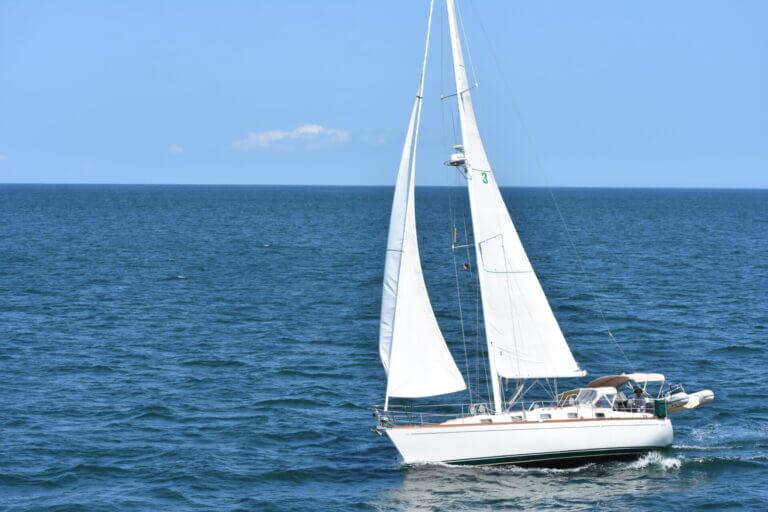
What is a Sloop? Definition, Types and History
A sloop is a type of sailboat that has a single mast and a fore-and-aft rig. Sloops are a type of sailboat that has been around for centuries. They are known for their versatility and ease of handling, making them popular among sailors of all skill levels. Sloops have a single mast and a fore-and-aft…

What is a Keel?: The Backbone of a Ship
As ships sail through tumultuous seas, their stability and maneuverability are tested to the fullest extent. The intricate design and engineering that go into a ship’s construction ensure that it can withstand the forces of nature and navigate through any challenging conditions. One of the most critical components of a ship’s design is the keel,…
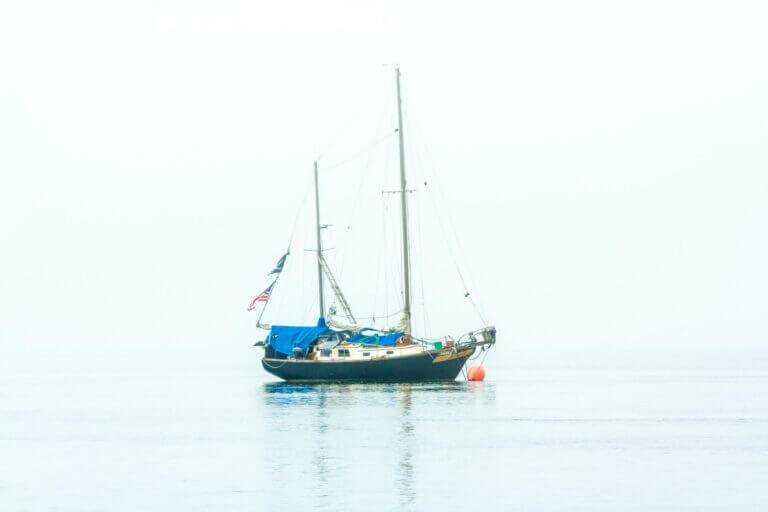
What is a Ketch Sailboat?
Ketch boats are frequently seen in certain regions and offer various advantages in terms of handling. However, what is a ketch and how does it stand out? A ketch is a sailboat with two masts. The mainmast is shorter than the mast on a sloop, and the mizzenmast aft is shorter than the mainmast. Ketches…

Boat Sailor
Type of sails: a comprehensive guide to sails.
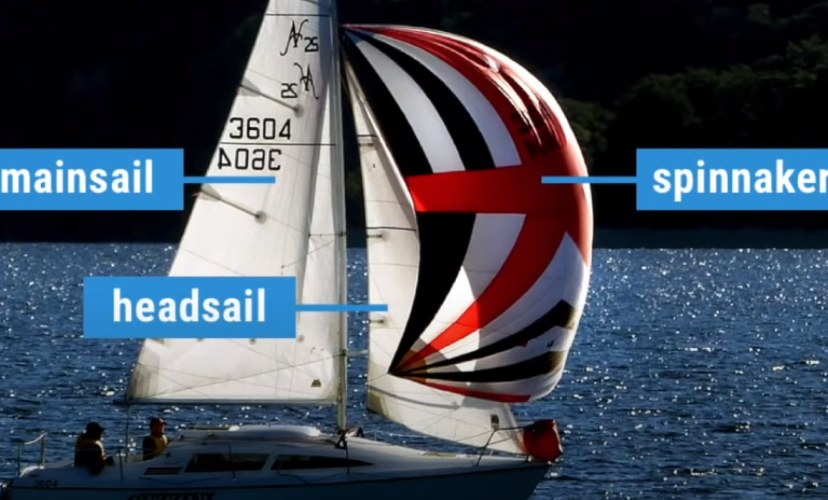
As an avid sailing enthusiast and advisor, I am excited to share a complete guide to different types of sails for sailboats. Choosing the right sail is crucial for optimizing sailing performance and ensuring safety in various weather conditions. In this article, we will explore the main type of sails, their advantages, and when to use them effectively. So let’s set sail and delve into the world of sails!
The Main Types of Sails
Mainsail: The Backbone of Sailing
The mainsail, being the largest and most essential sail on a sailboat, plays a central role in driving the vessel forward. It is a fore-and-aft rigged sail attached to the mast and the boom. Mainsails are incredibly versatile and suitable for various wind conditions, making them the go-to sail for most situations. They are easy to steer, even in light winds, making them ideal for relaxed cruising.
Headsail/Jib: Your Go-To Sail for Safety
The headsail, also known as a jib , is a smaller sail located forward of the mast. Its primary purpose is to maintain stability and balance the boat in strong winds. When the wind picks up, the mainsail can become overpowering, and that’s when the headsail steps in to ensure safe and controlled sailing. It’s like having a safety net during rough weather conditions.
Genoa: Power and Versatility Combined
The genoa is a type of headsail that offers more sail area and power compared to a standard jib. It’s perfect for boosting speed and maneuverability, especially in light winds. Genoas are incredibly versatile, making them an excellent choice for sailors who want to get the most out of their sailboat in various conditions.
Sailing Ship Rigs: A Historical Perspective
In the era of the “golden age of sail,” different sail plans were used on sailing vessels to optimize their performance and accommodate smaller crews.
Fore and Aft Rig
The fore-and-aft rig, consisting of sails aligned along the length of the boat, includes popular designs like schooners and sloops. These rigs required smaller crews and were well-suited for coastal and fishing trades.
Square topsail schooners with athwart sails were also prevalent during that time. They were used for cargo ships and long voyages, but their complex rigging required larger crews to handle the sails effectively.
The Golden Age of Sail
This period marked the peak of sailing ship technology and saw remarkable advancements in shipbuilding and sail design. It’s a fascinating chapter in the history of sailing that continues to inspire sailors to this day.
Type of Sails Names: Decoding the Terminology
Mainsail and Foresail
The mainsail, as mentioned earlier, is the principal sail that catches the wind to move the boat forward. Foresail is a general term that includes various sails positioned near the bow of the sailboat, such as the jib and genoa.
Genoa and Jib
The genoa and jib are both types of foresails. The genoa is larger and overlaps the mainsail, providing additional power and efficiency. The jib, on the other hand, is smaller and is used when the wind is stronger.
Staysail and Spinnaker
Staysails are triangular sails set between masts and stays, used to improve stability and balance. Spinnakers are large, balloon-shaped sails used for downwind sailing, providing an extra boost of speed.
Choosing the Right Sail for Different Conditions
Sailing in Light Winds
In light winds, the mainsail is your best friend. It’s highly efficient and capable of catching even the slightest breeze, propelling the boat forward smoothly.
Sailing in Strong Winds
When the wind picks up, it’s time to rely on the headsail or jib. These sails provide a reduced surface area, preventing the boat from becoming overpowered and ensuring a controlled sail.
Navigating Challenging Weather
Different weather conditions call for different sails. Understanding the intricacies of each sail and when to use them will help you navigate through challenging weather with ease.
Type of Sails Materials: Quality Matters
Traditional Canvas Sails
Traditional canvas sails, made of materials like cotton or linen, were commonly used in the past. While they offer a classic charm, their performance and durability have limitations compared to modern sail materials.
Modern Sail Materials
Today, sail manufacturers utilize advanced materials like Dacron, Mylar, and Kevlar. These materials offer superior strength, low stretch, and better shape retention, contributing to improved sailing performance.
Pros and Cons of Each Material
Understanding the pros and cons of different sail materials will help you make an informed decision when purchasing or maintaining your sails.
Understanding Sail Shapes and Configurations
The Science of Sail Shape
Sail shape is crucial for maximizing performance and efficiency. Properly trimmed sails allow you to sail efficiently, whether you’re sailing upwind or downwind.
Balancing Performance and Stability
Finding the right balance between performance and stability is essential. Adjusting sail shape and trim can significantly impact your sailing experience.
Fine-Tuning Sail Trim
Sail trim is an art form. Mastering the art of fine-tuning sail trim will make you a more skilled sailor and enhance your overall sailing experience.
The Evolution of Sail Designs
From Classic to Cutting-Edge
Sail design has come a long way. From classic traditional sails to modern, innovative designs, sailmaking has witnessed significant evolution.
How Technology Impacted Sail Design
Technological advancements have revolutionized sailmaking, resulting in more efficient, aerodynamic, and performance-oriented sails.
Innovation in Sailmaking
Sailmakers are continually exploring new materials and construction techniques to create sails that are lighter, stronger, and more efficient than ever before.
Sailing Techniques: Getting the Most Out of Your Sails
Tacking and Gybing
Tacking and gybing are essential sailing maneuvers used to change the direction of the boat and optimize the use of wind.
Maximizing Speed
To get the most out of your sails, understanding how to trim them properly and sail at optimal angles is crucial for achieving higher speeds.
Safety Precautions
Sailing is exhilarating, but safety should always be a top priority. Understanding safety procedures and precautions will ensure a safe and enjoyable sailing experience.
Maintaining and Storing Sails
Sail Care and Maintenance
Proper care and maintenance are essential to prolong the life of your sails and keep them in top condition.
Storing Sails Properly
When not in use, storing sails correctly can prevent damage and maintain their performance over time.
Extending the Lifespan of Sails
With proper care and attention, you can extend the lifespan of your sails, making them a worthy investment.
Sustainable Sailing: Eco-Friendly Sail Materials
The Impact of Traditional Sails on the Environment
Traditional sail materials, while charming, may have a more significant environmental impact compared to modern, eco-friendly alternatives.
Eco-Friendly Sail Options
Eco-conscious sailors can explore sustainable sail materials that minimize environmental harm without compromising performance.
Embracing Sustainable Practices
As sailors, we have a responsibility to protect the oceans and environment. Embracing sustainable practices in sailing is essential for the well-being of our planet.
As we conclude this comprehensive guide to different type of sails, I hope you now have a deeper understanding of the critical role sails play in sailing. Choosing the right sail and mastering sail techniques will elevate your sailing experience to new heights. Remember, sailing is an ever-evolving journey of learning and adventure.
Which sail is best for light winds?
The mainsail is the most suitable sail for light winds as it can efficiently catch even the slightest breeze and keep the boat moving smoothly.
What is the purpose of a genoa?
The genoa is a type of sails that provides additional power and versatility, making it an excellent choice for boosting speed and maneuverability in various wind conditions.
What sail material is most durable?
Modern sail materials like Dacron and Kevlar offer superior strength and durability compared to traditional canvas sails made of cotton or linen.
How do I maintain my sails?
Proper care and maintenance, including regular cleaning and inspection, will help prolong the life of your sails and ensure they perform optimally.
Are there eco-friendly sail options?
Yes, eco-conscious sailors can opt for sustainable sail materials that minimize environmental impact, contributing to a greener and more sustainable sailing experience.

Michael Thompson
Embarking on a lifelong love affair with the sea, I found solace and exhilaration in the art of sailing. From navigating treacherous waters to harnessing the wind's untamed power, my passion has evolved into a mission to inspire others. Join me on a voyage of discovery as we explore the vast horizons of sailing's timeless allure.
More to Explore

Spiridakos Sailing Cruises: An Unforgettable Adventure
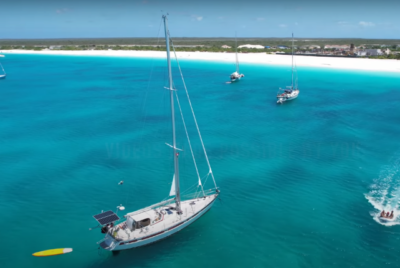
Sailing in the Caribbean
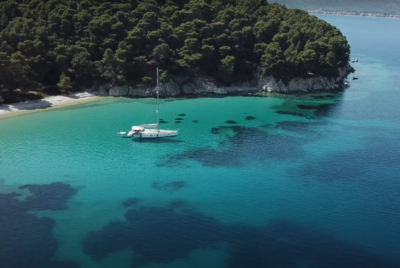
Sailing Greek Islands
The different types of sails and their uses
Discover the different types of sails and their uses to optimize your sailing performance and enjoy the freedom and fulfillment of exploring the open sea.
The Different Types of Sails and Their Uses
Sailing is an incredible way to explore the world, spend quality time with family, and embrace the freedom of the open sea. As you embark on your sailing adventure, it’s essential to understand the different types of sails and their uses. This comprehensive guide will provide you with the knowledge you need to navigate your journey confidently.
Table of Contents
Introduction to sails, symmetrical spinnakers, asymmetrical spinnakers, sail materials and construction.
Sails are the driving force behind any sailing vessel, harnessing the power of the wind to propel the boat forward. They come in various shapes, sizes, and materials, each designed for specific sailing conditions and purposes. Understanding the different types of sails and their uses will help you make informed decisions when selecting sails for your boat and optimizing your sailing performance.
The mainsail is the primary sail on a sailing vessel and is typically hoisted on the aft side of the mast. It is a triangular sail with its leading edge (or luff) attached to the mast and its foot running along the boom. Mainsails are essential for providing the boat with forward propulsion and play a significant role in steering and balancing the vessel.
There are two primary types of mainsails: full-batten and partial-batten. Full-batten mainsails have horizontal battens that run the entire width of the sail, providing additional support and shape. Partial-batten mainsails have shorter battens that only extend partway across the sail. Full-batten mainsails tend to hold their shape better and last longer, while partial-batten mainsails are lighter and easier to handle.
Headsails are sails that are set forward of the mast and are used in conjunction with the mainsail to provide additional propulsion and balance. There are several types of headsails, each with its unique characteristics and uses.
A jib is a triangular sail that is set forward of the mast and is attached to the forestay, a wire that runs from the masthead to the bow of the boat. Jibs come in various sizes, with smaller jibs being more suitable for strong winds and larger jibs providing more power in light wind conditions. Jibs are essential for upwind sailing, as they help to direct the airflow around the mainsail, increasing its efficiency.
A genoa is a type of jib that is larger than a standard jib, extending past the mast and overlapping the mainsail. Genoas are designed to provide maximum sail area and power in light to moderate wind conditions. They are particularly useful for upwind sailing, as their large size helps to generate more lift and drive the boat forward. However, genoas can be more challenging to handle than smaller jibs, especially in strong winds or when tacking.
Spinnakers are large, lightweight sails designed for downwind sailing. They are typically set forward of the jib and are not attached to the forestay. Instead, they are held out by a pole called a spinnaker pole, which is attached to the mast and the sail’s clew (the lower aft corner of the sail). Spinnakers are used to catch the wind from behind, providing significant power and speed when sailing downwind.
A gennaker, also known as a cruising spinnaker or code zero, is a hybrid sail that combines the characteristics of a genoa and a spinnaker. Gennakers are designed for reaching and downwind sailing and are typically set on a furling system, making them easier to handle than traditional spinnakers. They provide more power than a genoa in light wind conditions and are more stable and easier to control than a spinnaker.
Downwind Sails
Downwind sails are designed specifically for sailing with the wind coming from behind the boat. These sails are typically larger and lighter than upwind sails, allowing them to catch more wind and generate more power. There are two main types of downwind sails: symmetrical spinnakers and asymmetrical spinnakers.
Symmetrical spinnakers are large, balloon-shaped sails that are designed for sailing directly downwind. They are symmetrical in shape, with the sail’s centerline running vertically down the middle of the sail. Symmetrical spinnakers are held out by a spinnaker pole, which is attached to the mast and the sail’s clew. This allows the sail to catch the wind from behind, providing maximum power and speed when sailing downwind.
Asymmetrical spinnakers, also known as gennakers or A-sails, are designed for reaching and downwind sailing at angles that are not directly downwind. They are asymmetrical in shape, with a longer luff (leading edge) and a shorter leech (trailing edge). Asymmetrical spinnakers are typically set on a furling system and do not require a spinnaker pole, making them easier to handle than symmetrical spinnakers. They provide more power and stability than a genoa in light wind conditions and are more versatile than a symmetrical spinnaker.
Storm Sails
Storm sails are small, heavy-duty sails designed for use in extreme weather conditions. They are used to replace the standard sails when the wind is too strong, providing better control and reducing the risk of damage to the boat and its rigging. There are two main types of storm sails: storm jibs and trysails.
A storm jib is a small, heavy-duty jib that is used in place of the standard jib in strong winds. It is typically set on the inner forestay, closer to the mast, providing better balance and control. Storm jibs are designed to withstand high wind loads and are made from durable materials, such as heavy-duty Dacron or laminate fabrics.
A trysail, also known as a storm trysail or storm mainsail, is a small, heavy-duty sail that is used in place of the standard mainsail in extreme weather conditions. It is typically set on a separate track on the mast, allowing it to be hoisted independently of the mainsail. Trysails are designed to provide better control and balance in strong winds and are made from durable materials, such as heavy-duty Dacron or laminate fabrics.
Sails are made from various materials, each with its unique characteristics and performance attributes. The most common sail materials include Dacron, laminate fabrics, and high-performance fibers, such as carbon and aramid.
Dacron is a durable, low-stretch polyester fabric that is widely used for cruising sails. It is relatively inexpensive and provides good performance in a wide range of conditions. Laminate fabrics are made by sandwiching layers of polyester or high-performance fibers between layers of Mylar film. These sails are lighter and more resistant to stretch than Dacron sails, providing better performance and shape retention. High-performance fibers, such as carbon and aramid, are used in racing sails and offer the highest levels of strength, durability, and performance.
Sail construction techniques also play a significant role in the performance and durability of a sail. Cross-cut sails are made from panels of fabric that are sewn together horizontally, following the natural lines of the fabric’s weave. This construction method is relatively simple and inexpensive but can result in a sail that is more prone to stretch and distortion. Radial-cut sails are made from panels of fabric that radiate out from the corners of the sail, distributing the loads more evenly and providing better shape retention and performance.
Understanding the different types of sails and their uses is essential for any sailor looking to optimize their sailing performance and enjoyment. By selecting the appropriate sails for your boat and the conditions you’ll be sailing in, you’ll be better prepared to navigate the open sea and embrace the freedom and fulfillment that comes from choosing an unconventional path.

The Different Types Of Sails And When To Use Them – Complete Guide

Sail forms an integral part of a sailboat. When you sail on the open water and observe other boats (in various sizes), you’d have noticed how each boat type has a specific model of sail. If you’re a beginner in boating, you must know that there are a ton of different sails and they each have their own purpose.
As a general setup, sailboats will use three common sails, including headsail, mainsail, and specialty sail. Due to the varying wind conditions and the model of the sailboat, there are many types of sails including jib, genoa, trysail, storm jib, code zero, gennaker, and spinnaker.
While that sounds like too many models of sails, you can easily differentiate between them and choose the ideal model based on your purpose. This article guides you on this aspect. Let’s begin!
Different Types of Sails & When To Use Them
1. mainsail.
Mainsail is by far the most widely spotted sail model, and it’s usually fixed to the boom and fitted behind the mast. This offers the highest mileage to your sailboat, thereby maximizing speed and performance.
You can use a mainsail if:
- You’re concerned about the performance
- You need to go faster and utilize all wind power
- You need to steer your boat irrespective of the wind’s status
- You’ve a large boat and can offer adequate space to this sail.
This mainsail displays a wide surface area to make the most out of the available wind condition. As a result, you can steer your boat quite easily. However, the downside is its size. It is very large and hard to store if you need to take it down for some reason.
Check out my other article all about maintaing sails!
2. Headsail
Similar to a mainsail, it’s very easy to spot a head sail. Just look at the bow of the boat and see if there is a sail. If you see one then yes that’s a headsail. Also called a jib or genoa, a headsail is smaller in size compared to a mainsail and attaches in front of the mast to the forestay. The Foresail will not have a boom for the clew of the sail to attach to. The clew will be attached to the foresails sheet. It can be used without the mainsail in certain conditions but for the most part the two sails are used together. The foresail is always forward of the main.
The headsail comes in many different forms such as a jib, genoa, spinnaker or storm jib. The most common headsail is a jib or genoa.
You can use a headsail if:
- Your sailboat is set up for it.
- You don’t want to use the mainsail at this time.
- Your mainsail is not usable.
The biggest advantage of a headsail is the option to protect yourself even if the wind turns unpredictable or wild. This all depends on the type of headsail you are using.
So, what are the different types of headsails? Let’s take a look!
As more boaters chose to use a headsail for their boats, the jib was introduced as one of its forms. The Jib is a form of headsail that is attached to a shackle present on the deck’s front region.
The Jib is a sail that does not go past the mast when it is raised and in use. If it goes past the mast then you probably have a genoa.
You can use a jib if:
- You are out for a normal day of sailing in moderate wind speeds
- You have a roller furling. Which is a sail that wraps up around itself.
Some weather conditions can make maneuvering harder or tighter than usual. As a result, it’s essential to use a jib in such cases. It functions well with boats containing a roller furling as the jib handles different positions and tackles the movement of the boat at ease.
2.2 Genoa
Just when you’ve got acquainted with the jib, genoa comes into the picture as a larger version of the jib. If you’re boating along a coastal region, the genoa sail is the one widely used and is attached to the front area of the deck as well.
Here’s a quick trick to find out if a boat has a genoa sail. This genoa is usually larger than a Jib. This means that the genoa effortlessly overlaps and extends itself beyond the mast, thereby covering the mainsail as well.
You should use a genoa sail if:
- You’re planning to sail in minimum wind conditions. Less wind means you need more sail.
- You find the wind to originate from the rear area.
- You own a large boat. Remember that genoa can partially or completely cover the mainsail too. Larger sails for larger boats!
While it’s great for sailing in regular conditions, there are downsides associated with it. A genoa can put you in a dangerous situation if you are sailing in high wind conditions and don’t have the ability to furl in the sail. Furling in the sail will reduce the area of the sail and catch less wind.
Genoas do come in many sizes as well such as 110% or 120%.
The next section of the sail list are ones that aren’t necessary but can be helpful in certain situations. Let’s look at specialty sails!
3. Specialty Sail
While headsails and mainsails are quite commonly used, there are also specialty sails in the market to address specific requirements. Some of the widely seen specialty sails are spinnakers, storm jibs, and code zeros.
3.1 Spinnakers
Spinnaker is a sail dedicated to downwind and is quite large. Think of a beautifully covered parachute.
It’s easy to spot spinnakers as they resemble kites or parachutes. However, it crosses the bow of the boat and isn’t attached to the forestay.
Unlike the genoa sail that covers the mast, a spinnaker fails to do so. The advantage of a spinnaker is the surface area. When the wind is light, the spinnaker can catch a lot more wind giving you more speed. The Spinnaker is usually fixed to three points – pole, halyard, and sheet.
You should use a spinnaker if:
- You have minimal wind on a run.
- You are trying to harness as much wind power as you can.
While it has a wide surface area, the downside is its inability to steer the boat during strong wind conditions. It can even put the passengers at risk when the wind is at high speeds.
Make sure you have experience before trying out the spinnaker.
3.2 Storm Jibs
Storm jib is another type of specialty sail meant exclusively for rough weather. It’s a tiny, triangular structure that helps during offshore racing or cruising. Just think of it as a smaller jib.
You should use a storm jib if:
- You’re going to sail in heavy weather conditions.
- You anticipate high wind speeds.
- You’re going to be in an offshore race and they are an approved sail type.
Note: In the case of an offshore racing requirement, it’s critical to take prior permission from the regulatory authority for using a storm jib.
3.3 Code Zeros
Code zero is another updated version of a spinnaker that’s meant to be a combination of genoa and gennaker sails. It resembles the look of a genoa but is a lot bigger.
You should use a code zero if:
- You’re looking for an overlapping flying headsail.
- You’re sailing only in light air conditions.
- You’re looking for an alternative to a Genoa.
Having said that, a code zero or a screecher does the job of a genoa with better efficiencies.
3.4 Trysail
Trysail is another type of specialty sail that’s tiny, triangular, and can be fixed right above a gooseneck on the sailboat.
The Trysail is less known in the market as most boaters go ahead with common mainsails and headsails. It’s essential to acknowledge trysail as a front-and-aft mainsail model. It offers excellent performance and contains a permanent pennant in it.
You should use a trysail if:
- You’re sailing in heavy weather conditions.
- You’re looking for a storm replacement.
- You are experienced with using them.
The quadrilateral sail in a trysail is usually turned and bent to a mast, and this helps in heading the vessel during windy conditions.
3.5 Gennakers
If you’ve been able to spot genoa and spinnaker in the past, identifying a gennaker is incredibly easy. A gennaker is a hybrid sail form that is small, slow, and requires no pole attached to the mast.
You should use a gennaker if:
- You’re looking for a smaller version of a spinnaker.
- You’ve no space to fix a pole to the mast.
- You require the sail to be easily manageable.
- You’re sailing in a region requiring minimum downwind levels.
Choosing a hybrid sail has a lot of benefits as it combines the usefulness of 2 sail models. However, being aware of their cons is critical to planning a safe sail.
As you begin using these sails, you can also look for better customizations. There are drifters, wind seekers, and other jib types that are meant to handle different wind conditions.
How Many Sails On A Sailboat ?
In general, a sailboat contains two sails. Two sails is the typical setup for the best performance of the boat during different wind conditions. It’s essential to pick your two sails based on your sailing plan.
Why Are There Two Sails On A Sailboat?
A sailboat uses two sails because the wind left over by the first sail is easily caught by the second sail. This helps in steering the sailboat to a better extent and gives the sailboat more power.
Final Thoughts
Sails are one of the major assets of a sailboat. From managing wind to maximizing the performance and longevity of a sailboat, the type of sails you use, plays a huge role. From the various sail types listed in this article, you can choose the best model that fits your sailing routine. Just make sure to remember to check and make sure they are the correct size for your vessel.
Make sure to plan ahead and have the right sails for your sailing weekend. Cheers!
Boatlifehq owner and author/editor of this article.
Recent Posts
How to Repair a Sailboat Hull: Step-by-Step Guide
Maintaining your sailboat's hull is crucial for ensuring its longevity and performance on the water. Hull damage can occur due to various reasons, such as collisions, grounding, or general wear and...
10 Steps For Anchoring Your Sailboat
Anchoring a sailboat is a fundamental skill every sailor must master. Proper anchoring ensures your boat remains secure, preventing it from drifting and potentially causing damage. Whether you're...
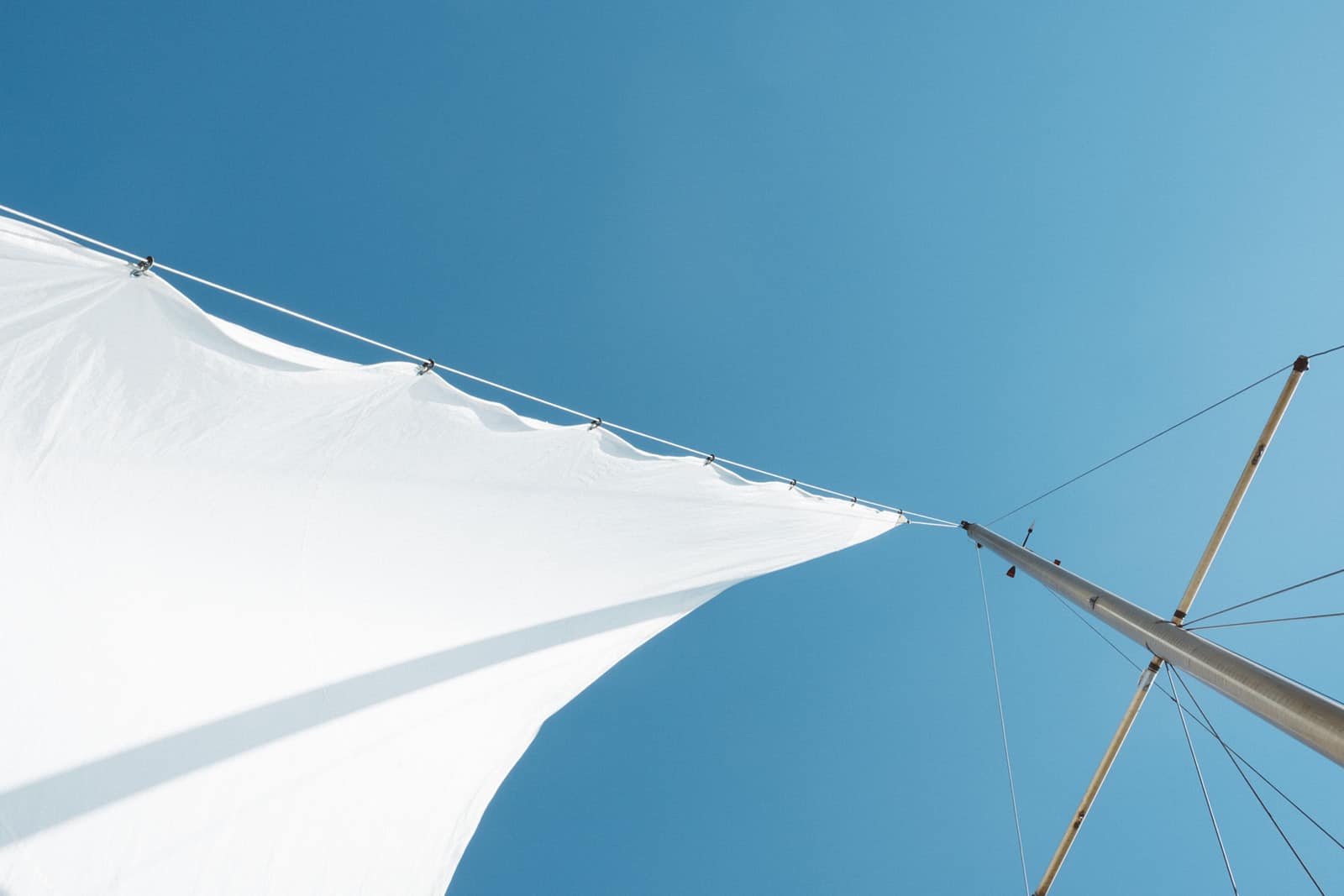
Names Of Sails on a Sailboat: What Are The Most Common Types Of Sails?
In this article, you are going to see more about the world of sailing.
There are different types of sails used in specific boats.
Check out some of the names of sails listed below to find out the most common sails names …
Drifter / Reacher Sail
Common types of sails.
This is the largest piece of the mast in a sailing vessel.
However, on a square vessel, it is the lowest on the main-mast.
The mast is responsible for the navigation of the boats from one end to the next.
Perhaps, it is safe to say that the speed of the bat will be determined by this piece of sail.
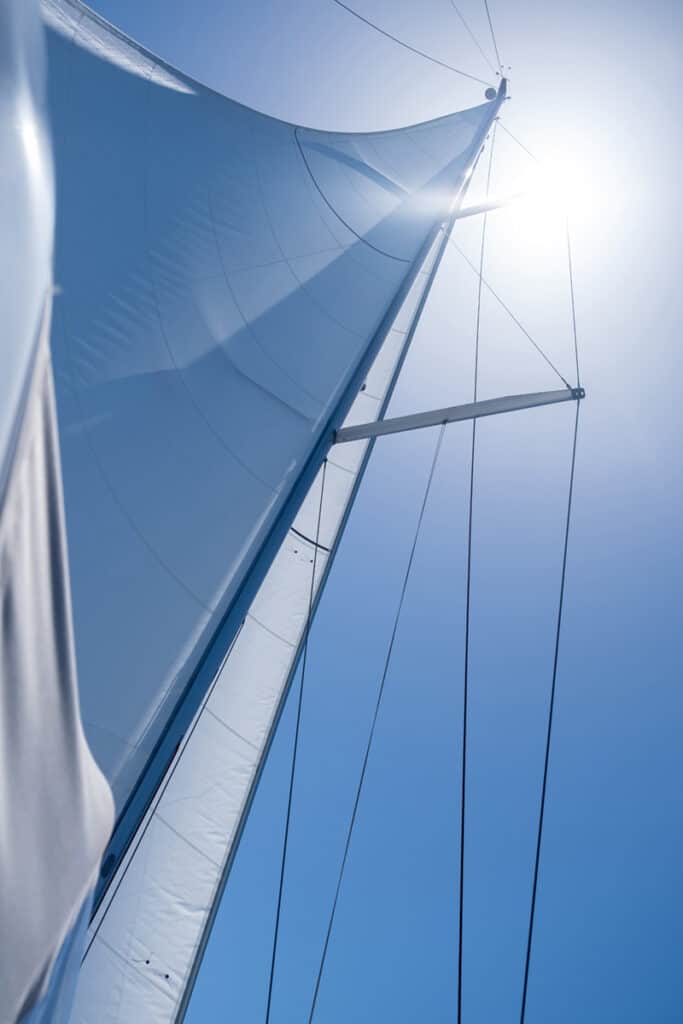
This type of sail is always triangular although, some of them always have four corners.
The triangular staysails that are used at the foremost position on the boat are called jibs.
In boats, these rigs help in tacking which will further help in preventing the lumbering up of the windward side.
Genoa is the largest jib that overlaps the mainsail.
It extends past the mast when you have a different view from the side.
The jib was originally given the name overlapping jib, which further changed to what you know it for today.
However, it is only fair to know in what types of boats the jib is well fitted to work.
You can find them in boats such as yawls and ketches.
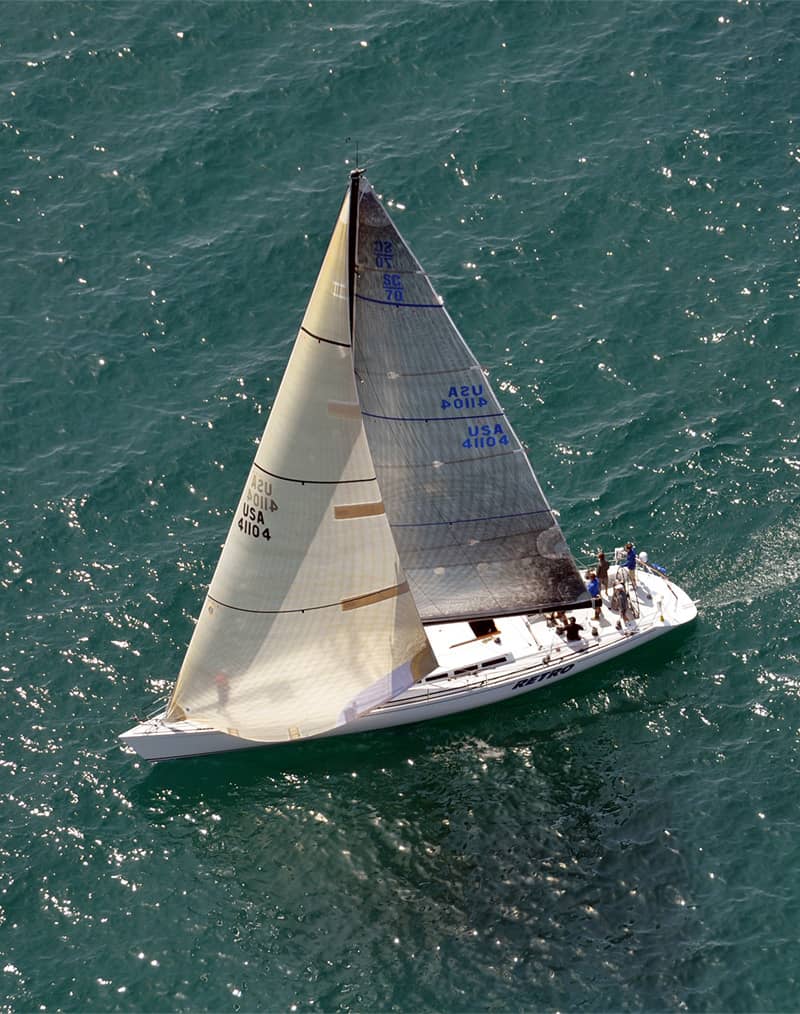
Spinnaker is a different type of sail due to the functions it performs on the movement of the boat.
It is designed for sailing off the wind from reaching the downwind.
As the boat is in motion, the spinnaker is filled up with wind creating a balloon like shape.
It has a construction that is purely made out of lightweight fabric like the nylon.
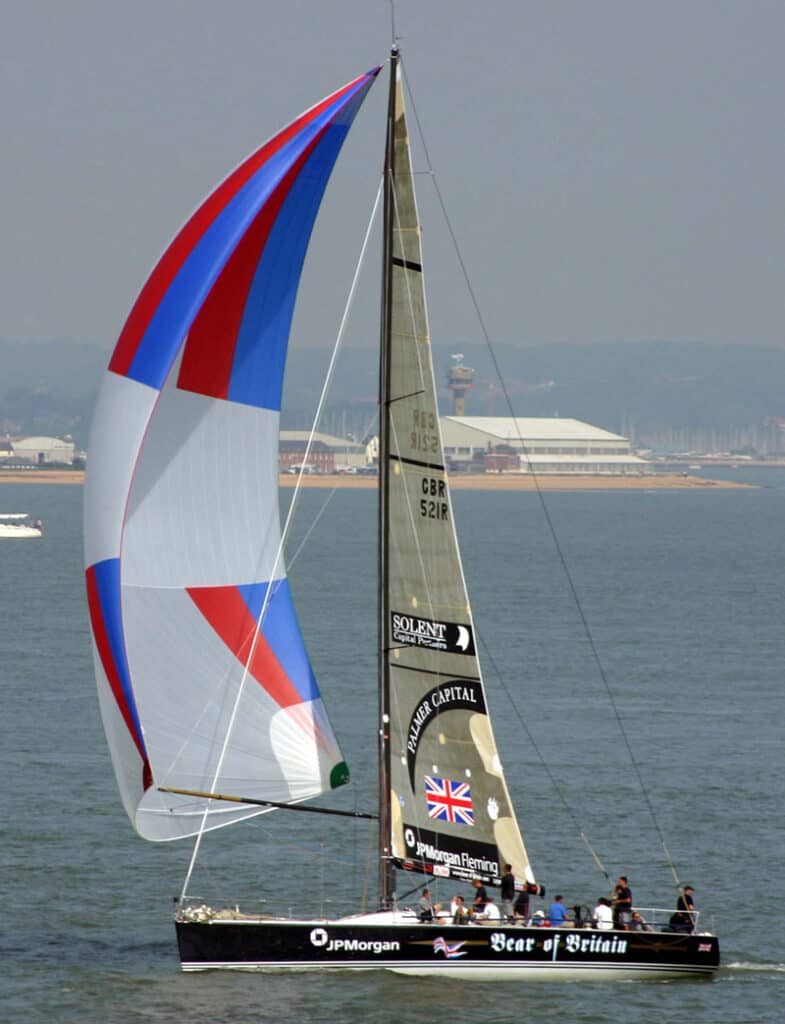
The Gennaker has recently been developed in the 90’s which a design showing that it is majorly, a crossover between Genoa and the spinnaker. Gennaker is rigged as the spinnaker but it’s tack is fastened to the hull.
The best thing about it is that it can obtain the optimum generation of lift within a short period of time.
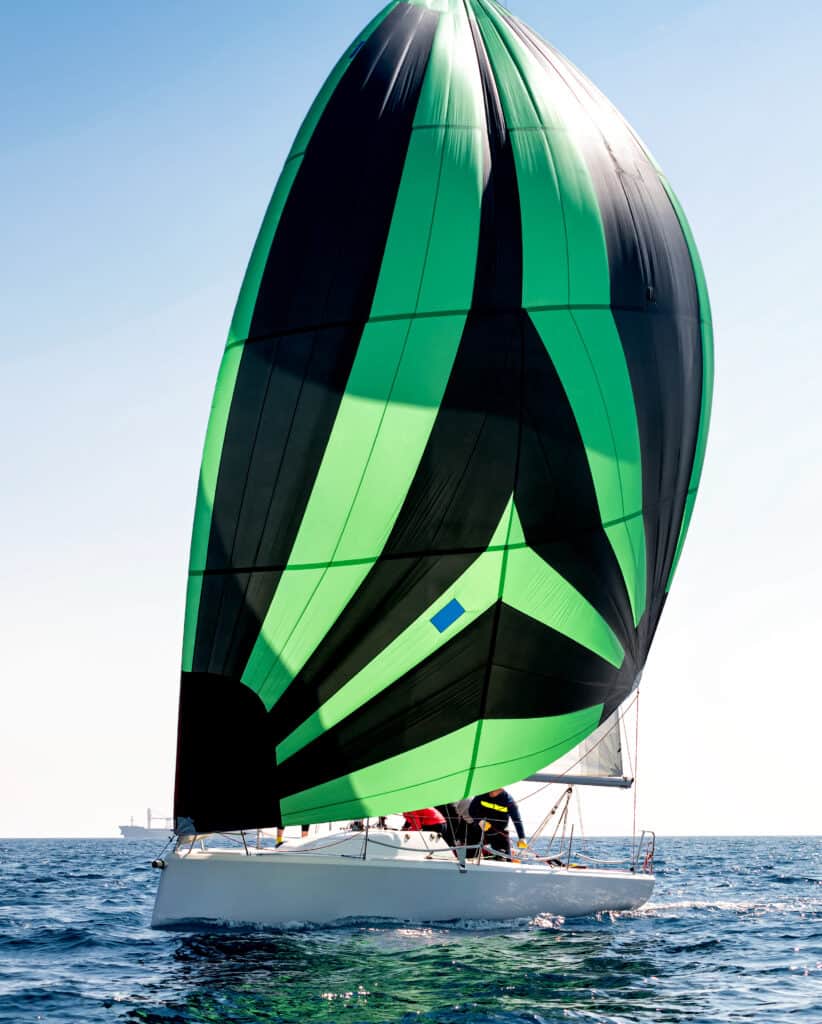
The drifter is a full draft lightweight made of nylon.
Drifters are designed with the ultimate purpose of cruising the sailors.
A drifter can make the work of a spinner much easier when cruising a spinmaker.
The best thing about drifters is that they come in different choices of colours and so you have the choice to mix and match.
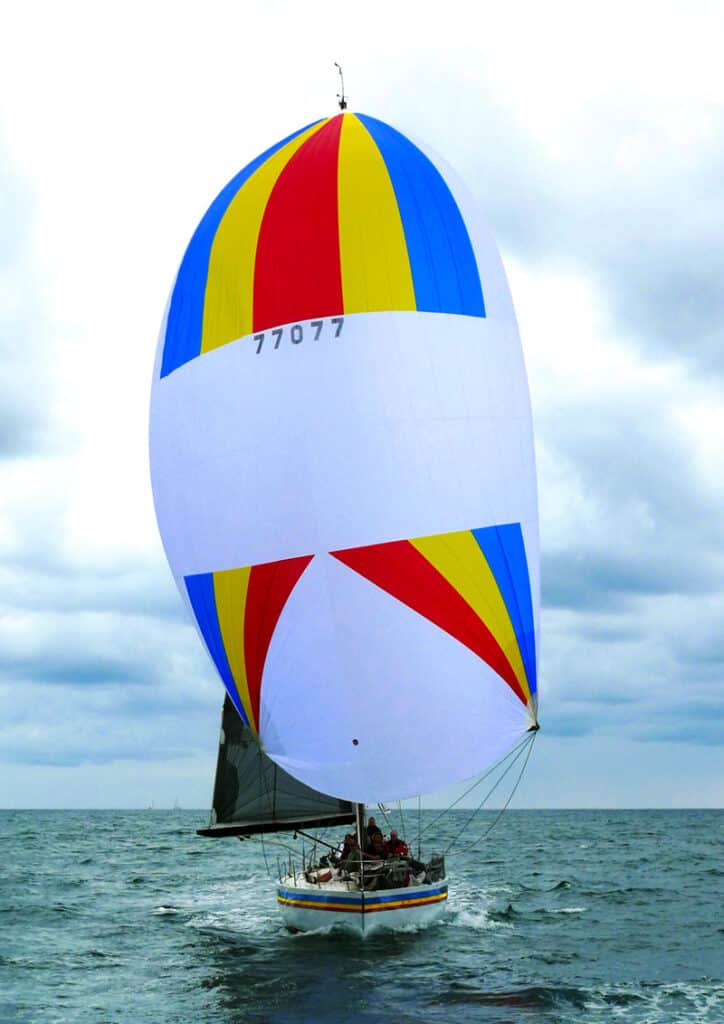
The most common types of sails are as follows:
- Drifter / Reacher
So, these are what you’ll find most commonly on boats.
Disclaimers
All product names, logos, and brands are property of their respective owners. All company, product and service names used in this website are for identification purposes only. Use of these names, logos, and brands does not imply endorsement.
It is our policy to make every effort to respect the copyrights of outside parties. If you believe that your copyright has been misused, please provide us with a message stating your position and we will endeavor to correct any misuse immediately.
Some of the links in this post are affiliate links. As an Amazon Associate, we earn from qualifying purchases. This means if you click on the link and purchase the item, we may receive an affiliate commission, at no extra cost to you. This helps us keep this website alive. Learn more here .

Hi, I’m Igor, Skipper of S/Y "The Hooker". A decade ago, I conquered my childhood dream: to be a sailing skipper, own a sailing yacht. Yes, it knocked dullness out of my urban life — Read more →
Leave a Reply Cancel Reply
Your email address will not be published. Required fields are marked *
Name *
Email *
Add Comment *
Save my name, email, and website in this browser for the next time I comment.
Post Comment
Related Posts
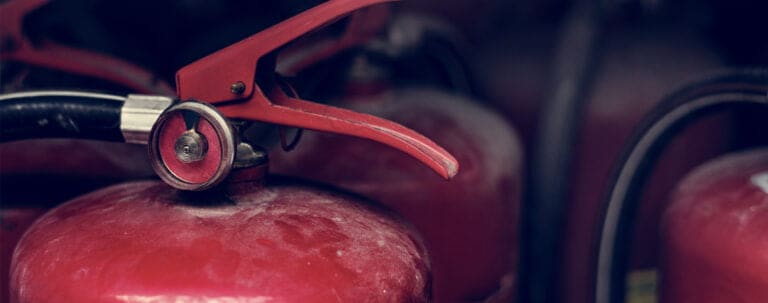
What is a Requirement for Fire Extinguishers on a Boat – All You Need to Know
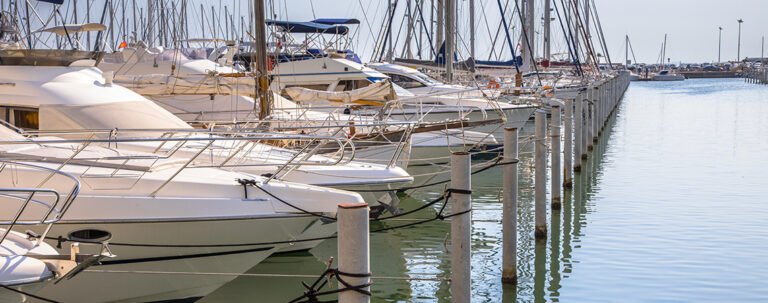
Recommended US & Canada Marinas for 2021
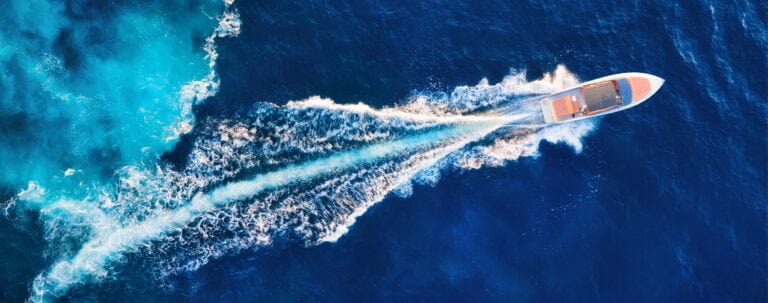
What is a Boat Rooster Tail and How to Throw a Rooster Trail
Amazon Disclosure
DesperateSailors.com is a participant in the Amazon Services LLC Associates Program, an affiliate advertising program designed to provide a means for sites to earn advertising fees by advertising and linking to Amazon.com. As an Amazon Associate, we earn from qualifying purchases. Amazon and the Amazon logo are trademarks of Amazon.com, Inc., or its affiliates.
Please refer to our Privacy & Affiliate policy for more details.
Sailboat Sails Names: A Comprehensive Guide to Understanding Different Types
by Emma Sullivan | Aug 13, 2023 | Sailboat Racing
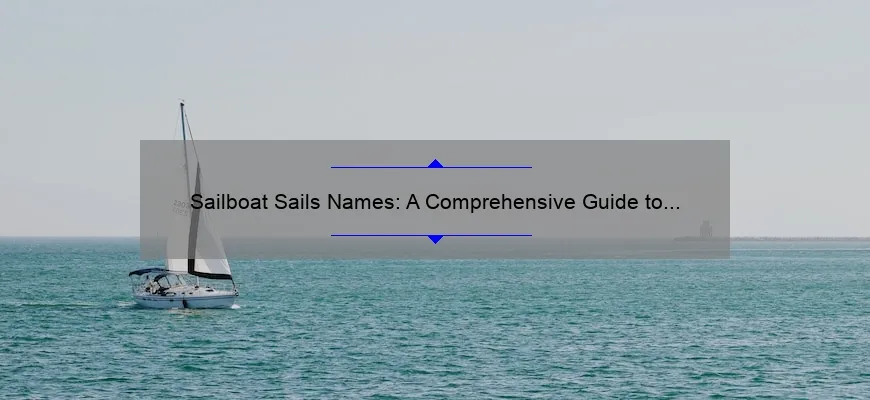
Short answer sailboat sails names: The main types of sails used on a sailboat are the mainsail, headsail (also known as jib or genoa), and the spinnaker. Other specialized sails include the staysail, storm jib, and trysail. Each sail has a specific purpose and is named accordingly based on its location and function on the boat.
1) The Importance of Sailboat Sails Names: A Comprehensive Guide
The Importance of Sailboat Sails Names: A Comprehensive Guide
Sailing is a sheer expression of freedom, connecting humans to the power and beauty of nature. An integral part of this majestic experience lies in the sailboat’s sails, which serve as the primary means of harnessing the wind’s energy to propel these vessels forward. While their functionalities may seem straightforward, sailboat sails also have an intriguing aspect that often goes unnoticed – their names.
While some may dismiss the significance of assigning names to sails as mere triviality, understanding and appreciating these names can elevate one’s sailing experience and deepen their connection with this timeless sport. In this comprehensive guide, we explore why sailboat sail names deserve more attention than what meets the eye.
1. Tradition and History: Names given to sailboat sails hold rich traditions and historical significance within the sailing community. These names often stem from ancient seafaring lore or pay homage to past boat designs, influential sailors, or iconic vessels that have shaped sailing history. Honouring this tradition creates a sense of continuity from generations past to present-day sailors.
2. Enhanced Communication: Naming individual sails serves more than just branding purposes; it facilitates clear communication among sailors during maneuvers or when discussing specific parts of a rigging system. Precise naming ensures effective coordination onboard by offering a common language for describing specific areas or issues related to different sails.
3. Personal Connection: Assigning unique names to each sail fosters a personal connection between sailors and their boats. Similar to pet owners who name their furry friends, identifying sails gives them character and personality – transforming an inanimate object into something living and breathing within the realm of our imagination.
4. Sense of Adventure: Just like giving a name can influence our perception of someone’s identity, associating sails with creative and adventurous names ignites an air of excitement during each sailing expedition. It stimulates our wanderlust by evoking images tied closely with exploration, discovery, and the wonders of the sea.
5. Camaraderie and Humor: Naming sails can cultivate a sense of camaraderie among sailors, inspiring laughter and enjoyable banter. Sailors often develop inside jokes or playful references while attributing names to their sails, creating a shared experience that strengthens the bonds within sailing communities.
6. Storytelling Potential: Names have storytelling potential – they encapsulate a sail’s journey through time, harboring tales of epic voyages, dramatic encounters with powerful storms or magical encounters with marine life. Each sail name becomes a vessel for recounting captivating stories every sailor yearns to share around the dockside firepit after an exhilarating day at sea.
In conclusion, understanding the importance of sailboat sail names extends beyond their utilitarian functions. It honors tradition while creating personal connections and fostering camaraderie within the sailing community. Sailboat sail names elicit emotions, spark narratives, and enhance communication onboard – ultimately embracing the sheer joy and wonder that lies at the core of this timeless sport. So when you next embark on a sailing adventure, take a moment to appreciate not only the beauty of your boat’s sails but also their fantastic names that carry a dense tapestry connecting past seafarers with those following in their wake.
2) Decoding Sailboat Sails Names and Their Significance
Decoding Sailboat Sails Names and Their Significance
If you’ve ever found yourself onboard a sailboat, you might have noticed the beautifully-shaped sails flapping in the wind, propelling the vessel across the water. However, what you might not know is that these sails have distinctive names that hold significant meanings. Today, we’re here to decode sailboat sail names and explore their significance in the world of sailing.
1) Mainsail: The Backbone of Sailing
Let’s start with the mainsail, which is undoubtedly the most important sail on a boat . Positioned at the back (aft) of a vessel, this large triangular or quadrilateral-shaped sail plays a crucial role in harnessing wind power to propel the boat forward. Its position directly behind the mast ensures it captures as much wind as possible while providing stability to steer with precision. The mainsail symbolizes strength and control, truly representing the backbone of any sailing adventure.
2) Jib: The Agile Partner
The jib is typically located upfront (forward) of a sailboat and is responsible for augmenting its speed and maneuverability. This smaller triangular-shaped sail helps balance out the force generated by the mainsail while allowing sailors to adjust their heading more swiftly. Just like an agile partner who complements your every move on a dance floor, the jib assists in maximizing sailing performance while maintaining stability throughout various wind conditions.
3) Genoa: Embracing Maximum Power
For those seeking maximum power and speed on their sailing escapades, enter – Genoa! Bigger than both the mainsail and jib combined in terms of surface area, this massive headsail extends closer towards a boat ‘s bow (fore). Designed specifically for windy conditions or racing purposes, it allows sailors to catch every gust of wind available. Named after an Italian coastal city where it was widely used for its ability to navigate adverse weather conditions efficiently, the Genoa represents the pursuit of sailing excellence and harnessing the forces of nature to achieve optimal speed.
4) Spinnaker: Unleashing the Spirit of Adventure
As we delve deeper into decoding sail names, we encounter a unique and adventurous one – the spinnaker. This large, billowing sail is traditionally used when sailing downwind or at an angle from it. Its vibrant colors and impressive size make it easily recognizable as the ultimate symbol of adventure on the high seas. The spinnaker embraces free-spiritedness, allowing sailors to ride downwind waves with grace and style while capturing every ounce of breeze available.
5) Storm Jib: Conquering Nature’s Fiercest Moments
When facing mother nature’s wrath in severe weather conditions, there is one sail that will not back down – the storm jib. Significantly smaller than other sails, this rugged piece is purpose-built for navigating storms or heavy winds while keeping a boat controllable and balanced. With its resilience and determination in withstanding tough elements, the storm jib instills a sense of confidence in sailors who dare to venture into treacherous waters.
6) Gennaker: A Blend of Genoa and Spinnaker
Last but definitely not least, we have the gennaker. Combining features from both the genoa and spinnaker (hence its name), this hybrid sail provides excellent versatility for sailors looking to explore different wind angles comfortably. Slightly larger than traditional genoas, yet simpler to handle than regular spinnakers, it allows sailors to enjoy cruising or racing across various wind conditions with ease.
In Conclusion
Decoding sailboat sail names brings us closer to understanding their significance beyond their visual appeal. These sails not only assist in achieving optimum performance but also reflect various aspects of a sailor’s journey – from maintaining stability in challenging weather conditions to embodying pure adventure on open waters . So, the next time you find yourself aboard a sailboat, take a moment to appreciate the names and symbolism behind each sail, for they encapsulate the timeless art of sailing and all its wondrous possibilities.
3) Step-by-Step Approach to Understanding Sailboat Sails Names
Title: Deciphering the Secrets of Sailboat Sails: A Step-by-Step Guide
Introduction: Embarking on a sailing adventure can be an exhilarating experience, but if you’re new to the world of sailboat sails, you may find yourself bewildered by the multitude of names and terms associated with them. Fear not! In this guide, we will take you through a step-by-step journey to demystify sailboat sail names. From main sails to jibs and everything in between, prepare to become the captain of your sail knowledge!
1. Setting the course: Understanding Main Sails Let’s begin with the most fundamental sail on any boat – the main sail. As its name implies, it occupies a central position in powering your vessel forward. Hoisted up the mainmast, it is typically triangular in shape and catches wind perpendicular to its luff (leading edge). Depending on your boat design, mainsails can further be categorized into various types such as sloop, cutter or ketch rigs.
2. Navigating auxiliary power: Introduction to Jibs Next up are the essential jibs – auxiliary sails that work alongside the main sail for increased maneuverability. Jibs are smaller triangular-shaped sails attached to bowsprits or furlers at the bow of your boat. The most common type is known as a genoa – larger than other jibs, it offers excellent performance when sailing close to the wind .
3. Plotting efficient courses: Expanding Horizons with Headsails To maximize speed and adaptability under various sailing conditions, many boats sport headsails – additional foresails located between their headstay (the cable supporting masts from bow) and mast. Focusing on control rather than power generation like jibs or mainsails, headsails such as staysail or solent jib play crucial roles in modifying airflow around your vessel’s rigging for optimal navigation.
4. Unleashing the wind’s power: Specialty Sails Once you have mastered the basics, it’s time to unravel some of the more specialized sails that complement specific sailing situations . Spinnakers, for example, are large, ballooning-shaped sails used when sailing down wind, capturing the wind from behind your boat and boosting its speed. Code zero or gennaker sails offer similar downwind performance but with easier handling compared to spinnakers.
5. Keeping control in rough seas: Stabilizing Storm Sails Storms at sea can test even the most seasoned sailors, demanding reliable survival gear. In these extreme conditions, storm sails come into play – designed specifically for heavy weather situations. These smaller and durable sails enable better vessel control in strong winds while reducing heeling (tilting) motion and ensuring stability during intense storms.
Conclusion: By breaking down sailboat sail names into comprehensible categories and step-by-step explanations, we hope this guide has empowered you with a deeper understanding of these vital elements of sailing. Familiarizing yourself with main sails, jibs, headsails, specialty sails, and storm sails will not only enhance your appreciation of the intricate mechanics behind sailing but also boost your confidence as you set forth on exciting maritime adventures. So hoist those sails high and let the wind carry you towards endless horizons!
4) Frequently Asked Questions about Sailboat Sails Names Answered!
Sailing enthusiasts often find themselves intrigued by the world of sailboat sails, and rightfully so. This important component of any sailing vessel plays a crucial role in harnessing the wind’s power and propelling sailors across vast oceans or serene lakes. However, sail names can be confusing and overwhelming for beginners and even experienced sailors. To shed light on this topic, we have compiled a list of frequently asked questions about sailboat sails names with detailed, professional, witty, and clever explanations.
1) What is the main sail on a sailboat ?
Ah! The mighty mainsail – the primary workhorse of any sailboat! As its name suggests, this is the largest and most essential sail found on almost every vessel . It is typically located at the stern or near the center of the boat’s mast . The mainsail catches the wind head-on (or slightly to either side), generating forward motion by transferring energy from gusts into mechanical force that drives your boat gracefully through water like a swan gliding across a pond.
2) What are jib sails?
Jibs are like your trusty sidekick – always ready to lend a hand when navigating through windy waters ! These smaller triangular-shaped front sails attach to the forestay, which runs from the top of your mast down towards your boat’s bow. Jibs essentially work in tandem with the mainsail to optimize control over your vessel’s direction. They help capture additional airflow from various angles, making your sailing experience smoother than silk while impressing fellow sailors with your nautical prowess!
3) Are genoas different from jibs?
Genoas and jibs may appear like long-lost siblings separated at birth due to their similarities; however, they do possess some key distinctions that set them apart. Genoas are larger headsails compared to jibs that extend past the mast when fully deployed. Their immense size allows them to harness more wind, providing a significant power boost. They are perfect for those adrenaline-fueled sailing pursuits or moments when you want to feel the wind in your hair and the ocean spray on your face!
4) Tell me about spinnakers!
Spinnakers, oh what delightful and colorful creatures they are! Picture this: a sunny day, gentle breeze, and your sailboat elegantly dancing across the waves with a vibrant, billowing sail that demands attention. That’s precisely what a spinnaker offers! This sail is designed for downwind sailing when the wind is blowing from behind – think of it as the parachute of the sea. Spinnakers come in an array of mesmerizing hues and shapes, showcasing an artistic side to sailing that truly dazzles sailors lucky enough to witness their grandeur.
5) Are there any other sails worth exploring ?
Oh yes, fellow sailor! There are plenty of other sails waiting to be discovered and added to your seafaring arsenal. Let us tantalize you with just two examples: gennakers and code zeros. Gennakers are similar to spinnakers in terms of downwind sailing capabilities but differ in design. They offer precise control over airflow while balancing speed and stability—ideal for cruisers seeking versatility without sacrificing performance.
On the other hand, code zeros are innovative beasts tailored for reaching (sailing between upwind and downwind). These hybrid sails beautifully combine elements from jibs and genoas to optimize performance in slightly tougher conditions like lighter winds or close-hauled points-of-sail; trusty companions indeed when venturing where no ordinary sail would dare!
Now that we have unraveled some intriguing mysteries surrounding sailboat sails names let these newfound knowledge set you on an adventurous journey through uncharted waters. Remember, understanding each sail’s purpose empowers you as a sailor and opens doors ornamented with exciting possibilities. Bon voyage!
5) Unveiling the Secrets Behind Sailboat Sails Names
Title: Decoding the Enigmatic Nomenclature of Sailboat Sails
Introduction: Sailboats, with their stunning displays of billowing sails, have long captivated the imagination of seafarers and landlubbers alike. But have you ever wondered why these magnificent sails bear such peculiar names? We invite you to embark on a journey as we unveil the secrets behind sailboat sails’ intriguing nomenclature.
Unraveling the Mystique: 1. Main Sail – The All-Powerful Master: At the heart of any sailboat’s propulsion system lies the main sail, often referred to as the “queen” or “king” of all sails. As it harnesses the primary wind force to propel and steer the vessel, this majestic sail rightfully earns its regal title.
2. Jib – The Snug Assistant: While smaller in size compared to its royal counterpart, the jib plays an essential role in sailing maneuvers. This versatile foresail is often named after its position relative to other sails or mast sections, such as “genoa” (forward-most jib) or “inner jib” (closer towards the mast). It gracefully assists in adjusting power and maneuverability, making it an invaluable companion for sailors.
3. Spinnaker – The Jazz Soloist: Enter into a more exciting realm with the spinnaker – an exhilarating sail synonymous with speed and precision. Unlike its fellow companions, this colorful creation helps boats effortlessly glide downwind by capturing additional wind from unexpected angles, akin to a virtuoso musician breaking into an improvisational solo during a jazz performance.
4. Gennaker – Fusion of Genoa and Spinnaker: Created out of marrying two prominent sails together – genoa and spinnaker – comes forth a true hybrid marvel called gennaker! A testament to human ingenuity on high seas, this multipurpose sail combines the upwind efficiency of a genoa with the downwind performance of a spinnaker. Its melodious name reflects its harmonious blend of versatility and agility.
5. Staysail – The Backbone Aide: Navigating treacherous seas requires sturdy support, and that is where the stalwart staysail steps in. Named after the taut ropes, known as “stays,” which keep it secure and aligned within the mast’s vicinity, this sail works diligently to stabilize the vessel during rough encounters with unpredictable winds or fierce ocean currents – a true backbone aide for any sailor.
Conclusion: The naming conventions used for sailboat sails reflect not only their functional roles but also embody an element of mystique, poetic storytelling, and respect for maritime traditions. From the commanding presence of the main sail to the nimble maneuverability of the jib, each distinctive name adds an extra layer of character to these majestic vessels. As you embark on your next sailing adventure, take a moment to appreciate how these beautifully named sails propel you through both charted waters and uncharted territories with unparalleled grace and elegance.
6) Mastering Sailboat Sails Terminology: All You Need to Know
Title: Mastering Sailboat Sails Terminology: Unlock the Secrets of the Wind
Introduction: Sailing, the ultimate embodiment of harnessing the power of nature, offers a mystical experience that is truly unparalleled. Whether you are a seasoned sailor or just dipping your toes into this captivating world, understanding sailboat sails terminology is crucial to navigate your vessel with precision. In this comprehensive guide, we will embark on a voyage through the sea of sail terminologies, arming you with knowledge and empowering you to master the wind like never before.
1) Hoist The Jargon Flag: In our quest to conquer sailing’s linguistic domain, we begin by unraveling some fundamental terms starting with “hoist.” Picture yourself on board as you eagerly raise your mainsail. Now understand its importance; hoisting refers to raising or unfurling a sail—the first step towards embracing wind-powered bliss. But hold on, there’s more to explore!
2) Trim Your Vocab: As sailors know all too well, trimming plays an integral role in optimizing sail performance . Adjusting the shape and angle to maximize efficiency is an artistry mastered over time. Explore concepts such as clew (the aft corner where control lies), leech (the trailing edge prone to fluttering whispers), and luff (the leading edge eager for both stability and finesse). Once proficient in trim dynamics, be prepared for exhilarating control over your canvas-captured vessel.
3) Ride The Wind Shifts – Tacking and Jibing with Gusto: Imagine dancing with gusts—a graceful tango on water—with sail maneuvers named Tacking and Jibing! Tacking allows us to turn our bow into the wind while switching our sails from one side to another — keeping momentum alive even against headwinds. Conversely, Jibing showcases a breathtaking choreography wherein we gracefully turn downwind while shifting sails effortlessly from port to starboard. These maneuvers are the salt and pepper of sailing, yielding extraordinary control over your vessel’s direction.
4) Stay Afloat with Telltales and Draft: As sailors seeking fluidity, let us introduce two concepts crucial to understanding sail behavior: Telltales and Draft. Telltales behave like invisible sirens that whisper wind secrets to experienced sailors by fluttering or stalling—indicating adjustments necessary for optimal performance . As for Draft, imagine it as a sculptor’s perfectly carved recess within sails—an aerodynamic masterpiece responsible for harnessing wind power effectively.
5) Raising the Stakes – Halyards and Sheets: Continuing our sailboat terminology odyssey, we navigate through the world of lines that keep the canvas flying proudly. ‘Halyards’ represent ropes used to raise or lower sails—the graceful couriers of celestial fabric. On the other hand, ‘Sheets’ (not those you sleep between!) let you trim your sails like an artist guides a brush across a canvas—a pivotal connection between sailor, vessel, and mother nature herself.
Conclusion: In this marvelous expedition through sailboat sails terminology, we have merely scratched the surface of this vast ocean of knowledge captured within captivating words. By unravelling their meanings bit by bit, you’ll soon find yourself speaking in fluent sailor tongues—a language enriched not only by professionalism but also wit and cleverness. Remember, sailing is more than just maneuvering a boat; it is about embracing nature’s untamed beauty while unraveling its secrets one gust at a time! So lace up your deck shoes, raise your mainsail high into azure skies uncharted—let your adventure unfold on seas bequeathed with exhilaration!
Recent Posts

- Sailboat Gear and Equipment
- Sailboat Lifestyle
- Sailboat Maintenance
- Sailboat Racing
- Sailboat Tips and Tricks
- Sailboat Types
- Sailing Adventures
- Sailing Destinations
- Sailing Safety
- Sailing Techniques
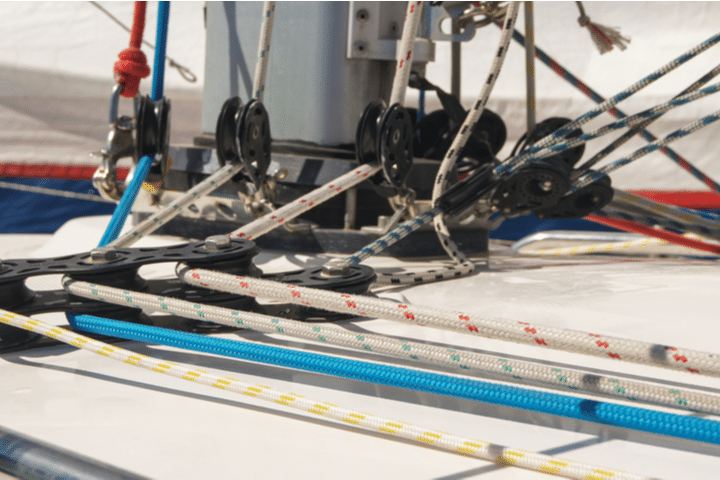
A Guide to the Different Parts of a Sailboat

Table of Contents
Last Updated on November 29, 2023 by Boatsetter Team
When you use Boatsetter, you have the opportunity to choose from a myriad of different sailboat rentals from all over the United States and beyond . A sailboat is a perfect way to relax on the water, either on a solo adventure or on an excursion with friends and family.
When you rent a sailboat with Boatsetter, you will have the option to book a captained sailboat to enjoy your day out on the water or book bareboat to hone your sailing skills. Either way, you may be interested in the intricacies of a sailboat and its different parts. If this sounds like you, you have come to the right place. In this article, we go in-depth about the different parts of a sailboat so that you can be more knowledgeable about whatever boat you may choose and come away from reading this feeling more confident about the whole sailing experience.
A basic sailboat is composed of at least 12 parts: the hull , the keel , the rudder , the mast, the mainsail, the boom, the kicking strap (boom vang), the topping lift, the jib, the spinnaker, the genoa, the backstay, and the forestay. Read all the way through for the definition of each sailboat part and to know how they work.
Explore sailboats for rent near you or wherever you want to go
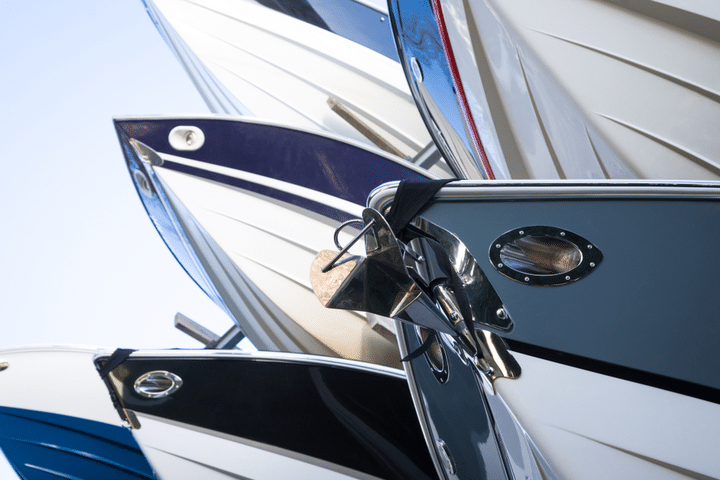
In short, the hull is the watertight body of the ship or boat. There are different types of hulls that a sailboat may have, and these different hulls will often affect the speed and stability of the boat.
Displacement Hulls
Most sailboats have displacement hulls , like round bottom hulls, which move through the water by pushing water aside and are designed to cut through the water with very little propulsion. The reason these are called displacement hulls is that if you lower the boat into the water, some of the water moves out of the way to adjust for the boat, and if you could weigh the displayed water, you would find that it equals the weight of the boat, and that weight is the boat’s displacement. One thing to know about displacement hulls is that boats with these hulls are usually limited to slower speeds.
Planing Hull
Another type of hull is a planing hull. These hulls are designed to rise and glide on top of the water when enough power is supplied. When there is not enough power behind the boat, these boats often act as displacement hulls, such as when a boat is at rest. However, they climb to the surface of the water as they begin to move faster. Unlike the round bottom displacement hulls, these planing hulls will often have flat or v-shaped bottoms. These are very common with motor-driven water vessels, such as pontoon boats, but they can also be found on smaller sailboats which allow them to glide quickly over the water.
Finally, sailboats can differ depending on the number of hulls that they have. There are three options: monohulls (one hull), catamarans (two hulls), and trimarans (three hulls).
Monohulls , which have only a single hull, will usually be the typical round bottom displacement hull or occasionally the flat bottomed or v-shaped planning hull. Catamarans have two hulls with a deck or a trampoline in between, with the extra hulls providing increased stability. Finally, trimarans have three hulls — a main hull in the middle and two side hulls used for stability. These trimarans have gained popularity because of their excellent stability and ability to go at high speeds.
When evaluating a sailboat , it is important to pay attention to the type of hull that the boat has because the type of hull a sailboat has can drastically change the sailing experience, especially when it comes to stability and speed.
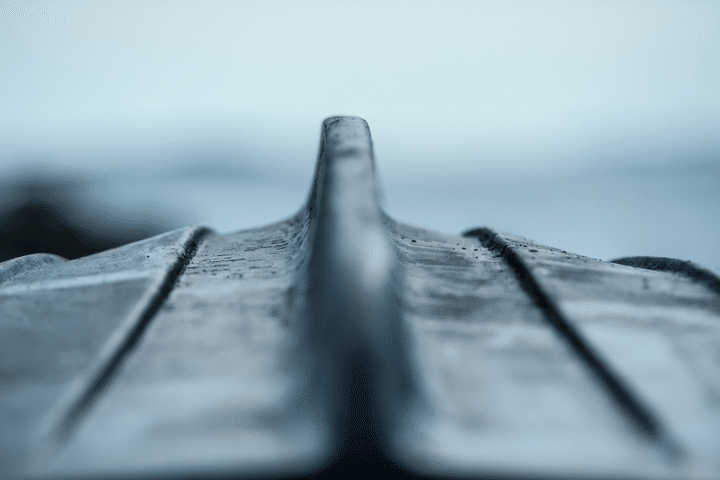
All sailboats have a keel, a flat blade sticking down into the water from the sailboat’s hull bottom. It has several functions: it provides counterbalance, life, controls sideways movement, holds the boat’s ballast , and helps prevent the boat from capsizing. When a boat leans from one side to the other, the keel and its ballast counteract the movement and prevent the boat from completely tipping over.
As with hulls, there are a number of different types of keels, though the two most common types of keels on recreational sailboats are the full keel or the fin keel. A full keel is larger than a fin keel and is much more stable. The full keel is generally half or more of the length of the sailboat. However, it is much slower than the fin keel. A fin keel, which is smaller than the full keel, offers less water resistance and therefore affords higher speeds.
A more recent feature on sailboats is the “winged keel,” which is short and shallow but carries a lot of weight in two “wings” that run sideways from the keel’s main part. Another more recent invention in sailing is the concept of the canting keels, which are designed to move the weight at the bottom of the sailboat to the upwind side. This invention allows the boat to carry more sails.
The Rudder
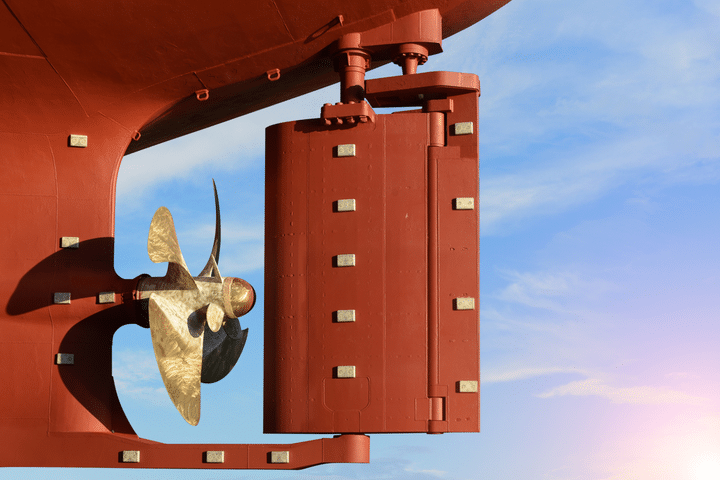
A rudder is the primary control surface used to steer a sailboat. A rudder is a vertical blade that is either attached to the flat surface of the boat’s stern (the back of the boat) or under the boat. The rudder works by deflecting water flow. When the person steering the boat turns the rudder, the water strikes it with increased force on one side and decreased force on the other, turning the boat in the direction of lower pressure.
On most smaller sailboats, the helmsman — the person steering the boat — uses a “ tiller ” to turn the rudder. The “tiller” is a stick made of wood or some type of metal attached to the top of the rudder. However, larger boats will generally use a wheel to steer the rudder since it provides greater leverage for turning the rudder, necessary for larger boats’ weight and water resistance.
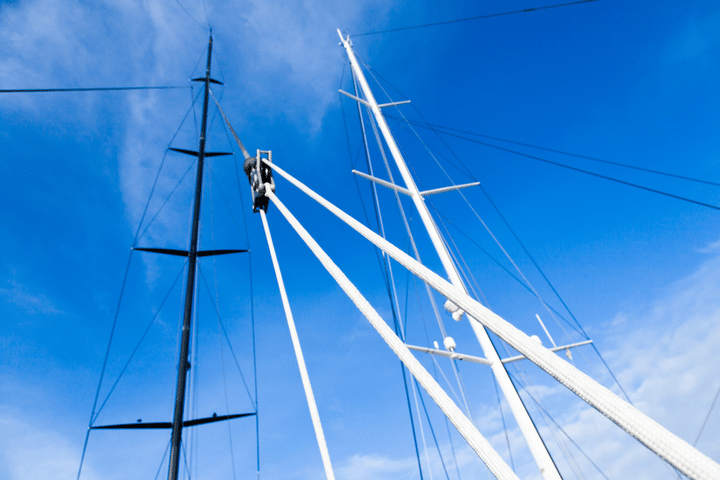
The mast of a sailboat is a tall vertical pole that supports the sails. Larger ships often have multiple masts. The different types of masts are as follows:
(1) The Foremast — This is the first mast near the bow (front) of the boat, and it is the mast that is before the mainmast.
(2) The Mainmast — This is the tallest mast, usually located near the ship’s center.
(3) The Mizzen mast — This is the third mast closest to the stern (back), immediately in the back of the mainmast. It is always shorter than the mainmast and is typically shorter than the foremast.
The Main Sail
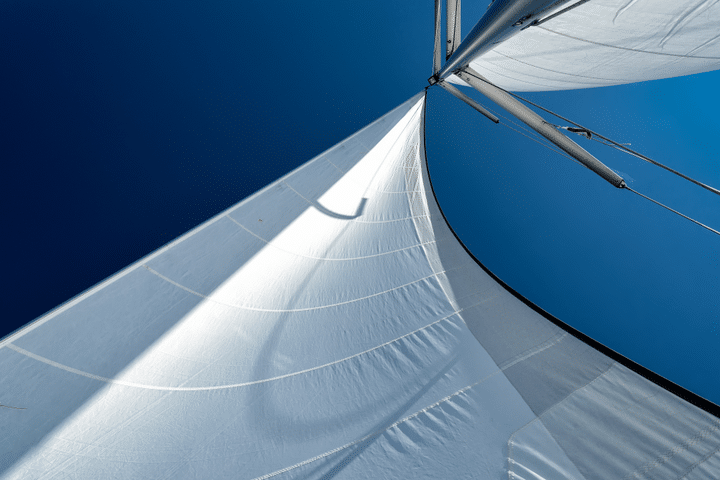
The mainsail is the principal sail on a sailboat, and it is set on the backside of the mainmast. It is the main source that propels the boat windward.
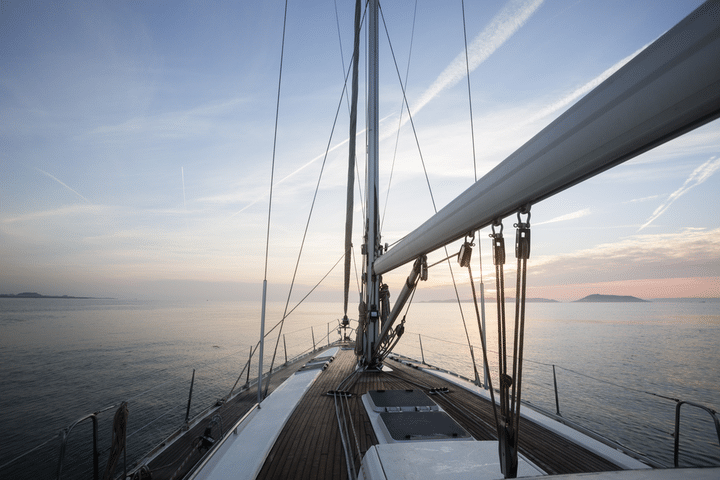
A boom is a spar (a pole made of wood or some other type of lightweight metal) along the bottom of a fore-and-aft rigged sail, which greatly improves the control of the angle and the shape of the sail, making it an indispensable tool for the navigation of the boat by controlling the sailes. The boom’s primary action is to keep the foot (bottom) of the sail flatter when the sail angle is away from the centerline of the sailboat.
The Kicking Strap (Boom Vang)
The boom vang is the line or piston system on a sailboat used to exert a downward force on the boom, enabling one to control the sail’s shape. The vang typically runs from the base of the mast to a point about a third of the way out the boom. It holds the boom down, enabling it to flatten the mainsail.
The Topping Lift
The topping lift is a line that is a part of the rigging on a sailboat, which applies an upward force on a spar (a pole) or a boom. Topping lifts are also used to hold a boom up when it’s sail is lowered. This line runs from the free end of the boom forward to the top of the mast. The line may run over a block at the top of the mast and down the deck to allow it to be adjusted.
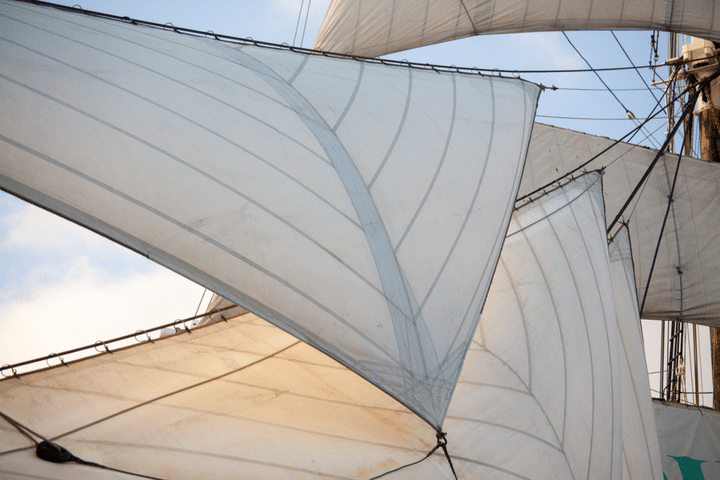
A jib is a triangular staysail set ahead of the foremost mast of a sailboat. Its tack is fixed to the bowsprit, the bow, or the deck between the bowsprit and the foremost mast. Jibs and spinnakers are the two main types of headsails on modern boats.
The Spinnaker
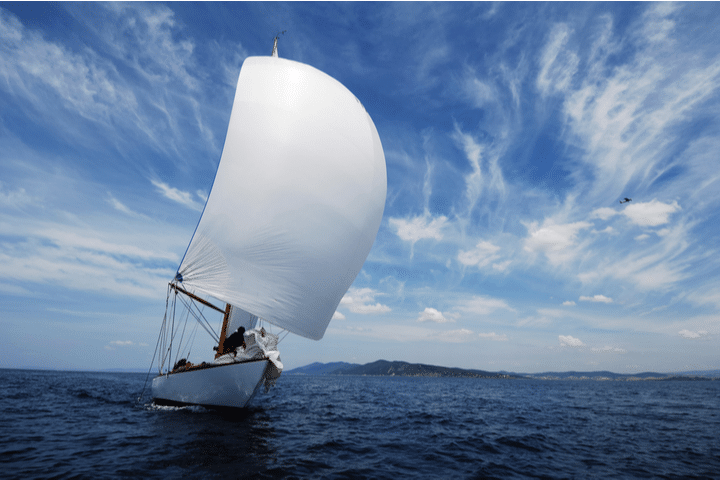
A spinnaker is a type of sail designed specifically for sailing off the wind from a reaching downwind course. The spinnaker fills up with wind and balloons out in front of the sailboat when it is deployed. This maneuver is called “flying.” The spinnaker is constructed of very lightweight material, such a nylon fabric and on many sailing vessels, it is very brightly colored.
Another name for the spinnaker is the “chute” because it often resembles a parachute, both in the material it is constructed from and its appearance when it is full of wind.
People often use the term genoa and jib as if they were the same thing, but there is a marked difference between these two types of sails. A job is no larger than a foretriangle, the triangular area formed by the mast, the deck or bowsprit, and the forestay. On the other hand, a genoa is larger than the jib, with part of the sail going past the mast and overlapping the mainsail. These two sails, however, serve very similar purposes.
The Backstay
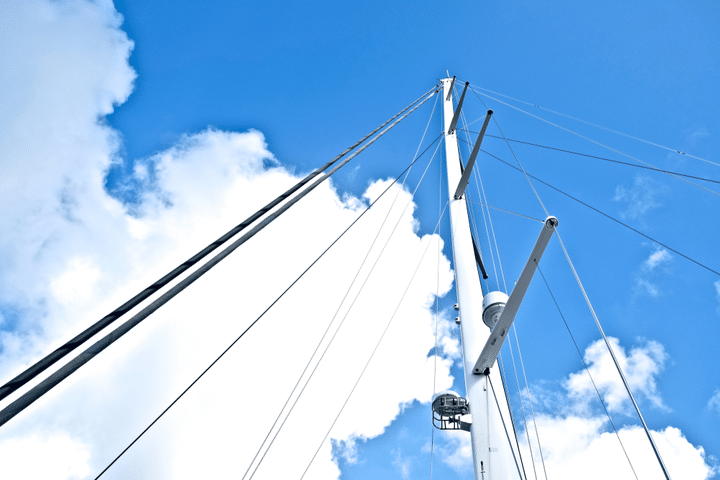
The backstay is a standing rigging that runs from the mast to the transom (the vertical section at the back of the boat), counteracting the forestay and the jib. The backstay is an important sail trip, control and directly affects the mainsail’s shape and the headsail.
There are two general categories of backstays:
1) A permanent backstay is attached to the top of the mast and may or may not be readily adjustable.
2) A running backstay is attached about two-thirds up the mast and sometimes at multiple locations along the mast. Most modern sailboats will have a permanent backstay, and some will have permanent backstays combined with a running backstay.
The Forestay
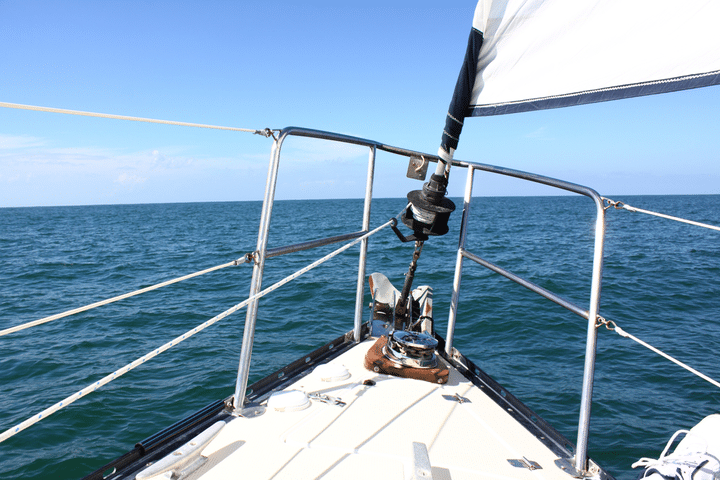
A forestay is a piece of standing rigging that keeps the mast from falling backward. It is attached at the very top of the mast, or at certain points near the top of the mast, with the other end of the forestay being attached to the bow (the front of the boat). Often a sail, such as a jib or a genoa, is attached to the forestay.
A forestay might be made from stainless steel wire, stainless steel rod or carbon rod, or galvanized wire or natural fibers.
Parts of a sail
Sails are vital for sailboats, made up of complex parts that improve performance and maneuverability. In this section, we’ll take a closer look at the different parts of that make up the sails.
Luff – The luff is a vertical sail part that maintains its shape and generates lift by interacting with the wind. It attaches securely with a bolt rope or luff tape for easy hoisting.
Leech – The leech controls air flow and reduces turbulence. Battens or leech lines are used to maintain shape and prevent fluttering.
Foot – The foot of a sail connects the luff and leech at the bottom edge. It helps define the sail’s shape and area. The outhaul is used to adjust its tension and shape.
Head – The sail’s head is where the luff and leech meet. It has a reinforced section for attaching the halyard to raise the sail.
Battens -The b attens are placed horizontally in sail pockets to maintain shape and optimize performance in varying wind conditions. They provide structural support from luff to leech.
Telltales – Sailors use telltales to adjust sail trim and ensure optimal performance.
Clew – The clew is important for shaping the sail and connecting the sheet, which regulates the angle and tension, producing energy. It’s located at the lower back corner of the sail.
Sailing is a favorite pastime for millions of Americans across the country. For some, there is nothing better than gliding across the water propelled by nothing more than the natural force of the wind alone. For both experienced and non-experienced sailors alike, Boatsetter is the perfect place to get your ideal sailboat rental from the mouthwatering Florida keys to the crystal blue waters of the Caribbean .
Smaller sailing boats are perfect for a single day out on the water, either by yourself or with friends and family. In comparison, larger sailing boats and sailing yachts can allow you days of luxury on longer excursions full of adventure and luxury.
Whatever your sailing dreams are, it is always good to know, for both the experienced sailor and the novice, all about the sailboat’s different parts. In this article, we learned all about the boat’s hull, the keel, the rudder, the mast, the mainsail, the boom, the kicking strap (boom vang), the topping lift, the jib, the spinnaker, the genoa, the backstay, and the forestay, which make up the basic parts of any sailboat you might find yourself on.
About us
Boatsetter is the go-to app for boat rentals and on-water experiences. Whatever the adventure, we’ve got a boat for that—Set sail , start the party , go yachting , make your trophy catch , and hone your watersports skills! Download the Boatsetter app ( App Store | Google Play ). Make sure to follow @boatsetter on Instagram, and tag us in all your boat day pictures for the chance to be featured.
Rent. List. Share—Only at Boatsetter

Boatsetter empowers people to explore with confidence by showing them a world of possibility on the water. Rent a boat, list your boat, or become a Boatsetter captain today.
Browse by experience

Explore articles
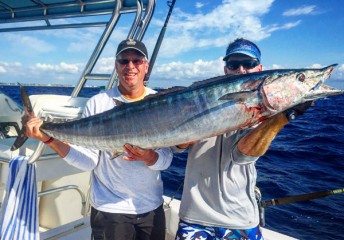
5 Things Football and Fishing Have In Common
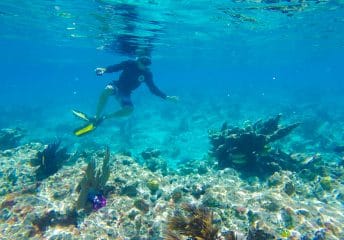
Your Tampa Bay Snorkeling Guide
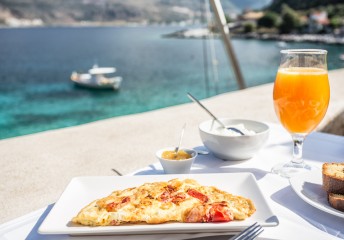
Brunch on a Boat: Here’s Our Advice
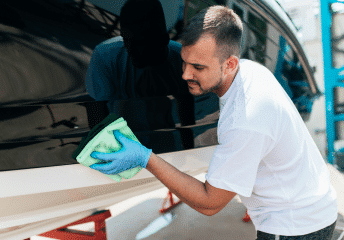
How to Clean a Boat

Types of Sailboats: A Complete Guide

Learning the different types of sailboats can help you identify vessels and choose the right boat.
In this article, we'll cover the most common kinds of sailboats, their origins, and what they're used for. We'll also go over the strengths and weaknesses of each design, along with when they're most useful.
The most common kind of sailboat is the sloop, as it's simple to operate and versatile. Other common sailboat types include the schooner, cutter, cat, ketch, schooner, catamaran, and trimaran. Other sailboat variations include pocket cruisers, motorsailers, displacement, and shoal-draft vessels.
The information found in this article is sourced from boat reference guides, including A Field Guide to Sailboats of North America by Richard M. Sherwood and trusted sources in the sailing community.
Table of contents
Distinguishing Types of Sailboats
In this article, we'll distinguish sailboats by traits such as their hull type, rig, and general configuration. Some sailboats share multiple characteristics with other boats but fall into a completely different category. For example, a sailboat with a Bermuda rig, a large engine, and a pilothouse could technically be called a sloop, but it's more likely a motorsailer.
When discerning sailboat type, the first most obvious place to look is the hull. If it has only one hull, you can immediately eliminate the trimaran and the catamaran. If it has two or more hulls, it's certainly not a typical monohull vessel.
The next trait to consider is the rig. You can tell a lot about a sailboat based on its rig, including what it's designed to be used for. For example, a long and slender sailboat with a tall triangular rig is likely designed for speed or racing, whereas a wide vessel with a complex gaff rig is probably built for offshore cruising.
Other factors that determine boat type include hull shape, overall length, cabin size, sail plan, and displacement. Hull material also plays a role, but every major type of sailboat has been built in both wood and fiberglass at some point.
Sailboat vs. Motorsailer
Most sailboats have motors, but most motorized sailboats are not motorsailers. A motorsailer is a specific kind of sailboat designed to run efficiently under sail and power, and sometimes both.
Most sailboats have an auxiliary engine, though these power plants are designed primarily for maneuvering. These vessels cannot achieve reasonable speed or fuel-efficiency. Motorsailers can operate like a powerboat.
Motorsailers provide great flexibility on short runs. They're great family boats, and they're popular in coastal communities with heavy boat traffic. However, these features come at a cost. Motorsailers aren't the fastest or most efficient powerboats, and they're also not the most agile sailboats. That said, they make an excellent general-purpose sailing craft.
Monohull vs. Multi-hull: Which is Better?
Multihull sailboats are increasingly popular, thanks to advances and lightweight materials, and sailboat design. But are they better than traditional sailboats? Monohulls are easier to maintain and less expensive, and they offer better interior layouts. Multihulls are more stable and comfortable, and they're significantly easier to control. Multihull sailboats also have a speed advantage.
Monohull Sailboats
A monohull sailboat is a traditionally-shaped vessel with a single hull. The vast majority of consumer sailboats are monohulls, as they're inexpensive to produce and easy to handle. Monohull sailboats are proven and easy to maintain, though they lack the initial stability and motion comfort of multi-hull vessels.
Monohull sailboats have a much greater rig variety than multi-hull sailboats. The vast majority of multihull sailboats have a single mast, whereas multi-masted vessels such as yawls and schooners are always monohulls. Some multi-hull sailboats have side-by-side masts, but these are the exception.
Catamaran Sailboats
The second most common sailboat configuration is the catamaran. A catamaran is a multihull sailboat that has two symmetrical hulls placed side-by-side and connected with a deck. This basic design has been used for hundreds of years, and it experienced a big resurgence in the fiberglass boat era.
Catamarans are fast, efficient, and comfortable. They don't heel very much, as this design has excellent initial stability. The primary drawback of the catamaran is below decks. The cabin of a catamaran is split between both hulls, which often leaves less space for the galley, head, and living areas.
Trimaran Sailboats
Trimarans are multi-hull sailboats similar to catamarans. Trimarans have three hulls arranged side-by-side. The profile of a trimaran is often indistinguishable from a catamaran.
Trimarans are increasingly popular, as they're faster than catamarans and monohulls and considerably easier to control. Trimarans suffer from the same spatial limitations as catamarans. The addition of an extra hull adds additional space, which is one reason why these multi-hull vessels are some of the best-selling sailboats on the market today.
Sailboat Rig Types
Rigging is another way to distinguish sailboat types. The rig of a sailboat refers to it's mast and sail configuration. Here are the most common types of sailboat rigs and what they're used for.
Sloops are the most common type of sailboat on the water today. A sloop is a simple single-mast rig that usually incorporates a tall triangular mainsail and headsail. The sloop rig is easy to control, fun to sail, and versatile. Sloops are common on racing sailboats as they can sail quite close to the wind. These maneuverable sailboats also have excellent windward performance.
The sloop rig is popular because it works well in almost any situation. That said, other more complex rigs offer finer control and superior performance for some hull types. Additionally, sloops spread their entire sail area over just to canvases, which is less flexible than multi-masted rigs. The sloop is ideal for general-purpose sailing, and it's proven itself inland and offshore.
Sloop Features:
- Most popular sailboat rig
- Single mast
- One mainsail and headsail
- Typically Bermuda-rigged
- Easy to handle
- Great windward performance
- Less precise control
- Easier to capsize
- Requires a tall mast
Suitable Uses:
- Offshore cruising
- Coastal cruising
Cat (Catboat)
The cat (or catboat) is a single-masted sailboat with a large, single mainsail. Catboats have a thick forward mast, no headsail, and an exceptionally long boom. These vessels are typically gaff-rigged, as this four-edged rig offers greater sail area with a shorter mast. Catboats were popular workboats in New England around the turn of the century, and they have a large following today.
Catboats are typically short and wide, which provides excellent stability in rough coastal conditions. They're hardy and seaworthy vessels, but they're slow and not ideal for offshore use. Catboats are simple and easy to control, as they only have a single gaff sail. Catboats are easy to spot thanks to their forward-mounted mast and enormous mainsail.
Catboat Features:
- Far forward-mounted single mast
- Large four-sided gaff sail
- Short and wide with a large cockpit
- Usually between 20 and 30 feet in length
- Excellent workboats
- Tough and useful design
- Great for fishing
- Large cockpit and cabin
- Not ideal for offshore sailing
- Single sail offers less precise control
- Slow compared to other rigs
- Inland cruising
At first glance, a cutter is difficult to distinguish from a sloop. Both vessels have a single mast located in roughly the same position, but the sail plan is dramatically different. The cutter uses two headsails and often incorporates a large spar that extends from the bow (called a bowsprit).
The additional headsail is called a staysail. A sloop only carries one headsail, which is typically a jib. Cutter headsails have a lower center of gravity which provides superior performance in rough weather. It's more difficult to capsize a cutter, and they offer more precise control than a sloop. Cutters have more complex rigging, which is a disadvantage for some people.
Cutter Features:
- Two headsails
- Long bowsprit
- Similar to sloop
- Gaff or Bermuda-rigged
- Fast and efficient
- Offers precise control
- Superior rough-weather performance
- More complex than the sloop rig
- Harder to handle than simpler rigs
Perhaps the most majestic type of sailboat rig, the schooner is a multi-masted vessel with plenty of history and rugged seaworthiness. The schooner is typically gaff-rigged with short masts and multiple sails. Schooners are fast and powerful vessels with a complex rig. These sailboats have excellent offshore handling characteristics.
Schooners have a minimum of two masts, but some have three or more. The aftermost large sail is the mainsail, and the nearly identical forward sail is called the foresail. Schooners can have one or more headsail, which includes a cutter-style staysail. Some schooners have an additional smaller sale aft of the mainsail called the mizzen.
Schooner Features:
- At least two masts
- Usually gaff-rigged
- One or more headsails
- Excellent offshore handling
- Precise control
- Numerous sail options (headsails, topsails, mizzen)
- Fast and powerful
- Complex and labor-intensive rig
- Difficult to adjust rig single-handed
- Offshore fishing
Picture a ketch as a sloop or a cutter with an extra mast behind the mainsail. These vessels are seaworthy, powerful, excellent for offshore cruising. A ketch is similar to a yawl, except its larger mizzen doesn't hang off the stern. The ketch is either gaff or Bermuda-rigged.
Ketch-rigged sailboats have smaller sails, and thus, shorter masts. This makes them more durable and controllable in rough weather. The mizzen can help the boat steer itself, which is advantageous on offshore voyages. A ketch is likely slower than a sloop or a cutter, which means you aren't likely to find one winning a race.
Ketch Features:
- Headsail (or headsails), mainsail, and mizzen
- Mizzen doesn't extend past the rudder post
- Good offshore handling
- Controllable and mild
- Shorter and stronger masts
- Easy self-steering
- Slower than sloops and cutters
- Less common on the used market
A dinghy is a general term for a small sailboat of fewer than 28 feet overall. Dinghys are often dual-power boats, which means they usually have oars or a small outboard in addition to a sail. These small boats are open-top and only suitable for cruising in protected waters. Many larger sailboats have a deployable dinghy on board to get to shore when at anchor.
Dinghy Features:
- One or two people maximum capacity
- Easy to sail
- Works with oars, sails, or an outboard
- Great auxiliary boat
- Small and exposed
- Not suitable for offshore use
- Going from anchor to shore
- Protected recreational sailing (lakes, rivers, and harbors)
Best Sailboat Type for Stability
Stability is a factor that varies widely between sailboat types. There are different types of stability, and some sailors prefer one over another. For initial stability, the trimaran wins with little contest. This is because these vessels have a very high beam-to-length ratio, which makes them much less prone to rolling. Next up is the catamaran, which enjoys the same benefit from a wide beam but lacks the additional support of a center hull section.
It's clear that in most conditions, multihull vessels have the greatest stability. But what about in rough weather? And what about capsizing? Multihull sailboats are impossible to right after a knockdown. This is where full-keel monohull sailboats excel.
Traditional vessels with deep displacement keels are the safest and most stable in rough weather. The shape, depth, and weight of their keels keep them from knocking over and rolling excessively. In many cases, these sailboats will suffer a dismasting long before a knockdown. The primary disadvantage of deep-keeled sailboats is their tendency to heel excessively. This characteristic isn't hazardous, though it can make novice sailors nervous and reduce cabin comfort while underway.
Best Sailboat Type for Offshore Cruising
The best sailboat type for offshore cruising is the schooner. These graceful aid robust vessels have proven themselves over centuries as durable and capable vessels. They typically use deep displacement keels, which makes them stable in rough weather and easy to keep on course.
That said, the full answer isn't quite so simple. Modern multihull designs are an attractive option, and they have also proven to be strong and safe designs. Multihull sailboats are an increasingly popular option for offshore sailors, and they offer comfort that was previously unknown in the sailing community.
Many sailors cross oceans in basic Bermuda-rigged monohulls and take full advantage of a fin-keel design speed. At the end of the day, the best offshore cruising sailboat is whatever you are comfortable handling and living aboard. There are physical limits to all sailboat designs, though almost any vessel can make it across an ocean if piloted by a competent skipper and crew.
Best Sailboat Type for Racing The modern lightweight Bermuda-rigged sailboat is the king of the regatta. When designed with the right kind of hull, these vessels are some of the fastest sailboats ever developed. Many boats constructed between the 1970s and today incorporate these design features due to their favorable coastal and inland handling characteristics. Even small sailboats, such as the Cal 20 and the Catalina 22, benefit from this design. These boats are renowned for their speed and handling characteristics.
Related Articles
Daniel Wade
I've personally had thousands of questions about sailing and sailboats over the years. As I learn and experience sailing, and the community, I share the answers that work and make sense to me, here on Life of Sailing.
by this author
Learn About Sailboats
Most Recent

What Does "Sailing By The Lee" Mean?
October 3, 2023

The Best Sailing Schools And Programs: Reviews & Ratings
September 26, 2023
Important Legal Info
Lifeofsailing.com is a participant in the Amazon Services LLC Associates Program, an affiliate advertising program designed to provide a means for sites to earn advertising fees by advertising and linking to Amazon. This site also participates in other affiliate programs and is compensated for referring traffic and business to these companies.
Similar Posts

Affordable Sailboats You Can Build at Home
September 13, 2023

Best Small Sailboat Ornaments
September 12, 2023

Discover the Magic of Hydrofoil Sailboats
December 11, 2023
Popular Posts

Best Liveaboard Catamaran Sailboats
December 28, 2023

Can a Novice Sail Around the World?
Elizabeth O'Malley
June 15, 2022

4 Best Electric Outboard Motors

How Long Did It Take The Vikings To Sail To England?

10 Best Sailboat Brands (And Why)
December 20, 2023


7 Best Places To Liveaboard A Sailboat
Get the best sailing content.
Top Rated Posts
© 2024 Life of Sailing Email: [email protected] Address: 11816 Inwood Rd #3024 Dallas, TX 75244 Disclaimer Privacy Policy
No products in the cart.
Sailing Ellidah is supported by our readers. Buying through our links may earn us an affiliate commission at no extra cost to you.
The Different Parts Of A Sailboat Explained
A sailboat consists of hundreds of parts, each with its specific term and function. From stern to bow, keel to mast, each part and its equipment plays a vital role in making the vessel seaworthy and able to sail.
In this guide, I’ll show you most of the components so you can better understand what they are and their function. We’ll begin with the main components, move to the basic features, and finish with our interior and equipment.
The main parts of a sailboat
The main parts of a sailboat are the key components that make it a vessel able to sail. You’ll notice that the structure has several distinct differences from powerboats.
We can categorize the main parts into the following:
- Hull: The main structure, or “body” part of a boat.
- Keel: The heavy fin at the bottom allows stability under sail.
- Rudder: The fin sticking down at the stern, allowing us to steer the vessel.
- Mast: The “spars” or “poles” holding the sails.
- Rigging: The standing rig is the wires that supports the mast. The running rigging is all the lines that control the sails.
- Boom: The horizontal spar supporting the bottom of the mainsail.
- Sails: The canvas used to harness the energy of the wind.
Let’s dig a bit deeper into each of the components.
Hull – The main structure
A sailboat’s hull is the vessel’s main body or structure. The shape is vital to the boat’s performance and stability, and you have probably seen boats in many different forms. Older vessels are typically narrow, with a rounded underbody and a small stern. Modern designs have a flatter belly and broad stern supporting dual helm stations.
One of the hull’s primary functions is to displace water and provide buoyancy to keep the boat afloat. The hull is also the structure that holds the vessel’s living compartments and all its equipment. The main structure must be strong enough to withstand the forces of the water and any rough weather conditions that Mother Nature might throw at it.
Fiberglass (GRP), steel, aluminum, and wood are the most commonly used hull materials, each with pros and cons.
You can learn more about hull materials and their strengths in this article .
A monohull is a type of sailboat that has a single hull. Monohulls are classified into two categories based on weight and shape: planing and displacement hulls.
Sailboats with more than one hull are called multihulls. There are two types of multihulls: catamarans, which have two, and trimarans, which have three. These boats are typically designed with planing hulls.
Keel – The fin under the boat
The keel of a sailboat is a structural fin that extends downward from the bottom of the hull. There are several types of keels, each with unique characteristics and advantages. They all serve the same fundamental purpose of stabilizing the boat when we sail by adding lateral resistance in the water and weight at the vessel’s bottom.
Standard keel designs include:
- Lifting Keel
Some sailboats have a retractable centerboard functioning as their keel, allowing them to take the boat into shallower areas.
Rudder – To steer the boat
The rudder is a flat surface that sits perpendicular to the waterline. It is connected to the boat by a pivot point, allowing it to swivel left and right. When the steering wheel or tiller is turned, the rudder moves, creating drag in the water causing the boat to turn. The size and shape of the rudder can vary depending on the size and type of boat.
The most commonly seen rudder designs:
- Full skeg-supported
- Semi skeg-supported
Skeg-supported rudders are structurally one of the most reliable and robust constructions, but they are less efficient than a balanced rudder performance-wise. Balanced rudders pivot around their vertical center, giving less drag in the water and higher maneuverability at the cost of being a more vulnerable construction.
Twin rudders are often seen on modern performance sailboats with a wide stern. When the sailboat heel over , the leeward rudder gets better track through the water than a single rudder placed at the vessel’s center line. Contrary to some misconceptions, they can’t be controlled individually, even if the boat has two steering wheels.
Mast and Rigging – Supporting the sails
The mast is the long vertical spar that extends upward from the deck of a sailboat and holds the sails. It is the tallest part of the boat and is typically made of wood, aluminum, or carbon fiber. The mast is held in place by stays and shrouds, which form the sailboat’s standing rigging.
Depending on the rig the boat is manufactured with, there are several different types of masts. For example, a sloop-rigged sailboat will have only one main mast, while a ketch-rigged vessel will have a smaller additional mizzen mast placed further aft from the main mast.
There are two types of rigging:
- The Standing rigging consists of the stays and shrouds that keep the mast or masts in place.
- The Running rigging is the lines we use to hoist, lower, and control the sails.
Pro Tip: “S par” is a general term for a pole made of a solid material like wood, metal, or composite and is used to support a boat’s sail. The mast, boom, spreaders, and poles are defined as spars.
Boom – Supporting the mainsail
The boom is a horizontal beam extending from the mast and supporting the mainsail’s tack and clew (bottom two corners). It is attached to the mast by a hinge called a Gooseneck .
We use the boom to control the shape and angle of the mainsail to optimize its efficiency and power. Some booms also have a Vang or Rod-Kicker installed to assist in trimming the mainsail.
Sails – The canvas used to harness the energy of the wind
Most vessels have at least two sails, depending on the rig type and boat setup.
The Mainsail flies behind the mast, on top of the boom. Although it may not always be the largest sail on the vessel, we commonly refer to it as “the main.”
The Headsail(s ), located in front of the mast, are often of different sizes and shapes, and many sailboats have more than one. The Jib and Genoa are two of the most common types.
Different types of sails are used for various sail plans and situations, and you can learn more about them in this guide .
Now that we had a look at the main parts of the boat, let us dive deeper and look at the rest of the vessel.
The starboard and port side of the boat
Learning about the boat’s components is very important, but we must also know how to orient ourselves on the vessel. Using the words “left and right” on onboard often leads to confusion.
If you refer to something on the left side of the boat, the person facing you will be confused. He won’t know if you are referring to his or your left. This is where the terms “Port” and “ Starboard ” make better sense.
When facing the front of the boat or the bow , your left side of the boat is the port side, and the right-hand side is the starboard . If you turn around and face the back of the boat or the stern , your right-hand side will be the port side.
- A red light identifies the port side of a vessel.
- A green light identifies the starboard side of a vessel.
Windward and Leeward
- The windward side of the boat is the side facing the wind. If the wind comes from your right-hand side while facing forward, the starboard side is windward. This will be the boat’s high side as the wind heels the boat over.
- The leeward side of the boat is the side opposite to the wind. This will be the lower side of the ship while sailing as the wind heels the boat over.
Windward and leeward are two of the most important aspects to understand when sailing and navigating. Not only to identify equipment and gear on each side of the boat but to avoid collisions when sailing close to other vessels. There are rules on the water dictating which boat is “Stand On” and which has to “Give Way” depending on whether you are the windward or the leeward vessel in the situation.
Read this article to access a free course on navigation rules .
Basic parts of a sailboat
The boat’s bow is the front part, typically shaped like a “V” to cut through the waves. Larger vessels often have a locker for their anchor chain in this section, holding the anchor at the front.
The midship section is the center of the boat. Some refer to this part as amidships.
The stern is the rear or back part of the boat. It is also referred to as the aft . I’ve had French crew calling the stern the butt of the vessel, which is funny but also correct!
The beam is the widest part of the boat. Also referred to as the sides on the middle.
The transom is a flat surface across the stern of the boat.
The waterline is the part where the hull (body) of the boat meets the water. Many vessels have a painted stripe to mark the waterline, indicating how loaded the ship is. If you have too much stuff on board, the waterline goes underwater, and it is time to do some housekeeping!
The freeboard is the vertical part of the ship side between the water and the deck. When you see a blue boat like Ellidah, the freeboard is the blue part.
The deck is the “floor” of the boat when you are outside. You have probably heard the term “All hands on deck!” The front deck is the deck space in front of the mast. Side decks are the decks on the boat’s sides.
The mid-deck is between the cockpit and the mast. The aft deck is the deck behind the cockpit. Sailboats with aft cockpits often don’t have any aft decks, but some have a swimming platform instead.
The cockpit is the boat’s steering position and where you will find the helm.
The helm is the position the helmsman uses to steer the boat. Smaller sailboats often use a tiller to navigate, while most bigger yachts have one or two steering wheels.
Main parts below deck (inside the boat)
Let us look at the interior to highlight and learn about the parts we have below the deck.
The Companionway
The companionway is the “front door” of the boat. This is where the steps lead from the cockpit or deck down below. It is usually opened and closed using a hatch, two doors, or a plate.
The Galley
The galley is the boat’s kitchen. This is where sailors prepare their delicious meals.
The Saloon
The saloon is basically the boat’s living room, usually where you find the settee and dinette. This is where delicious meals from the galley are served together with refreshing beverages in good company.
The settee is the sofa or couch in a boat. It is also used as a sea berth to sleep in when sailing.
The dinette is the area where you can sit down at a table and eat your dinner. It’s also perfect for consuming rum and a game of cards in good company.
A cabin is often used as a bedroom in a boat but is not necessarily where you sleep. Many boats have more than one cabin.
A berth is a place in the boat where you can sleep. This doesn’t necessarily have to be a bed and can often include the sleeping space in the saloon. Sea-berth usually refers to a sleeping position where you are tucked well in and can sleep when the boat is heeling over and moving around.
The head is the toilet on a boat. If your skipper tells you to go and clean the head, getting out the shampoo won’t do you any good!
Nav station
The navigation station is usually a chart table and a console with mysterious instruments like radios, switchboards, and complicated electronics. This is where adventures are planned and the skipper’s favorite seat onboard.
The bilge is a space in the bottom of the hull where water collects and sometimes a storage space for all sorts of things. It usually contains a bilge pump to pump out water that finds its way into the boat in various places.
A v-berth is a bed in the front cabin shaped like a V.
A bulkhead is a wall inside the boat, usually supporting the structure.
Hardware and Equipment
Sailboats come equipped with a variety of different hardware and equipment. While the specific items may vary from boat to boat, there are some essentials that nearly every sailboat has.
A winch is a metal drum that gives you a mechanical advantage and is used to control and tighten lines. These can be operated by turning a line around it and pulling manually or by a winch handle to get more force.
Most modern winches are so-called “self-tailing,” which means they lock the line on so you can winch the line without holding on to it. Some boats even have electrical winches operated by a button.
A cleat is a fitting used to fasten a rope. Most boats have at least 6 of these. One on each side on the bow, midship and stern. These are used to secure the boat to a mooring buoy or key. Many ships have more cleats than this for various lines and ropes, and they can be used for anything as they are strong points fitted to the hull.
The sprayhood is the boat’s windshield that protects the people in the cockpit from sea spray. Some vessels have a canvas sprayhood that can be folded down or removed. Others have solid sprayhoods, often called a hard dodger or a doghouse .
The bimini is the cockpit’s “roof.” It protects you from the elements and shelters you from spray, rain, and burning sun rays! A bimini can be made of canvas or hard material. A hard bimini can also be called a hardtop .
Dinghy
A dinghy is a little boat you use to get from the mothership to shore when you are at anchor, also called a tender or annex . It can be everything from a small inflatable rubber kayak to a RIB or even a solid boat.
An essential and valuable piece of kit as it is the daily driver for most cruisers. It is like the car of a land crab, used for all commuting on the water and hauling important stuff like beer, rum, and food onboard. Dinghies often have electric or petrol engines, which we call outboards.
Dinghies are also great to use for watersports, such as wakeboarding!
Like Captain Ron said in the movie, fenders are the rubber bumper things you hang off your boat to prevent it from scratching against something like the pontoon or another ship. It is conveniently also used to sit on or as a backrest while relaxing on deck.
A boat hook is a long stick with a hook at the end. Used to grab lines, items, and stuff that is too far to reach by hand, like cushions flying overboard. It is also convenient as a tool to push the boat away from another craft or the key. Most vessels have them on board.
The guard rail can be a flexible wire or a solid metal rail surrounding the boat to prevent us from falling overboard. Some also use a net as an addition for increased safety.
The pushpit is a metal guard rail around the stern of the boat. This is where the guard rail is secured on the stern: a common place to mount the BBQ, life raft, and the outboard for the dinghy.
The pulpit is the metal guardrail on the bow. This is where the guard rail is secured onto the bow.
The stanchions are the metal bars that keep the guard rail in place around the boat between the pushpit and the pulpit.
An arch is a typical structure made of stainless steel on the back of a boat and is often used to mount a variety of items like antennas, radars, solar panels, wind generators, etc. It is also convenient to use for lifting the dinghy and its outboard.
Ground Tackle
The ground tackle consists of several things:
- Your anchor
- Your anchor chain
- The link between the two
- The connection between the chain and your boat
It includes all equipment holding your boat to the ground. Larger boats sometimes have two anchors on the bow.
A windlass is a winch that hoists and lowers the anchor and chain. Most boats have one on the bow and some on the stern. These incredible things can be electrical or manual (some are both) and are essential to anchor your boat when not in a port or marina.
VHF stands for “Very High-Frequency Radio.” It broadcasts on the VHF network and allows you to communicate with others around you. Sadly, you won’t be able to tune in to your favorite radio show on these.
Still, they are essential for contacting other boats and port authorities. It is also the radio you will transmit an emergency mayday over in case of emergency. VHF radios sometimes require a license, depending on the country you are in.
Chartplotter
A Chartplotter is a navigation computer that shows various information on a screen, like charts, routes, radar images, etc. It is another vital piece of equipment that helps you navigate and maneuver the boat.
Final words
I hope this guide has been helpful and not too overwhelming for you. We’ve covered many of the parts of a sailboat and its terms and functions, but this article only touches on the basics. If you want to keep learning about sailing, I have written several other guides to help you get started.
Now that you have a basic understanding of sailboats, it’s time to take the next step and dive into a sailboat’s standing rigging .
Sharing is caring!
Skipper, Electrician and ROV Pilot
Robin is the founder and owner of Sailing Ellidah and has been living on his sailboat since 2019. He is currently on a journey to sail around the world and is passionate about writing his story and helpful content to inspire others who share his interest in sailing.
Leave a Reply Cancel reply
Your email address will not be published. Required fields are marked *
Types of Sailboats: Essential Guide for Every Sailor
Sailboats have been an essential part of human history, contributing to exploration, trade, and leisure. With a myriad of designs and sizes, these versatile vessels cater to various purposes and preferences. The defining characteristics of sailboats come from their rigging, sails, and hull design.
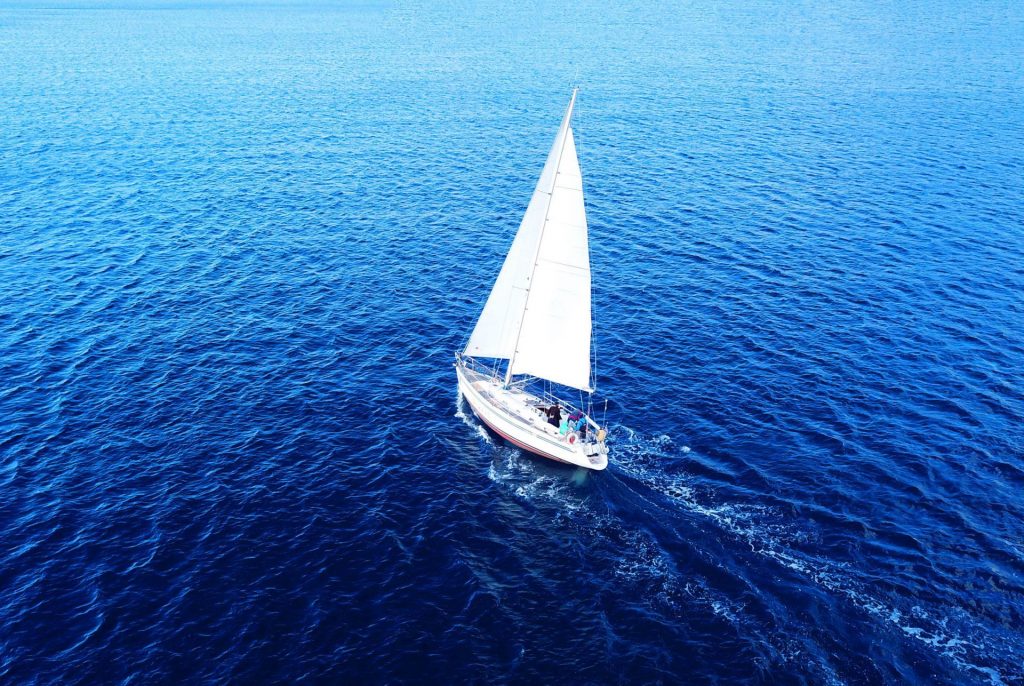
The basics of sailboat design play a significant role in the classification and function of these vessels. Hull shapes, keel types, and construction materials contribute to the speed, stability, and maneuverability of sailboats. Additionally, rigging and sails come in various shapes and sizes, which influence sailing performance and handling.
Key Takeaways
- Sailboats are classified by hull design, rigging, and sails that serve specific purposes.
- Designs and materials have a direct impact on the performance and handling of sailboats.
- A wide range of sailboat types exists, which cater to different needs and preferences.
Basics of Sailboat Design
Sailboats come in various shapes and sizes, designed for different purposes and sailing conditions. One can classify sailboats based on hull types, keel types, and mast configurations. This section will briefly discuss these basic components of sailboat design.
There are mainly two types of hulls: monohull and multihull.
- Monohull : This is the traditional and most common type of sailboat hull. It consists of a single hull, providing stability through the use of a keel or centerboard. Monohulls come in various shapes and sizes, suitable for various sailing conditions.
- Catamaran : Catamarans have two parallel hulls of equal size, offering increased stability and speed compared to monohulls. They are commonly used for cruising and racing.
- Trimaran : Trimarans have three hulls, with a larger central hull and two smaller outrigger hulls. This design offers even more stability and speed than catamarans.
The keel is an essential component in sailboat design, helping with stability and performance. There are various keel types, including:
- Full keel : This traditional design features a long and wide keel that extends along the boat's bottom. It offers good tracking and stability but sacrifices speed and maneuverability.
- Fin keel : Fin keels are shorter and deeper than full keels, providing a better combination of stability and maneuverability. These are common in modern monohull sailboats.
- Bulb keel : A bulb keel features a fin keel with a heavy bulb at the bottom, which concentrates the boat's weight, increasing stability and performance in rough conditions.
- Swing keel or centerboard : Swing keels and centerboards can be raised or lowered, allowing the boat to adapt to different water depths and sailing conditions. They are common in smaller boats and racing sailboats.
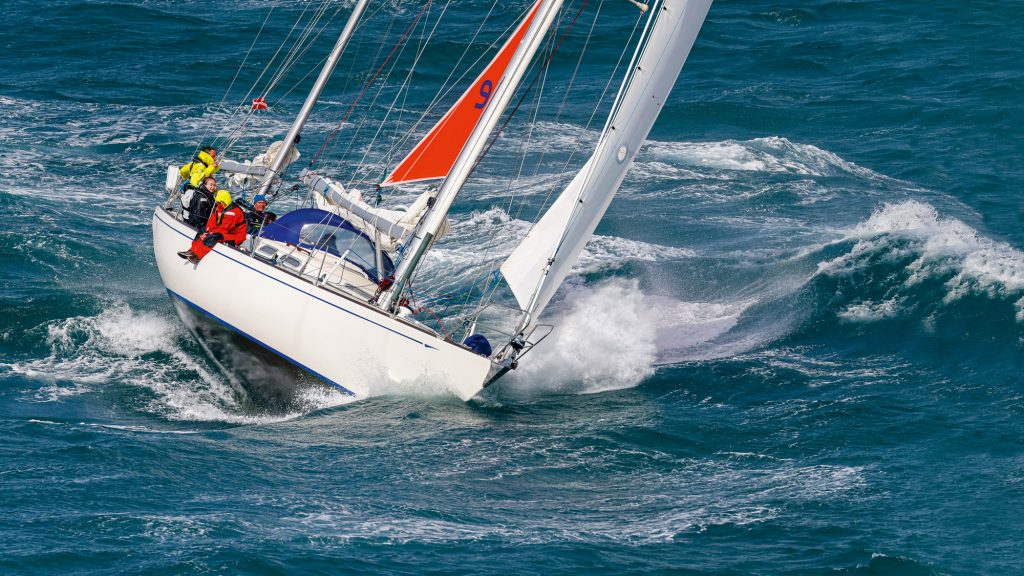
Mast Configuration
The mast configuration affects the sail plan and overall performance of a sailboat. Some common mast configurations include:
- Sloop : This is the most popular mast configuration and features a single mast with a mainsail and a headsail. The simple design makes it easy to handle and suitable for various sailing conditions.
- Cutter : Similar to the sloop, the cutter also has a single mast but carries two headsails, providing more sail area and better performance in heavy weather.
- Ketch : A ketch configuration has two masts: a taller main mast and a shorter mizzen mast. This design offers more flexibility in sail combinations and better balance in different sailing conditions.
- Yawl : Similar to a ketch, a yawl also features two masts but the mizzen is located further aft and is smaller. This design provides better balance and control, particularly in downwind sailing scenarios.
In conclusion, the basics of sailboat design involve selecting the appropriate hull type, keel type, and mast configuration for the desired sailing performance and conditions. Understanding these concepts can help sailors make informed decisions when choosing a sailboat or planning their sailing adventures.
Rigging and Sails
When it comes to sailboats, the rigging and sails play a crucial role in the boat's overall performance and capabilities. This section will briefly cover popular rig types and sail types seen on different sailboats.
There are several types of rigs commonly found on sailboats:
- Sloop : Sloops are the most common type of rig found on modern sailboats. They have a single mast with a mainsail and a single headsail, typically a genoa or jib.
- Ketch : Ketches have two masts, with the main mast taller than the mizzen mast situated aft. They carry a mainsail on the main mast and a mizzen sail on the mizzen mast. Ketches benefit from easier handling and reduced sail area under strong winds.
- Yawl : Similar to ketches, yawls have two masts, but the mizzen mast is smaller and sits further aft, behind the rudder post. Yawls are often chosen for their graceful appearance and improved balance.
- Schooner : Schooners have two or more masts, with the aft mast(s) typically taller than the forward mast(s). Schooners can handle more sails, offering increased sail area for better performance, especially downwind.
- Catboat : Catboats are single-masted sailboats with a single, large mainsail and no headsails. They have a wide beam, which provides stability and ample space for passengers.
- Cutter : Cutters are similar to sloops but carry two headsails, usually a jib and staysail. Cutters may have multiple headsails for increased versatility in various wind conditions.
In addition to the types of rigs, there are also several types of sails used on sailboats, including:
- Mainsail : The primary sail attached to the back of the main mast. It is typically raised on a track or luff groove and managed by a combination of halyard, sheet, and boom vang.
- Genoa : A large triangular sail that overlaps the mainsail, typically used in light winds to provide additional surface area for better performance.
- Jib : A smaller, non-overlapping triangular sail attached to the forestay. Jibs are easier to manage than genoas and are used in a variety of wind conditions.
- Spinnaker : A large, lightweight sail used primarily for downwind sailing . Spinnakers are often brightly colored and shaped like a parachute to catch wind efficiently.
- Staysail : A smaller sail typically used in cutter rigs, positioned between the main mast and the forestay. Staysails provide additional sail area and versatility in varied wind conditions.
Understanding the relationship between sail and rigging can help sailors optimize the performance of their sailboats. With various options for rig types and sail types, each sailboat can be configured to meet the unique needs of its skipper and crew.
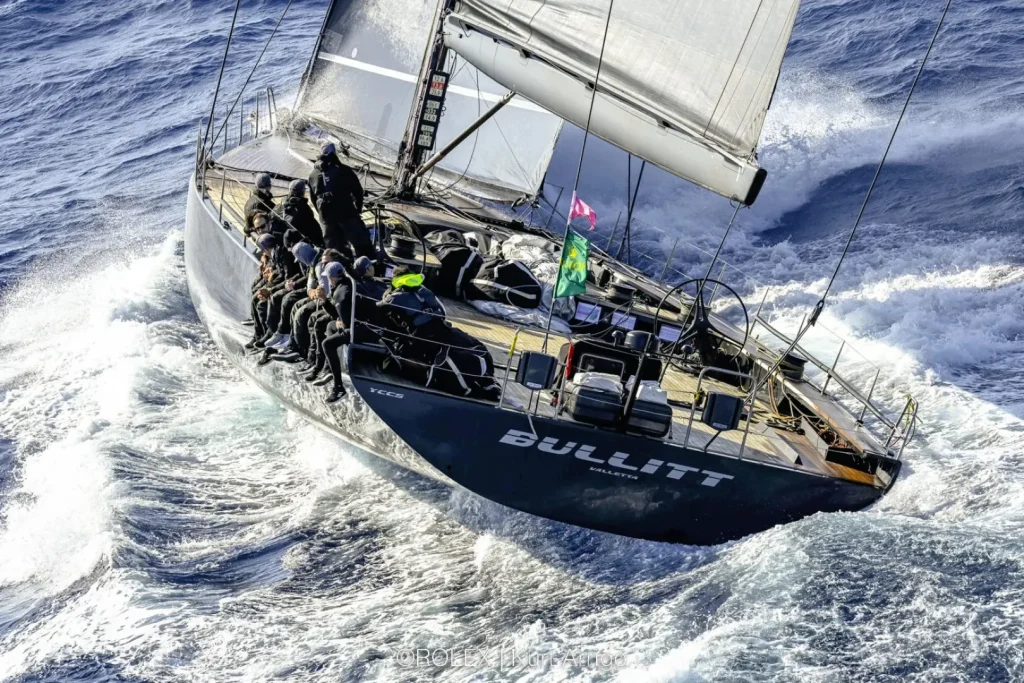
Classes and Types of Sailboats
Monohulls are the most common type of sailboats, consisting of a single hull that provides stability and balance. They come in various sizes and designs, depending on their intended use. Some popular monohull sailboats include the Optimist , Finn, and Sunfish, which are frequently used for racing and recreational sailing. Monohulls tend to have a deeper draft, requiring more water depth than their multi-hull counterparts.
Multihulls, also known as multi-hull sailboats, are a more modern innovation in sailing. They feature two or more hulls connected by a frame or bridgedeck. This design offers increased stability and speed over monohulls. Some common types of multihulls are catamarans (with two hulls) and trimarans (with three hulls). Due to their wider beam and shallower draft, multihulls are particularly suitable for cruising in shallow waters and provide more living space on board.
One-Design Sailboats
One-Design sailboats are a specific class of racing sailboats in which all boats are built to the same design specifications, ensuring that the competition focuses on the skill of the sailor rather than the design of the boat. These boats must adhere to strict rules and standards, with minimal variations allowed in terms of hull shape, sail area, and rigging. Some popular one-design sailboats include the Enterprise and the aforementioned Optimist and Finn sailboats.
Dinghies and Skiffs
Dinghies and skiffs are small, lightweight sailboats that are often used for sailing classes, short-distance racing, or as tenders to larger boats. Dinghies usually have a single mast with a mainsail and sometimes a small jib. Some popular types of sailing dinghies include the Optimist, which is specifically designed for children, and the versatile Sunfish sailboat. Skiffs, on the other hand, are high-performance sailboats primarily used for racing. They have a larger sail area relative to their size and typically include features such as trapezes and planing hulls, which allow for faster speeds and greater maneuverability.
In conclusion, there are various classes and types of sailboats, each with its own unique features and characteristics. From the simplicity of monohulls to the stability and speed of multihulls, and from the fair competition of one-design sailboats to the excitement of dinghies and skiffs, there is a sailboat to satisfy every sailor's preferences.
Sailboat Size and Use
When exploring the world of sailboats, it's important to understand their different sizes and purposes. Sailboats can be categorized into three main types, each with unique characteristics and uses: Day Sailers , Racing Sailboats, and Cruising Sailboats .
Day Sailers
Day Sailers are small sailboats typically ranging from 10 to 24 feet in length. These boats are perfect for short sailing trips and are easy to maneuver for beginners. They have limited accommodations on board, providing just enough seats for a small group of people. Some popular day sailer models include the Laser, Sunfish, and Flying Scot. Lightweight and agile, Day Sailers are often used for:
- Recreation: casual sailing or exploring nearby waters with family and friends
- Training: beginner sailing lessons or practicing sailing techniques
- Competition: local club races or interclub regattas
Racing Sailboats
Racing Sailboats are designed to provide maximum speed, maneuverability, and efficiency on the water. Sizes may vary greatly, from small dinghies to large yachts. Key features of racing sailboats include a sleek hull shape, high-performance sails, and minimalistic interiors to reduce weight.
Career racers and sailing enthusiasts alike participate in various types of racing events , such as:
- One-design racing: all boats have identical specifications, emphasizing crew skill
- Handicap racing: boats of different sizes and designs compete with time adjustments
- Offshore racing: long-distance racing from one point to another, often around islands or across oceans
Cruising Sailboats
Cruising Sailboats are designed for longer journeys and extended stays on the water. They typically range from 25 to 70 feet in length and provide comfortable accommodations such as sleeping cabins, a galley, and storage spaces for supplies and equipment. Sailing cruisers prioritize stability, comfort, and durability for their voyage.
Here are some common types of cruising sailboats:
- Cruiser-racers: These boats combine the speed of a racing sailboat with the comfort and amenities of a cruising sailboat. They are ideal for families or sailors who enjoy participating in racing events while still having the option for leisurely cruises.
- Bluewater cruisers: Designed for handling the world's most demanding ocean conditions, bluewater cruisers are built with a focus on sturdy, self-reliant sailboats that can withstand long-distance voyages and challenging weather conditions.
- Multihulls: Catamarans and trimarans are gaining popularity in the cruising world for their typically more spacious interiors and level sailing characteristics. With two or three hulls, multihulls offer high levels of stability and speed for a comfortable cruising experience.
Understanding the differences between various sailboat types will help potential sailors select the perfect vessel for their sailing goals, skills, and preferences. Day Sailers, Racing Sailboats, and Cruising Sailboats each have their unique features, catering to distinct uses and sailing experiences.
Advanced Sailboat Features
Sailboats have evolved over time, and many advanced features have been developed to enhance performance and safety. In this section, we will discuss some of the key advanced features in modern sailboats, focusing on performance enhancements and safety/navigation.
Performance Enhancements
One critical component that impacts a sailboat's performance is the type of keel it has, which affects stability, resistance, and maneuverability . There are several kinds of keels such as fin keel , wing keel , and bulb keel . Fin keels offer low drag and high efficiency, making them suitable for racing sailboats. On the other hand, wing keels provide better stability at low speeds, while bulb keels provide a lower center of gravity to enhance overall stability and comfort during long voyages.
Another feature that contributes to a sailboat's performance is its sails and rigging. The jib is a triangular sail at the front of the boat, which helps improve its upwind performance. More advanced sailboats use a combination of shrouds , which are the supporting cables running along the sides of the boat, and stays , the cables that help hold the mast in place, to create a stable and efficient rigging system.
A sailboat's performance can also be influenced by the presence of a centerboard or daggerboard , which can be adjusted to optimize stability, maneuverability, and speed. When racing or navigating in shallow waters, retractable centerboards and daggerboards are particularly useful as they provide better performance and versatility.
Safety and Navigation
Safety and navigation onboard a sailboat relies on a combination of advanced gear and equipment. A modern sailboat is usually equipped with:
- GPS and chartplotters to assist with navigation and planning routes
- VHF radios for communication with other vessels and authorities
- Radar to detect obstacles, weather systems, and other vessels
- AIS (Automatic Identification System) which helps monitor nearby vessel traffic
The design of a sailboat's hull, rigging, sails, and hardware also contribute to its safety. The boom , the horizontal pole that extends the sail, should be properly secured and designed to avoid accidents while sailing. The keel , whether it's a fin, wing, or bulb keel, plays a vital role in the overall stability and safety of the sailboat. The choice of keel should be based on the intended use of the sailboat and the prevailing sailing conditions.
In summary, advanced sailboat features significantly improve the performance, safety, and navigation capabilities of modern sailboats. Innovations in keel design, rigging systems, and onboard navigational equipment have undoubtedly contributed to the overall enjoyment and safety of sailing.
Sailboat Ownership
Buying Considerations
When considering buying a sailboat , it is important to understand the different types of sailboats available and the purpose each serves. Sailboats can be broadly categorized into three types:
- Racing sailboats: Designed for speed and performance, with minimalistic interiors and advanced sail systems.
- Cruising sailboats: Built for comfort and longer trips, featuring more spacious interiors and amenities.
- Daysailers: Smaller, easy-to-handle boats that are often used for short trips and recreational sailing.
Prospective boat owners should consider factors such as boat size, type, budget, and intended use (solo vs. family sailing, charter operations, etc.). It's also essential to evaluate the availability of necessary gear and the level of experience required to handle the chosen sailboat.
Maintenance and Upkeep
Sailboat ownership involves maintenance and upkeep to ensure the boat remains functional, safe, and holds its value. Some common maintenance tasks include:
- Hull cleaning and inspection: Regularly inspect the hull for damages and clean off any growth to maintain performance and fuel efficiency.
- Antifouling paint: Apply antifouling paint to prevent marine organisms from attaching to the hull, which can negatively impact the boat's performance.
- Engine maintenance: Check and replace engine oil, inspect cooling and fuel systems, and clean or replace air filters.
In addition to regular maintenance, sailboat owners should also be prepared to replace or repair critical systems and components, such as:
- Sails: Monitor the condition of your sails and replace them as needed to maintain performance and safety.
- Rigging: Regularly inspect and maintain the standing and running rigging, and replace worn or compromised parts.
- Electronics and instruments: Ensure navigation systems, radios, and other electronic equipment are functioning properly.
Taking proper care of a sailboat can be time-consuming, and some owners may choose to charter their boats when not in use as a way to offset ownership costs. Others may opt for hiring professionals to manage routine maintenance, particularly when sailing solo or with limited sailing experience.
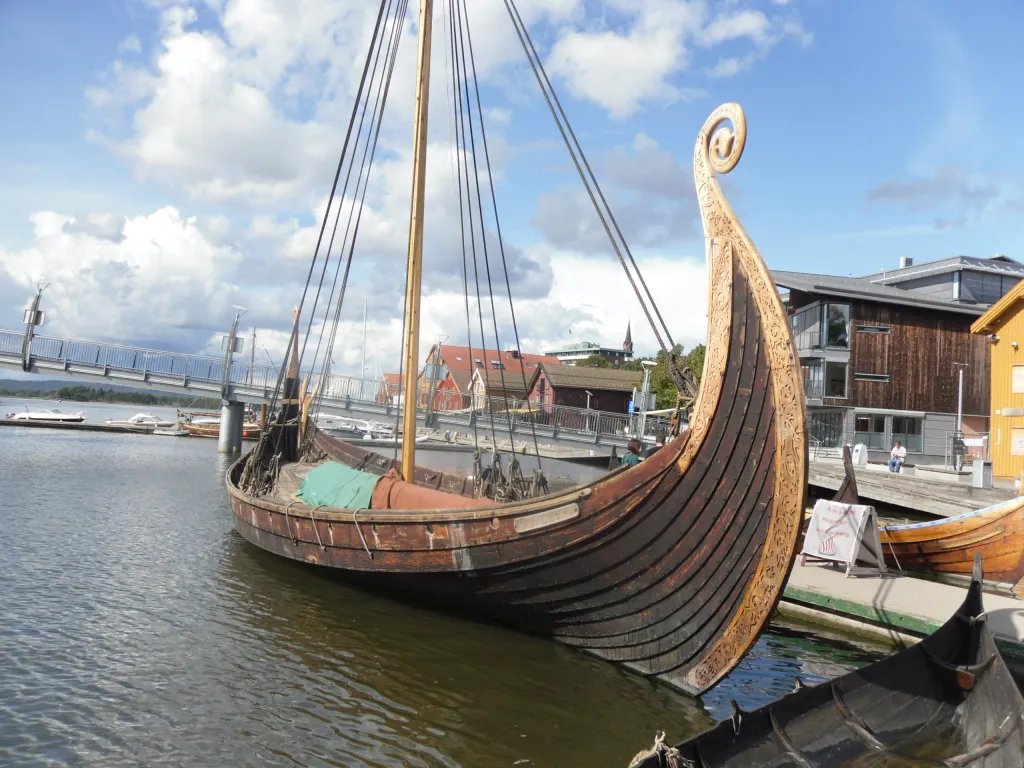
Historical and Special Sailboats
Tall ships and gaffers.
Tall Ships are large, traditionally rigged sailing vessels with multiple masts, typically square-rigged on at least one of their masts. Some examples of these ships include the clipper, brig, and square-rigged vessels. The clipper is a fast sailing ship known for its sleek hull and large sail area, while the brig features two square-rigged masts. Square-rigged ships were known for their impressive sail area and could cover large distances quickly.
Gaffers are a subset of historical sailing vessels with a gaff mainsail as their primary sail type. This gaff-rig is characterized by a spar (pole) that extends the top edge of the mainsail, giving it a quadrilateral shape to optimize wind coverage. Gaff mainsails were commonly used in England and influenced the development of other sailing vessels.
Classic and Antique Sailboats
Classic and antique sailboats refer to older, traditionally designed sailing vessels that have been preserved or restored. They often feature wooden construction and showcase a variety of rigging types, including gaff rigs and square rigs. These historical sailboats have unique designs, materials, and techniques that have since evolved or become rare.
Here are some examples of antique and classic sailboats:
- Sloop : A single-masted sailboat with a Bermuda rig and foresail
- Cutter : A single-masted vessel with a similar rig to the sloop, but with additional headsails for increased maneuverability
- Ketch : A two-masted sailboat with a smaller mizzen mast aft of the main mast
In summary, historical and special sailboats encompass a wide range of vessel types, from large, multi-masted tall ships to smaller, single-masted gaffers and classic sailboats. These vessels reflect the rich maritime history and the evolution of sailing techniques and designs over time.
Sailboat Culture and Lifestyle
Sailboat culture and lifestyle encompass a variety of aspects including racing events, leisurely cruising, and exploring new destinations. The main types of sailboats include racing yachts, cruising sailboats, and motorsailers, each offering a unique experience for sailors.
Regattas and Racing Circuits
A popular aspect of sailboat culture involves participating in regattas and racing circuits . These events create a competitive atmosphere and develop camaraderie among sailors. Racing sailboats are specifically designed for speed and agility , and sailors often team up to compete in prestigious races such as the Rolex Sydney Hobart Yacht Race or the America's Cup. Yacht clubs play an essential role in cultivating this competitive sailing environment.
Sailboat Charter and Tourism
Another facet of sailing culture is the sailboat charter and tourism industry, which allows people to experience the cruising lifestyle without owning a sailboat. Charters are offered for various types of sailboats, from family-sized cruising vessels to luxurious superyachts . Yacht sailing provides tourists with a unique travel experience, as they can explore diverse destinations, immerse themselves in local cultures, or simply relax on the open water.
Cruising sailboats are designed to provide comfortable living spaces and amenities, making them perfect for longer journeys or exploring remote destinations. Motorsailers, on the other hand, are equipped with both sails and engines, offering versatility and convenience for sailors.
Some popular sailing destinations include the Caribbean, Mediterranean Sea, and the South Pacific. These regions offer beautiful scenery, rich cultural experiences, and ideal sailing conditions.
The sailboat culture and lifestyle attract individuals who enjoy adventure, exploration, and camaraderie. From competitive racing events to leisurely cruising vacations, sailing offers diverse experiences that cater to a wide range of interests.
Frequently Asked Questions
What are the distinguishing features of different sailboat classes?
There are various sailboat classes, each with its own distinguishing features. Monohulls, for example, are the most common type of sailboat and have a single hull. Multihulls, such as catamarans and trimarans, have two or three hulls, respectively. These differences in hull design often affect the boat's stability, speed, and maneuverability.
Which sailboat types are best for novice sailors?
Novice sailors often benefit from starting with smaller, more manageable boats. Sailing dinghies and daysailers are popular choices due to their simple rigging and ease of handling. These boats typically have a single mast and a limited number of sails, making them ideal for beginners to learn sailing basics.
What are common types of small sailboats ideal for day sailing?
For day sailing, small sailboats such as sailing dinghies, day sailers, and pocket cruisers are ideal options. These boats usually range between 12 and 25 feet in length and offer simplicity, ease of handling, and portability. Examples of common day sailing boats include the Sunfish, Laser, and O'Day Mariner.
How do the purposes of various sailboat types vary?
Sailboats serve different purposes based on their design, size, and features. Daysailers and dinghies are ideal for short trips, sailing lessons, and casual outings. Racing sailboats, with their lighter weight and streamlined design, are built for speed and competition. Cruising sailboats, on the other hand, are designed for longer voyages and often include living quarters and additional amenities for comfortable onboard living.
What is considered the most popular class of sailboat for recreational use?
The most popular class of sailboat for recreational use often varies depending on individual preferences and local conditions. However, monohulls are commonly preferred due to their widespread availability, versatility, and affordability. Within the monohull class, boats like the Sunfish, Laser, and Catalina 22 are popular choices for their ease of use and adaptability to various sailing conditions.
Could you describe a sailing dinghy designed for two people?
A two-person sailing dinghy typically has a simple rig with a single mast and one or more sails, making it easy to handle for both experienced and novice sailors. The RS Venture , for example, is a popular choice for two-person sailing. It features a spacious cockpit, durable construction, and simplicity in its rigging and control systems. These characteristics make it an excellent option for recreational sailing, training, and even racing.
Related Articles
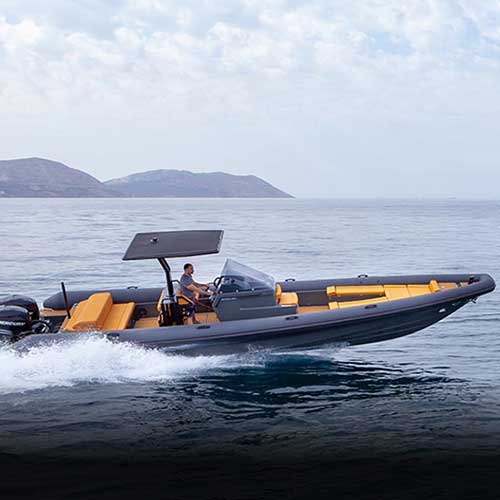
Onda Boats USA- Ups Their Excellence & Exclusivity
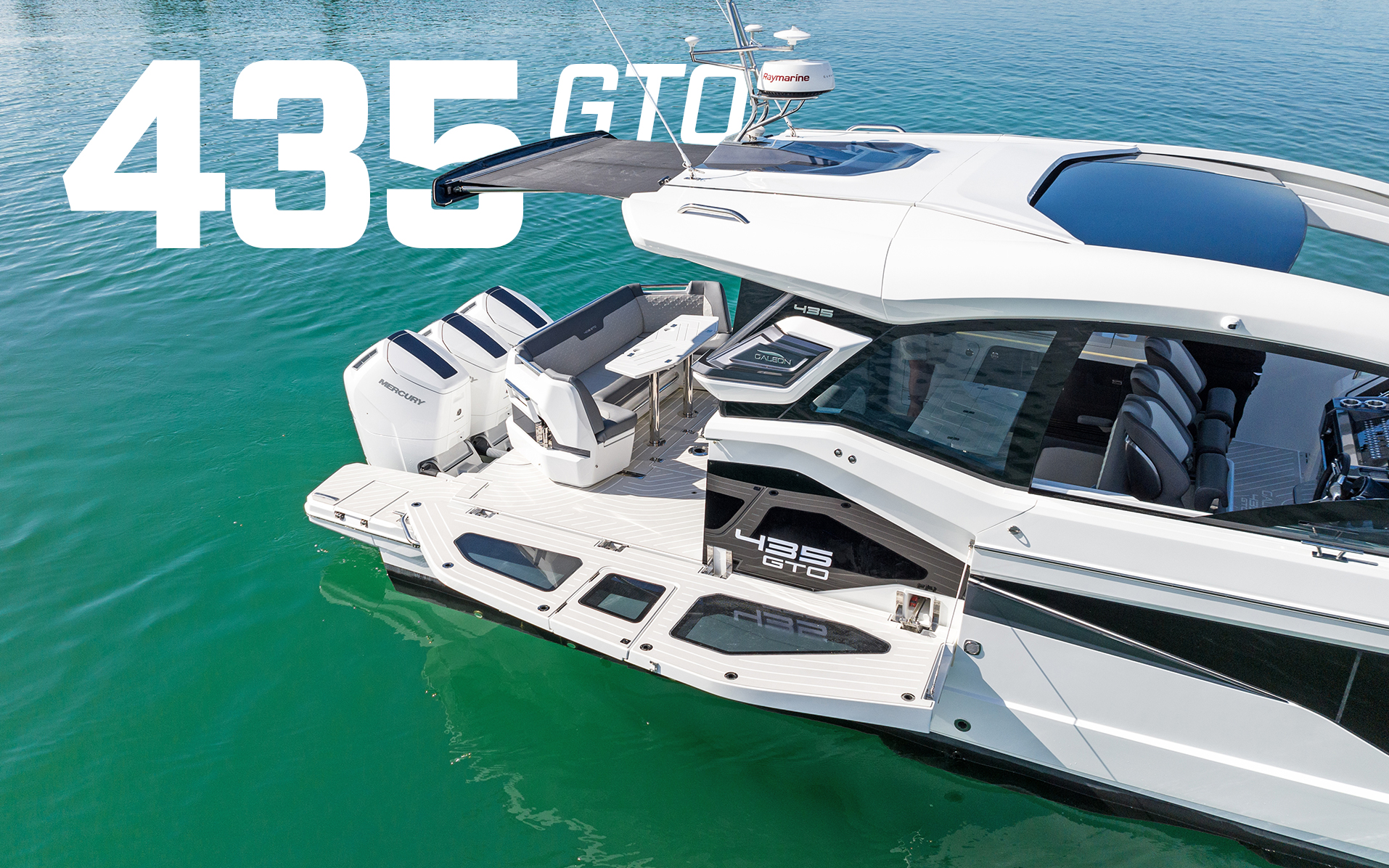
Galeon 435 GTO: Price & Specs Unveiled for Luxury Boating Enthusiasts

Jon Boat: Essentials, Maintenance, and Tips for Every Boat Owner
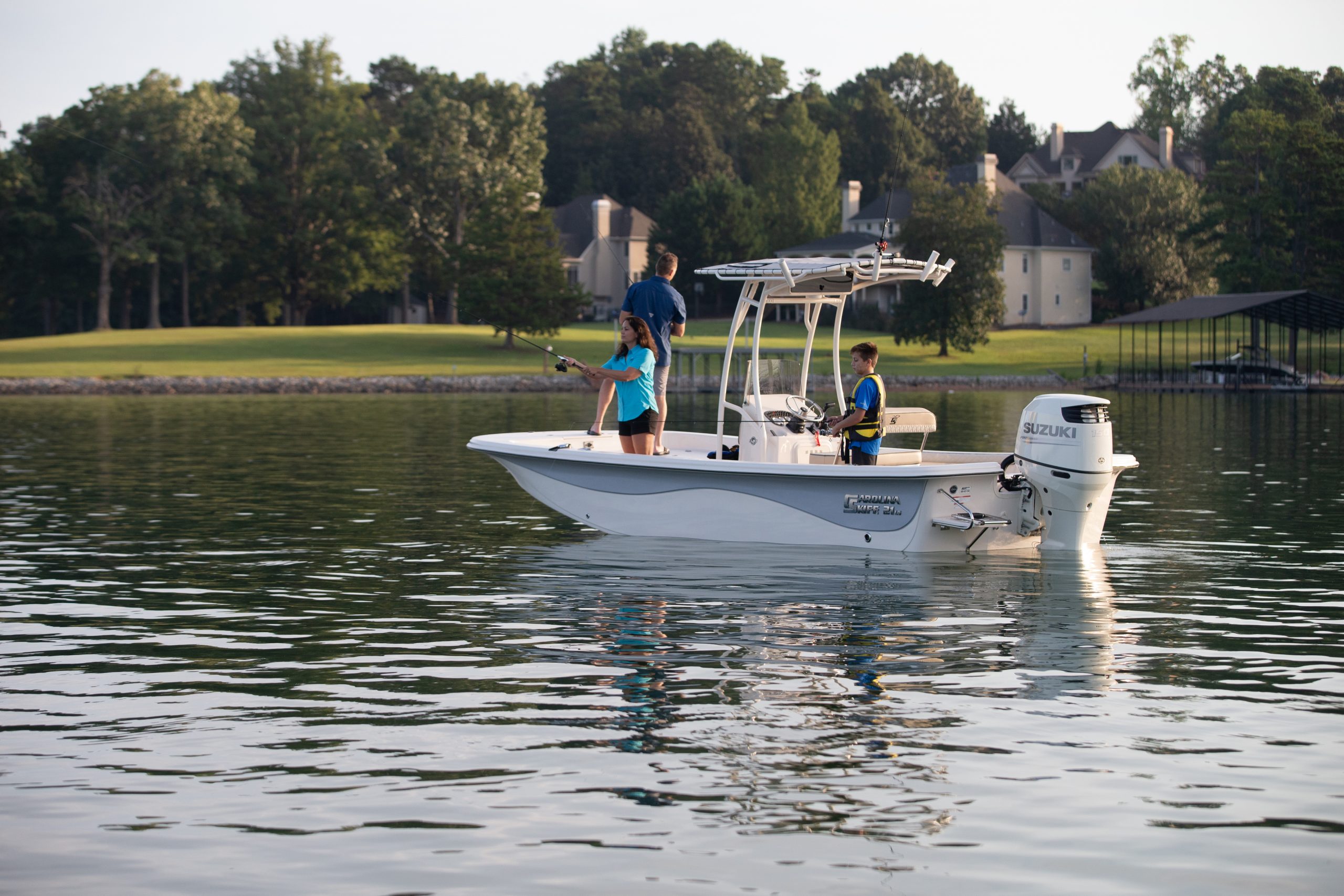
Carolina Skiff Models, Specs, Prices & Competition: An Expert Overview

Sombrero Reef: A Guide to Florida's Underwater Treasure
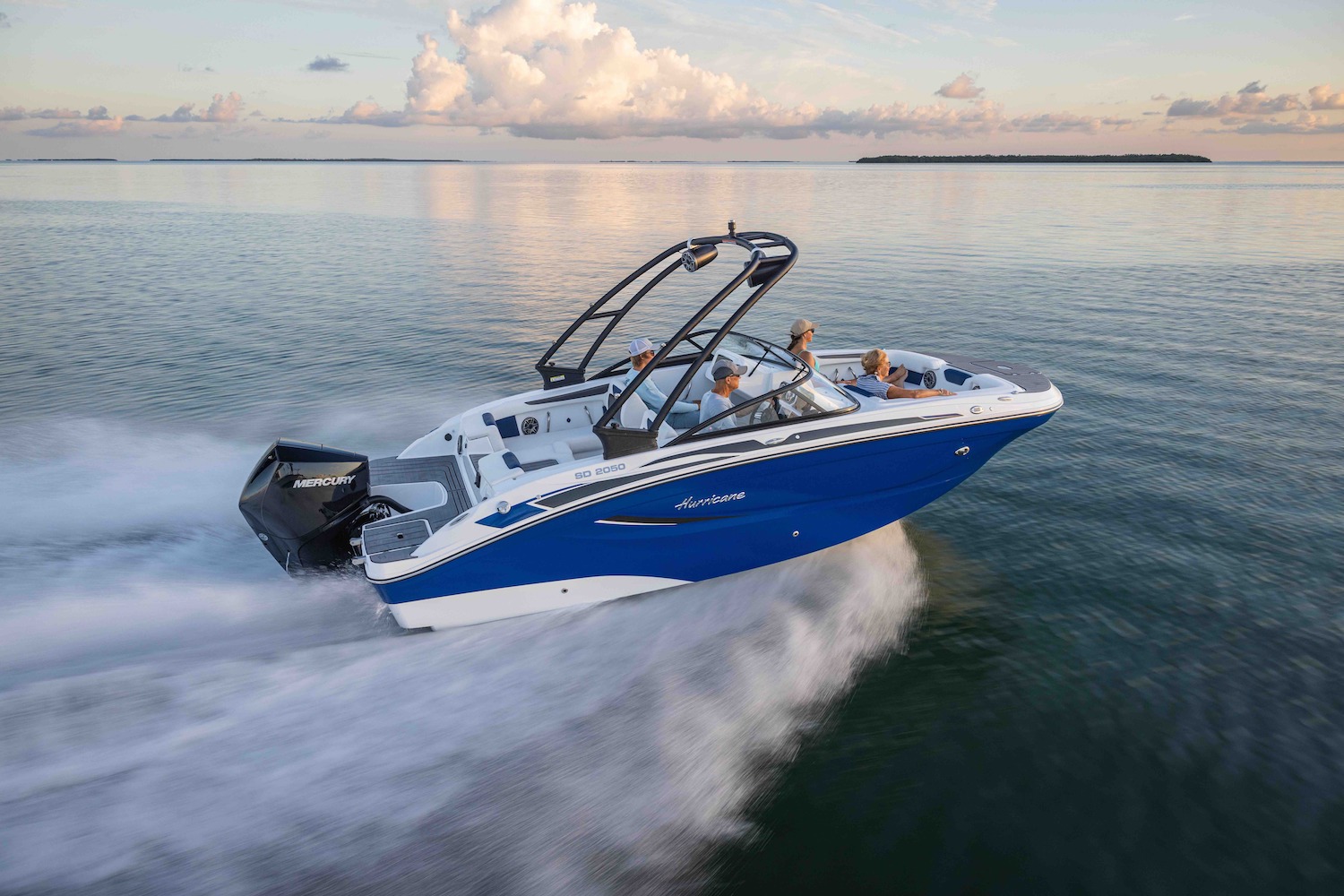
Deck Boats 2024 Ultimate Guide: Expert Insights for Top Models

Best Bay Boats 2024: Top Picks for Performance and Value
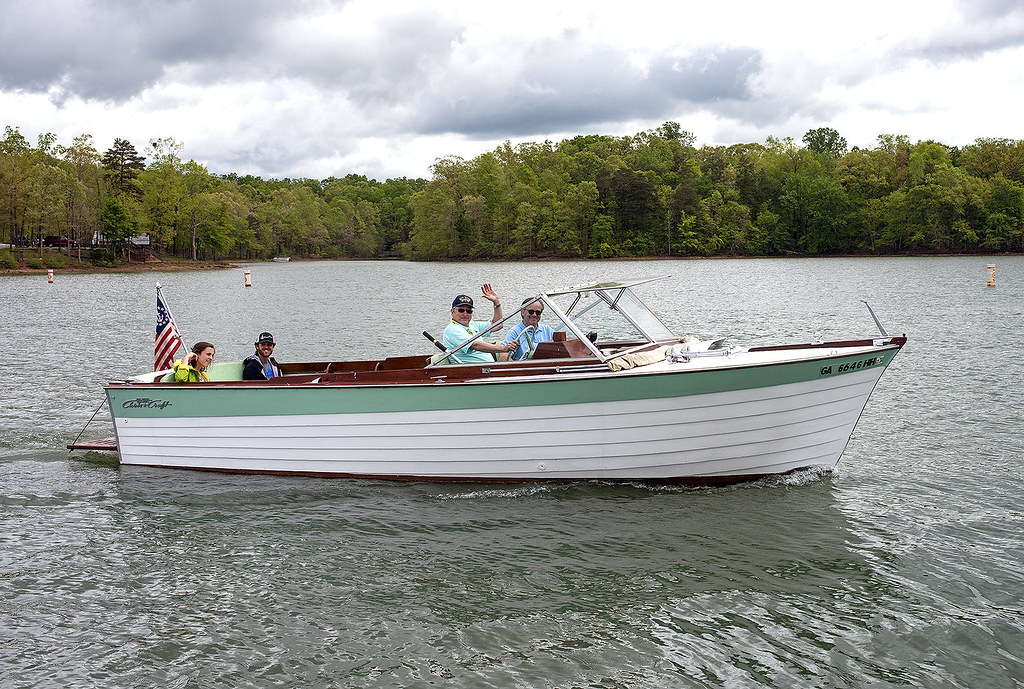
Chris Craft Sea Skiffs: Exploring Classic Wooden Boats
Sailing Basics: 10 Nautical and Sailing Terms to Learn
Sailing offers a unique blend of adventure, relaxation, and skill, but for beginners, the terminology can be a bit daunting. Whether you’re just getting started or looking to brush up on your sailing vocabulary, knowing these key terms will help you feel more confident on the water. In this guide, we’ll cover 10 essential nautical and sailing terms that every new sailor should know, along with some insights into the types of boats and equipment you might encounter, including price ranges and specs for beginner-friendly options.
1. Port and Starboard
One of the most fundamental terms to understand is the difference between port and starboard .
- Port refers to the left side of the boat when you’re facing forward, toward the bow (front).
- Starboard refers to the right side of the boat under the same conditions.
These terms are essential for clear communication, especially in navigation and safety situations. Knowing which side of the boat you’re talking about is crucial when maneuvering, docking, or giving way to other vessels.
Price & Specs
Many starter sailboats, like the Catalina 22 Sport, which is popular among beginner sailors, come equipped with navigational aids that indicate port and starboard with colored lights. A new Catalina 22 Sport can range from $25,000 to $30,000 depending on customization, with a length of 22 feet and a beam (width) of 7.67 feet.
2. Bow and Stern
The bow refers to the front of the boat, while the stern refers to the back. This is another critical term to understand, especially when docking or communicating with crew members.
Entry-level sailboats like the Beneteau First 14 have well-defined bow and stern areas, with sleek designs aimed at enhancing speed and maneuverability. Priced around $10,000 , this 14-foot boat is perfect for those learning the ropes of sailing and offers a stable platform for training.
The boom is the horizontal pole that extends from the bottom of the mast, attached to the foot of the mainsail. The boom is critical in controlling the angle and shape of the sail, allowing you to harness the wind’s power efficiently.
A common beginner mistake is not paying attention to the boom’s movement when tacking or jibing (changing direction). The boom can swing rapidly across the deck, posing a hazard if you’re not aware of its position.
For beginner boats like the Hobie 16, the boom is lightweight and easy to control. This catamaran-style boat starts at around $12,000 , making it an accessible choice for new sailors. It has a length of 16 feet and a beam of 7.92 feet.
4. Mainsail and Jib
A sailboat typically has two main sails: the mainsail and the jib .
- The mainsail is the large sail that is attached to the mast and boom, providing the bulk of the boat’s propulsion.
- The jib is a smaller sail that is positioned forward of the mainsail, attached to the headstay (a cable running from the bow to the top of the mast).
Understanding how to trim (adjust) these sails to maximize wind efficiency is key to sailing effectively.
A sailboat like the Hunter 15 features a well-balanced mainsail and jib system, ideal for beginners learning sail trimming techniques. Priced around $13,000 , the Hunter 15 has a mainsail area of 108 sq. ft. and a jib area of 34 sq. ft., making it manageable for new sailors.
5. Tacking and Jibing
Tacking and jibing are two essential sailing maneuvers used to change the boat’s direction relative to the wind.
- Tacking involves turning the bow through the wind, typically when sailing upwind.
- Jibing is turning the stern through the wind, usually when sailing downwind.
Mastering these turns is crucial for safely navigating different wind conditions.
Learning to tack and jibe is easier on boats like the RS Zest, a compact sailboat priced around $6,000 . With a length of 11.48 feet and a sail area of 71.3 sq. ft., it’s lightweight and designed for training purposes.
The helm is the steering mechanism of the boat, usually a wheel or tiller, depending on the boat’s size. When someone is “at the helm,” they are in charge of steering the boat.
The Laser Performance Bahia, which is perfect for beginner sailors, features a simple tiller-based helm system. This 15-foot boat costs around $12,000 and offers a stable ride, allowing newcomers to focus on steering without worrying about complex controls.
The keel is the structure at the bottom of the boat that provides stability by lowering the boat’s center of gravity and preventing it from tipping over. It also helps the boat sail efficiently by cutting through the water.
Boats like the Catalina 275 Sport feature a fixed keel, providing extra stability for new sailors. Priced around $85,000 , this 27-foot boat is designed for easy handling, with a keel that offers stability in various wind conditions.
8. Sheet and Halyard
The sheet is the rope used to control the angle of the sails, while the halyard is the rope used to hoist or lower sails.
- The mainsheet controls the mainsail.
- The jib sheet controls the jib sail.
- The halyard raises the sail up the mast.
Learning how to adjust the sheets and halyards properly allows you to control the sail shape and boat speed.
Sailboats like the Sunfish come with simple sheet and halyard setups, making it ideal for beginners. With a price tag of $4,500 to $6,000 , it’s one of the most affordable starter sailboats, offering a straightforward rigging system.
9. Windward and Leeward
- Windward refers to the side of the boat facing the wind.
- Leeward is the side sheltered from the wind.
Understanding these terms is crucial when adjusting your sails or when navigating in close proximity to other boats, as it helps you determine the wind’s impact on your vessel.
The RS Quest, priced around $10,000 , is designed with wind awareness in mind. With a length of 14 feet and a sail area of 130 sq. ft., this boat is easy to handle, helping beginners get a feel for windward and leeward sailing.
A cleat is a metal or plastic fitting on a boat used to secure ropes. Cleats are essential for tying off the sails, docking, or anchoring. Knowing how to properly tie knots around cleats is a basic sailing skill.
Most beginner-friendly sailboats, such as the Precision 165, come with multiple cleats for securing lines. This model, priced around $18,000 , is designed with user-friendly cleats for easy line management, helping new sailors get comfortable with the process.
Learning the basic nautical and sailing terms is an important step in becoming a confident sailor. As you become more familiar with the terminology, you’ll gain a better understanding of how your boat interacts with the wind and water, making your time on the water safer and more enjoyable. Whether you’re practicing on a compact boat like the Sunfish or progressing to larger models like the Catalina 275 Sport, knowing these terms will help you sail with skill and confidence.
Happy Boating!
Share Sailing Basics: 10 Nautical and Sailing Terms to Learn with your friends and leave a comment below with your thoughts.
Read Four Reasons to Sign Up for Boating Lessons (And Where to Find Them) until we meet in the next article.
Similar Posts

Boat Driver’s Licenses: Setting Sail with Confidence
The allure of cruising across calm waters, feeling the spray of the ocean, and exploring hidden coves is undeniable. But before you can chart your course and become a captain of your own vessel, understanding boat licensing requirements is crucial. This guide will navigate you through the essentials of obtaining a boat driver’s license, also…

Used Pontoon Boat with Cabin for Sale: Guide
Pontoon boats offer the perfect blend of relaxation and fun on the water. But for those seeking extended adventures or overnight stays, a pontoon boat with a cabin provides an unmatched level of comfort and convenience. If you’re considering buying a pre-owned cabin cruiser pontoon, this guide will equip you with the knowledge and resources…

24ft Pontoon Boat Cover: Keeping Your Pontoon Protected
Your 24ft pontoon boat is likely your pride and joy, a vessel for countless hours of relaxation and fun on the water. But when it’s not in use, it needs protection from the elements. That’s where a well-chosen 24ft pontoon boat cover comes in. This guide will delve into everything you need to know about…

Are Dakota Lithium Battery Good and Reliable?
Dakota Lithium batteries have carved a niche in the marine and RV world, promising longer life, faster charging, and lighter weight compared to traditional lead-acid batteries. But are they all smooth sailing, or are there hidden reefs lurking beneath the surface? Let’s dive deep into the pros and cons, myths and realities, to help you…

5 Ways to Celebrate National Fishing and Boating Week
National Fishing and Boating Week is an exciting time for enthusiasts and newcomers alike, offering a perfect opportunity to indulge in outdoor adventures on the water. Celebrated annually in early June, this week-long event is dedicated to promoting recreational fishing and boating while encouraging people to enjoy the natural beauty of lakes, rivers, and oceans….

Small Catamaran Power Boat: Slice Through the Water
For boaters seeking a unique blend of stability, performance, and comfort, a small catamaran power boat might be the perfect choice. These vessels, characterized by their twin hulls, offer a compelling alternative to traditional monohull boats, particularly for those who enjoy day trips, exploring coves, or cruising calmer waters. The Magic of Two Hulls The…

- AMERICA'S CUP
- CLASSIFIEDS
- NEWSLETTERS
- SUBMIT NEWS
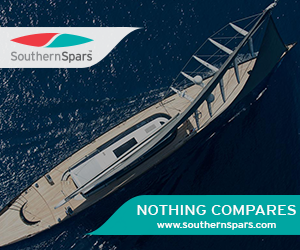
Southern Spars: Tech meets Talent in the AC40s for the Youth and Womens America's Cups
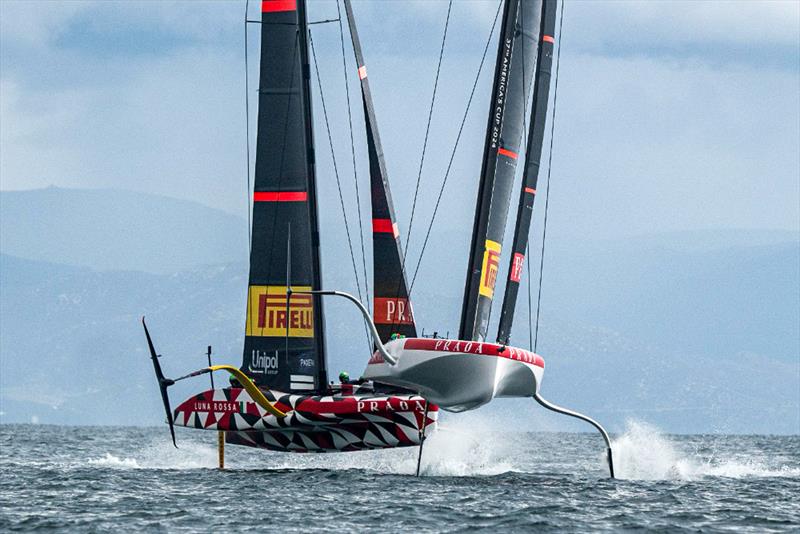
Related Articles
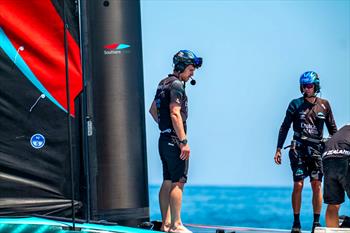
Below Deck Sailing Yacht Season 5 cast: Meet Captain Glenn’s new and returning crew members

Captain Glenn Shephard will be back on the small screen soon for Below Deck Sailing Yacht Season 5.
After a delay and a slew of fan speculation, Season 5 of Below Deck Sailing Yacht finally received a premiere date and a trailer.
However, in true Below Deck fashion, a couple of alums make up Captain Glenn’s latest crew, but a fan favorite is missing.
Colin MacRae isn’t returning as Chief Engineer after a turbulent Season 4 that fractured his friendships with Gary King and Daisy Kellier.
The three helped revamp the sailing show after a lackluster Season 1, making it a hit along with Captain Glenn. Colin will undoubtedly be missed.
Below Deck Sailing Yacht stars Daisy Kelliher and Gary King are back
Two people needing no introduction are Gary and Daisy, who are each back for their fourth season on Below Deck Sailing Yacht.
Last summer, photos of Gary and Daisy filming Season 5 were leaked; honestly, we weren’t surprised to see them in the mix. Despite their friction, which amps up for Season 5, Daisy and Gary make good television.
Gary was featured much less in the trailer than in previous seasons, and that likely has to do with the sexual misconduct allegations that came out after Season 5 was filmed. Recently, Gary shared an update about his accuser as he continues to proclaim his innocence.
View this post on Instagram A post shared by Above Deck Podcast (@abovedeckpod)
Who are Captain Glenn Shephard’s new Below Deck Sailing Yacht Season 5 crew members?
Chef Cloyce Martin takes over the galley, and at 22, his age will play a huge factor in the season. We already see him clash with Daisy in the trailer.
Davide Morosi takes over Colin’s chief engineer role, and he seems to be pretty private, with little to no activity on social media.
Stew Diana Cruz declares herself “an organized mess” who has caught the acting and yachting bug.
View this post on Instagram A post shared by Diana Cruz (@dianacruzc_)
Danni Warren rounds out the interior crew. She has a connection with Below Deck Med’s Bri Muller and seems to want to be in the social media influencer game, too.
Deckhand Keith Allen catches Daisy’s eye on Below Deck Sailing Yacht Season 5. Keith isn’t just a sailing yachtie but a photographer and diver who loves to travel.
Emma Crouch makes up the rest of Gary’s deck team. She’s all about being a yachtie, including helping others get into the business as a trainer with Paper Boat Yachting Academy.
View this post on Instagram A post shared by Emma Crouch (@emmacrouch88)
That’s a brief preview of the Below Deck Sailing Yacht Season 5 cast. Fans will have to turn in to find out more about Captain Glenn’s crew, especially to learn how Daisy and Gary work together after their Season 4 fallout.
Below Deck Sailing Yacht Season 5 premieres on Monday, October 7 at 9/8c on Bravo. Seasons 1-4 are streaming on Peacock.
Lego’s Latest Star Wars Set Makes Jabba’s Sail Barge Bigger Than Ever
Such is inevitable in the worlds of both Star Wars and Lego that things repeat—ideas to return to and be improved upon, whether it’s bringing a character back over and over or, in Lego’s case, picking an iconic design and trying to do it the best justice you can with contemporary design over 25 years of iteration . Its latest Star Wars “Ultimate Collector Series” set goes back to Jabba’s Sail Barge, and makes it even bigger that it has ever been in brick-built form before.
This morning Lego revealed that the next Star Wars UCS set, releasing next month, will be a massive recreation of the Khetanna, aka Jabba’s Sail Barge from Return of the Jedi . Clocking in at a whopping 3,942 pieces, the 30-inch-long model dwarfs the company’s prior takes on the Sail Barge from 2013 (just 850 pieces) and 2006 (781). And not just in pieces either: the set will also come with 11 minifigures recreating of course Jabba, his associates and his various partygoers, and a few key rebel heroes. Here’s the full breakdown of who’s who:
- Jabba the Hutt
- Bib Fortuna, Jabba’s Twi’lek majordomo
- Salacious B. Crumb, the Kowakian monkey lizard
- Max Rebo, the luckiest Ortolan musician in the galaxy
- Kithaba, a Klatooinian skiff guard
- Vizam, a Nikto weapons master
- Wooof, another of Jabba’s Nikto goons
- A Gamorrean Guard
- Princess Leia, in her Huttslayer outfit
- R2-D2, complete with the drink tray he wears to serve guests before Luke’s breakout
Lego Star Wars Ultimate Collector Series Jabba’s Sail Barge Gallery

The full set features a detailed interior, including a cockpit, prison and armory, kitchen, and entertainment room with space for Jabba’s throne, all viewable by lifting up the left side panel of the barge, and of course a detailed exterior, including gun emplacements and the fateful blaster cannon Luke fires to destroy the barge after rescuing Leia. Alas, there’s no included skiff to really complete the scene, but hey, that’s why Lego just so happened to release that separate Sarlacc pit and Skiff playset last month, isn’t it?
Of course, all this increase in size and scope will mean an increase in price too: the UCS Sail Barge will set you back a hefty $500 when it releases in a few weeks, beginning on October 3 for Lego Insider Members, and then October 6 for its full release. As a bonus, anyone who buys the set from Lego during that period will receive a bonus gift set in the form of a small buildable replica of Luke’s green lightsaber from Return of the Jedi .
Want more io9 news? Check out when to expect the latest Marvel , Star Wars , and Star Trek releases, what’s next for the DC Universe on film and TV , and everything you need to know about the future of Doctor Who .
Lego Star Wars
You May Also Like

Forge Your Own Fate With Hasbro’s Latest Mandalorian Helmet
The Mandalorian 's Armorer is the latest to lend their metallic mantle to Hasbro's Black Series line of helmets.

Lego Star Wars: Rebuild the Galaxy Has a Good Time Questioning the Morality of Creation
The four-part miniseries explores a brand-new incarnation of the Star Wars Universe you may (or may not) come to prefer.

Ewan McGregor Hopes He’ll Play Obi-Wan Kenobi Again
After playing the iconic Star Wars character originated by Alec Guinness in three movies and a Disney+ series, the actor is holding out hope for more.

Star Wars ‘ Latest Comics Era Has Come to a Fittingly Weird End
The final issue of Marvel's latest volume of the Star Wars ongoing is a perfect encapsulation of just what this run has been like to read.

8 Years On, Rogue One ‘s Peter Cushing Resurrection Is Part of a Weird Legal Fight
Film producer Kevin Francis has filmed a lawsuit against Disney's digital recreation of Peter Cushing's Grand Moff Tarkin in Rouge One: A Star Wars Story .

James Earl Jones’ Most Iconic Darth Vader Lines
After the legendary actor passed away this week, we look back at some of his finest moments as Star Wars ' iconic villain.

- Best Free VPN
- Best Cheap VPN
- NordVPN Review
- ExpressVPN Review
- ProtonVPN Review
- Surfshark Review
- Super Bowl 2025
- US Open 2024
- Best Cloud Storage
- Best Web Hosting
- About Gizmodo
- How to Tip Gizmodo
Sailboat Parts Explained: Illustrated Guide (with Diagrams)
When you first get into sailing, there are a lot of sailboat parts to learn. Scouting for a good guide to all the parts, I couldn't find any, so I wrote one myself.
Below, I'll go over each different sailboat part. And I mean each and every one of them. I'll walk you through them one by one, and explain each part's function. I've also made sure to add good illustrations and clear diagrams.
This article is a great reference for beginners and experienced sailors alike. It's a great starting point, but also a great reference manual. Let's kick off with a quick general overview of the different sailboat parts.
General Overview
The different segments
You can divide up a sailboat in four general segments. These segments are arbitrary (I made them up) but it will help us to understand the parts more quickly. Some are super straightforward and some have a bit more ninja names.
Something like that. You can see the different segments highlighted in this diagram below:

The hull is what most people would consider 'the boat'. It's the part that provides buoyancy and carries everything else: sails, masts, rigging, and so on. Without the hull, there would be no boat. The hull can be divided into different parts: deck, keel, cabin, waterline, bilge, bow, stern, rudder, and many more.
I'll show you those specific parts later on. First, let's move on to the mast.

Sailboats Explained
The mast is the long, standing pole holding the sails. It is typically placed just off-center of a sailboat (a little bit to the front) and gives the sailboat its characteristic shape. The mast is crucial for any sailboat: without a mast, any sailboat would become just a regular boat.
I think this segment speaks mostly for itself. Most modern sailboats you see will have two sails up, but they can carry a variety of other specialty sails. And there are all kinds of sail plans out there, which determine the amount and shape of sails that are used.
The Rigging
This is probably the most complex category of all of them.
Rigging is the means with which the sails are attached to the mast. The rigging consists of all kinds of lines, cables, spars, and hardware. It's the segment with the most different parts.
The most important parts
If you learn anything from this article, here are the most important parts of any sailboat. You will find all of these parts in some shape or form on almost any sailboat.

Okay, we now have a good starting point and a good basic understanding of the different sailboat parts. It's time for the good stuff. We're going to dive into each segment in detail.
Below, I'll go over them one by one, pointing out its different parts on a diagram, listing them with a brief explanation, and showing you examples as well.
After reading this article, you'll recognize every single sailboat part and know them by name. And if you forget one, you're free to look it up in this guide.

On this page:
The hull is the heart of the boat. It's what carries everything: the mast, the sails, the rigging, the passengers. The hull is what provides the sailboat with its buoyancy, allowing it to stay afloat.
Sailboats mostly use displacement hulls, which is a shape that displaces water when moving through it. They are generally very round and use buoyancy to support its own weight. These two characteristics make sure it is a smooth ride.
There are different hull shapes that work and handle differently. If you want to learn more about them, here's the Illustrated Guide to Boat Hull Types (with 11 Examples ). But for now, all we need to know is that the hull is the rounded, floating part of any sailboat.
Instead of simply calling the different sides of a hull front, back, left and right , we use different names in sailing. Let's take a look at them.

The bow is the front part of the hull. It's simply the nautical word for 'front'. It's the pointy bit that cuts through the water. The shape of the bow determines partially how the boat handles.
The stern is the back part of the hull. It's simply the nautical word for 'back'. The shape of the stern partially determines the stability and speed of the boat. With motorboats, the stern lies deep inside the water, and the hull is flatter aft. Aft also means back. This allows it to plane, increasing the hull speed. For sailboats, stability is much more important, so the hull is rounded throughout, increasing its buoyancy and hydrodynamic properties.
The transom is the backplate of the boat's hull. It's the most aft (rear) part of the boat.
Port is the left side of a sailboat.
Starboard is the right side of a sailboat
The bilges are the part where the bottom and the sides of the hull meet. On sailboats, these are typically very round, which helps with hydrodynamics. On powerboats, they tend to have an angle.
The waterline is the point where the boat's hull meets the water. Generally, boat owners paint the waterline and use antifouling paint below it, to protect it from marine growth.
The deck is the top part of the boat's hull. In a way, it's the cap of the boat, and it holds the deck hardware and rigging.
Displacement hulls are very round and smooth, which makes them very efficient and comfortable. But it also makes them very easy to capsize: think of a canoe, for example.
The keel is a large fin that offsets the tendency to capsize by providing counterbalance. Typically, the keel carries ballast in the tip, creating a counterweight to the wind's force on the sails.
The rudder is the horizontal plate at the back of the boat that is used to steer by setting a course and maintaining it. It is connected to the helm or tiller.
Tiller or Helm
- The helm is simply the nautical term for the wheel.
- The tiller is simply the nautical term for the steering stick.
The tiller or helm is attached to the rudder and is used to steer the boat. Most smaller sailboats (below 30') have a tiller, most larger sailboats use a helm. Large ocean-going vessels tend to have two helms.
The cockpit is the recessed part in the deck where the helmsman sits or stands. It tends to have some benches. It houses the outside navigation and systems interfaces, like the compass, chartplotter, and so on. It also houses the mainsheet traveler and winches for the jib. Most boats are set up so that the entire vessel can be operated from the cockpit (hence the name). More on those different parts later.
Most larger boats have some sort of roofed part, which is called the cabin. The cabin is used as a shelter, and on cruising sailboats you'll find the galley for cooking, a bed, bath room, and so on.
The mast is the pole on a sailboat that holds the sails. Sailboats can have one or multiple masts, depending on the mast configuration. Most sailboats have only one or two masts. Three masts or more is less common.
The boom is the horizontal pole on the mast, that holds the mainsail in place.
The sails seem simple, but actually consist of many moving parts. The parts I list below work for most modern sailboats - I mean 90% of them. However, there are all sorts of specialty sails that are not included here, to keep things concise.

The mainsail is the largest sail on the largest mast. Most sailboats use a sloop rigging (just one mast with one bermuda mainsail). In that case, the main is easy to recognize. With other rig types, it gets more difficult, since there can be multiple tall masts and large sails.
If you want to take a look at the different sail plans and rig types that are out there, I suggest reading my previous guide on how to recognize any sailboat here (opens in new tab).
Sail sides:
- Leech - Leech is the name for the back side of the sail, running from the top to the bottom.
- Luff - Luff is the name for the front side of the sail, running from the top to the bottom.
- Foot - Foot is the name for the lower side of the sail, where it meets the boom.
Sail corners:
- Clew - The clew is the lower aft (back) corner of the mainsail, where the leech is connected to the foot. The clew is attached to the boom.
- Tack - The tack is the lower front corner of the mainsail
- Head - The head is the top corner of the mainsail
Battens are horizontal sail reinforcers that flatten and stiffen the sail.
Telltales are small strings that show you whether your sail trim is correct. You'll find telltales on both your jib and mainsail.
The jib is the standard sized headsail on a Bermuda Sloop rig (which is the sail plan most modern sailboats use).
As I mentioned: there are all kinds, types, and shapes of sails. For an overview of the most common sail types, check out my Guide on Sail Types here (with photos).
The rigging is what is used to attach your sails and mast to your boat. Rigging, in other words, mostly consists of all kinds of lines. Lines are just another word for ropes. Come to think of it, sailors really find all kinds of ways to complicate the word rope ...
Two types of rigging
There are two types of rigging: running and standing rigging. The difference between the two is very simple.
- The running rigging is the rigging on a sailboat that's used to operate the sails. For example, the halyard, which is used to lower and heave the mainsail.
- The standing rigging is the rigging that is used to support the mast and sail plan.
Standing Rigging

Here are the different parts that belong to the standing rigging:
- Forestay or Headstay - Line or cable that supports the mast and is attached to the bow of the boat. This is often a steel cable.
- Backstay - Line or cable that supports the mast and is attached to the stern of the boat. This is often a steel cable.
- Sidestay or Shroud - Line or cable that supports the mast from the sides of the boat. Most sailboats use at least two sidestays (one on each side).
- Spreader - The sidestays are spaced to steer clear from the mast using spreaders.
Running Rigging: different words for rope
Ropes play a big part in sailing, and especially in control over the sails. In sailboat jargon, we call ropes 'lines'. But there are some lines with a specific function that have a different name. I think this makes it easier to communicate with your crew: you don't have to define which line you mean. Instead, you simply shout 'mainsheet!'. Yeah, that works.
Running rigging consists of the lines, sheets, and hardware that are used to control, raise, lower, shape and manipulate the sails on a sailboat. Rigging varies for different rig types, but since most sailboats are use a sloop rig, nearly all sailboats use the following running rigging:

- Halyards -'Halyard' is simply the nautical name for lines or ropes that are used to raise and lower the mainsail. The halyard is attached to the top of the mainsail sheet, or the gaffer, which is a top spar that attaches to the mainsail. You'll find halyards on both the mainsail and jib.
- Sheets - 'Sheet' is simply the nautical term for lines or ropes that are used to set the angle of the sail.
- Mainsheet - The line, or sheet, that is used to set the angle of the mainsail. The mainsheet is attached to the Mainsheet traveler. More on that under hardware.
- Jib Sheet - The jib mostly comes with two sheets: one on each side of the mast. This prevents you from having to loosen your sheet, throwing it around the other side of the mast, and tightening it. The jib sheets are often controlled using winches (more on that under hardware).
- Cleats are small on-deck hooks that can be used to tie down sheets and lines after trimming them.
- Reefing lines - Lines that run through the mainsail, used to put a reef in the main.
- The Boom Topping Lift is a line that is attached to the aft (back) end of the boom and runs to the top of the mast. It supports the boom whenever you take down the mainsail.
- The Boom Vang is a line that places downward tension on the boom.
There are some more tensioning lines, but I'll leave them for now. I could probably do an entire guide on the different sheets on a sailboat. Who knows, perhaps I'll write it.
This is a new segment, that I didn't mention before. It's a bit of an odd duck, so I threw all sorts of stuff into this category. But they are just as important as all the other parts. Your hardware consists of cleats, winches, traveler and so on. If you don't know what all of this means, no worries: neither did I. Below, you'll find a complete overview of the different parts.
Deck Hardware

Just a brief mention of the different deck hardware parts:
- Pulpits are fenced platforms on the sailboat's stern and bow, which is why they are called the bow pulpit and stern pulpit here. They typically have a solid steel framing for safety.
- Stanchons are the standing poles supporting the lifeline , which combined for a sort of fencing around the sailboat's deck. On most sailboats, steel and steel cables are used for the stanchons and lifelines.
Mainsheet Traveler
The mainsheet traveler is a rail in the cockpit that is used to control the mainsheet. It helps to lock the mainsheet in place, fixing the mainsails angle to the wind.

If you're interested in learning more about how to use the mainsheet traveler, Matej has written a great list of tips for using your mainsheet traveler the right way . It's a good starting point for beginners.
Winches are mechanical or electronic spools that are used to easily trim lines and sheets. Most sailboats use winches to control the jib sheets. Modern large sailing yachts use electronic winches for nearly all lines. This makes it incredibly easy to trim your lines.

You'll find the compass typically in the cockpit. It's the most old-skool navigation tool out there, but I'm convinced it's also one of the most reliable. In any way, it definitely is the most solid backup navigator you can get for the money.

Want to learn how to use a compass quickly and reliably? It's easy. Just read my step-by-step beginner guide on How To Use a Compass (opens in new tab .
Chartplotter
Most sailboats nowadays use, besides a compass and a map, a chartplotter. Chartplotters are GPS devices that show a map and a course. It's very similar to your normal car navigation.

Outboard motor
Most sailboats have some sort of motor to help out when there's just the slightest breeze. These engines aren't very big or powerful, and most sailboats up to 32' use an outboard motor. You'll find these at the back of the boat.

Most sailboats carry 1 - 3 anchors: one bow anchor (the main one) and two stern anchors. The last two are optional and are mostly used by bluewater cruisers.

I hope this was helpful, and that you've gained a good understanding of the different parts involved in sailing. I wanted to write a good walk-through instead of overwhelming you with lists and lists of nautical terms. I hope I've succeeded. If so, I appreciate any comments and tips below.
I've tried to be as comprehensive as possible, without getting into the real nitty gritty. That would make for a gigantic article. However, if you feel I've left something out that really should be in here, please let me know in the comments below, so I can update the article.
I own a small 20 foot yacht called a Red witch made locally back in the 70s here in Western Australia i found your article great and enjoyed reading it i know it will be a great help for me in my future leaning to sail regards John.
David Gardner
İ think this is a good explanation of the difference between a ”rope” and a ”line”:
Rope is unemployed cordage. In other words, when it is in a coil and has not been assigned a job, it is just a rope.
On the other hand, when you prepare a rope for a specific task, it becomes employed and is a line. The line is labeled by the job it performs; for example, anchor line, dock line, fender line, etc.
Hey Mr. Buckles
I am taking on new crew to race with me on my Flying Scot (19ft dingy). I find your Sailboat Parts Explained to be clear and concise. I believe it will help my new crew learn the language that we use on the boat quickly without being overwhelmed.
PS: my grandparents were from Friesland and emigrated to America.
Thank you Shawn for the well written, clear and easy to digest introductory article. Just after reading this first article I feel excited and ready to set sails and go!! LOL!! Cheers! Daniel.
steve Balog
well done, chap
Great intro. However, the overview diagram misidentifies the cockpit location. The cockpit is located aft of the helm. Your diagram points to a location to the fore of the helm.
William Thompson-Ambrose
An excellent introduction to the basic anatomy and function of the sailboat. Anyone who wants to start sailing should consider the above article before stepping aboard! Thank-you
James Huskisson
Thanks for you efforts mate. We’ve all got to start somewhere. Thanks for sharing. Hoping to my first yacht. 25ft Holland. Would love to cross the Bass Strait one day to Tasmania. 👌 Cheers mate
Alan Alexander Percy
thankyou ijust aquired my first sailboat at 66yrs of age its down at pelican point a beautifull place in virginia usa my sailboat is a redwing 30 if you are ever in the area i wouldnt mind your guidance and superior knowledge of how to sail but iam sure your fantastic article will help my sailboat is wings 30 ft
Thanks for quick refresher course. Having sailed in California for 20+ years I now live in Spain where I have to take a spanish exam for a sailboat license. Problem is, it’s only in spanish. So a lot to learn for an old guy like me.
Very comprehensive, thank you
Your article really brought all the pieces together for me today. I have been adventuring my first sailing voyage for 2 months from the Carolinas and am now in Eleuthera waiting on weather to make the Exumas!!! Great job and thanks
Helen Ballard
I’ve at last found something of an adventure to have in sailing, so I’m starting at the basics, I have done a little sailing but need more despite being over 60 life in the old dog etc, thanks for your information 😊
Barbara Scott
I don’t have a sailboat, neither do l plan to literally take to the waters. But for mental exercise, l have decided to take to sailing in my Bermuda sloop, learning what it takes to become a good sailor and run a tight ship, even if it’s just imaginary. Thank you for helping me on my journey to countless adventures and misadventures, just to keep it out of the doldrums! (I’m a 69 year old African American female who have rediscovered why l enjoyed reading The Adventures of Robert Louis Stevenson as well as his captivating description of sea, wind, sailboat,and sailor).
Great article and very good information source for a beginner like me. But I didn’t find out what I had hoped to, which is, what are all those noisy bits of kit on top of the mast? I know the one with the arrow is a weather vane, but the rest? Many thanks, Jay.
Louis Cohen
The main halyard is attached to the head of the mainsail, not the to the mainsheet. In the USA, we say gaff, not gaffer. The gaff often has its own halyard separate from the main halyard.
Other than that it’s a nice article with good diagrams.
A Girl Who Has an Open Sail Dream
Wow! That was a lot of great detail! Thank you, this is going to help me a lot on my project!
Hi, good info, do u know a book that explains all the systems on a candc 27,
Leave a comment
You may also like, guide to understanding sail rig types (with pictures).
There are a lot of different sail rig types and it can be difficult to remember what's what. So I've come up with a system. Let me explain it in this article.

The Ultimate Guide to Sail Types and Rigs (with Pictures)

The Illustrated Guide To Boat Hull Types (11 Examples)

How To Live On a Boat For Free: How I'd Do It

How To Live on a Sailboat: Consider These 5 Things

- AMERICA'S CUP
- CLASSIFIEDS
- NEWSLETTERS
- SUBMIT NEWS

Interview with Tom Dolan, La Solitaire du Figaro Paprec winner
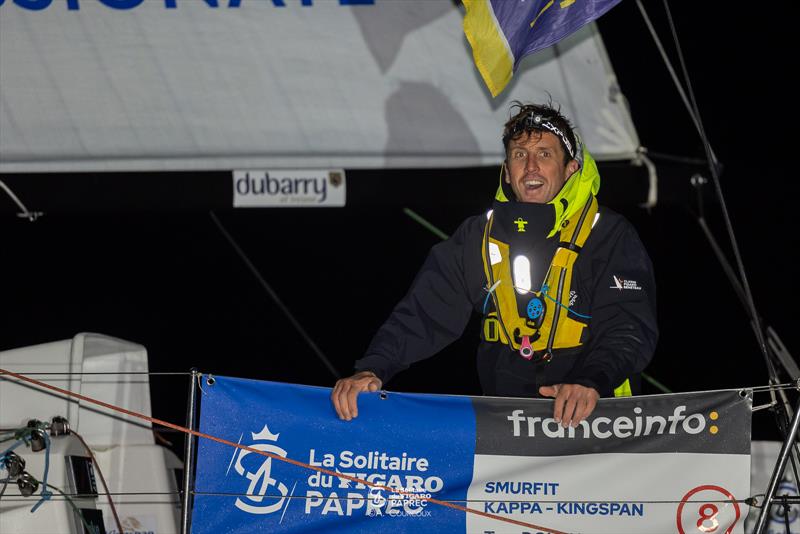
Related Articles

Upcoming Events
Travel the Dunes In Style With the New LEGO Star Wars™ Jabba’s Sail Barge™ Display Set

17th September 2024: Today, the LEGO Group reveals the launch of the LEGO® Star Wars™ Jabba’s Sail Barge™ Display Set . This iconic Ultimate Collector Series model is perfect for any Star Wars fan, packed with intricate details and LEGO Minifigures.
With 3,942 pieces, revel in the grandeur of Jabba the Hutt’s vessel with features such as folding down the sides and lifting off the sails and top deck to admire the authentically detailed interior, including the cockpit, prison cell, armoury, kitchen and entertainment room equipped with Jabba’s bed and more.
This LEGO Star Wars™ Jabba’s Sail Barge™ Display Set also includes 11 collectible Star Wars™ characters – Jabba the Hutt, Princess Leia, Bib Fortuna, C-3PO, Max Rebo, Kithaba, Vizam, Wooof, Gamorrean Guard, Salacious Crumb and R2-D2 with a bar table accessory, just like in the film.
Once built, showcase the spectacular set with the display stand, which has space for the Jabba the Hutt LEGO Minifigure, an information plaque and a LEGO Star Wars™ 25th anniversary brick. From a galaxy far, far away to a living room, this is an ideal gift for any adult Star Wars fan, collector of LEGO Star Wars UCS sets or people who enjoy mindful, creative activities.
The LEGO Star Wars™ Jabba’s Sail Barge™ Ultimate Collector Series Display Set is available for LEGO Insiders from 3rd October 2024 at www.LEGO.com/StarWars and LEGO Stores for all from 6th October priced at € 499.99/ £429.99 / $499.99.
In addition, between 3rd – 5th October all purchases of the LEGO® Star Wars™ Jabba’s Sail Barge™ Display Set will receive a LEGO® Star Wars™ Luke Skywalker’s Lightsaber™ Set 40730 as a free gift.
Notes to Editor
PRODUCT INFORMATION: LEGO® Star Wars™ Jabba’s Sail Barge™ Display Set (75397)
- Price: $499.99 / £429.99/ €499.99
- Pieces: 3942
- Product No. 75397
- Dimensions: 25cm wide, 77cm long and 25cm high Available:
- LEGO Insiders: 3rd October
- All: 6th October
- URL: LEGO.com/StarWars
LEGO® Star Wars™ Luke Skywalker’s Lightsaber™ (40730) Dates: 3 – 5th October for LEGO® Insiders only (membership required). Open to all shoppers 06 – 10th October. All stores and online. While supplies last. Minimum purchase: With purchase of 75397 LEGO® Star Wars™ Jabba’s Sail Barge™ only. While supplies last. Key features and functions: Demonstrate the force of your creativity with this LEGO® Star Wars™ Luke Skywalker’s Lightsaber (40730) building kit for adults. The buildable lightsaber is a highly detailed recreation of the one first seen used by Luke in Star Wars: Return of the Jedi. A wonderful creative gift with purchase for any adult fan of the classic Star Wars saga, this collectible build-and-display lightsaber model comes with a stand and nameplate to create an eye-catching piece of home or office decor.
About the LEGO Group The LEGO Group’s mission is to inspire and develop the builders of tomorrow through the power of play. The LEGO System in Play, with its foundation in LEGO bricks, allows children and fans to build and rebuild anything they can imagine.
The LEGO Group was founded in Billund, Denmark in 1932 by Ole Kirk Kristiansen, its name derived from the two Danish words LEg GOdt, which mean “Play Well”.
Today, the LEGO Group remains a family-owned company headquartered in Billund. Its products are now sold in more than 120 countries worldwide. For more information: www.LEGO.com.
- EO Explorer

- Global Maps
Notes from the Field
Sailing away for pace.
Hello from sunny Santa Barbara, California, where the ship operations for the PACE-PAX campaign are underway!
The PACE satellite went into orbit in February 2024. Its mission is to help us better understand how the ocean and atmosphere exchange carbon dioxide, as well as how aerosols can fuel phytoplankton blooms and help us track harmful algal blooms around the planet. PACE-PAX stands for Plankton, Aerosol, Cloud, ocean Ecosystem – Postlaunch Airborne eXperiment (see why we made it shorter?) We are using two airplanes and three ships, among other free-sailing instruments, to gather data that will tell us how well our shiny new satellite, PACE, is doing. We compare our planet-side data with the space-side data so we can make sure we are providing the very best information about the health of the world’s oceans.
Our planes are the ER-2, which is a super high-flying plane that hangs out right near the edge of space, and the Twin Otter, which holds a variety of instruments that are vital to the aerosols part of the mission.
Our ships are the R/V Shearwater , the R/V Blissfully , and the small fleet of R/V Fish boats. The R/V Shearwater is the main ship for this campaign. She holds a science team from multiple organizations and a wide variety of instruments. These include some that stare at the Sun, some that go in the water, and some that stay on deck. The R/V Blissfully is a sailboat located in Long Beach, California, that is taking an important subset of measurements to complement the Shearwater . She has a crew of just two people, so they are extra busy! Finally, the R/V Fish are our rapid response vessels. They can move around much faster than the other two and can get to specific locations quickly to take critical measurements.
My job is to collect water samples and filter or store them for analysis back in the lab, all the way back in Maryland. The samples I collect will be analyzed with at least five different instruments, which cannot be brought out to sea. There’s not enough space, and some of the instruments have dangerous elements that are not worth the risk of using while on a boat. There is also the issue of space. You can only bring so much to sea, so we take and preserve samples that can wait for analysis.
PACE-PAX is unique in that our cruises are day cruises. Usually, we get on a boat and don’t get off until the campaign is over. That can be days to weeks to even months living on a ship! This time we get to go back to a hotel in the evenings, which feels very odd in comparison. It can be hard to get your sea legs when you aren’t given time to get used to the motion. I have been relying on medication, ginger, and very salty snacks to get me used to the motion in the ocean.
I hope you enjoy learning more about this campaign in future Notes!
This entry was posted on Friday, September 13th, 2024 at 6:51 pm and is filed under PACE-PAX . You can follow any responses to this entry through the RSS 2.0 feed. You can skip to the end and leave a response. Pinging is currently not allowed.
Leave a Reply
Keep comments relevant. Inappropriate or offensive comments may be edited and/or deleted. Avoid adding Web site urls.
Name (required)
Mail (will not be published) (required)
Browse by Expedition
- A Satellite Scientist Visits the Ice, Alaska 2016
- African Blue Carbon Systems
- AfriSAR in Gabon 2016
- Airborne Lunar Spectral Irradiance Instrument (air-LUSI)
- Arctic Radiation Cloud Aerosol Surface Interaction Experiment (ARCSIX)
- Arctic-Boreal Vulnerability Experiment (ABoVE)
- ATom: World Survey of the Atmosphere
- Balloons for Science
- Beaufort Gyre Exploration Project 2016: Searching for Sea Ice
- Connecting Space to Village
- Cyclone Global Navigation Satellite System (CYGNSS)
- Dual-channel Extreme Ultraviolet Continuum Experiment (DEUCE)
- Eco3D: Exploring the Third Dimension of Forest Carbon
- Global Hawk Pacific (GLOPAC)
- GO-SHIP 2017
- Goddard Instrument Field Team (GIFT)
- GPM in Japan, the Road to Launch
- Greenland Aquifer Expedition
- Greenland Surface Melt Study 2013
- Hurricane and Severe Storm Sentinel (HS3) 2014
- ICESat-2 Antarctic Traverse
- International Collaborative Experiments for Pyeongchang 2018 Olympic and Paralympic Winter Games (ICE-POP)
- Iowa Flood Studies
- Journey to Galapagos
- Landsat 8 Launch 2013
- LARGE (The Langley Aerosol Research Group Experiment) 2014
- Leaf to Landscape
- MABEL: Spring 2011
- NAAMES (North Atlantic Aerosols and Marine Ecosystems Study)
- Nansen Ice Shelf, Antarctica 2015
- NASA Agriculture
- NASA in Alaska
- North Woods, Maine 2009
- Oceans Melting Greenland (OMG)
- Olympic Mountains Experiment (OLYMPEX) 2015
- Operation IceBridge
- Operation IceBridge: Antarctic 2013
- Operation IceBridge: Antarctic 2014
- Operation IceBridge: Antarctic 2017
- Operation IceBridge: Arctic 2011
- PACE: Color of the Ocean and Blue Sky
- Pine Island Glacier 2011
- Real-time Observations of Greenland's Under-ice Environment (ROGUE)
- Salinity Processes in the Upper Ocean Regional Study (SPURS)
- Sea to Space Particle Investigation
- SEAT: Satellite Era Accumulation Traverse
- Ship-Aircraft Bio-Optical Research (SABOR)
- Siberia 2012 – Embenchime River Expedition
- Soil Moisture Active Passive (SMAP)
- South Pacific Bio-optics Cruise 2014
- SWESARR: NASA’s Newest Snow Instrument
- The Ablation Zone: Where Ice Goes to Die
- The Uphill Road to Measuring Snow
- The Western Siberia Expedition 2010
- Uncategorized
- Urban Aerosols: Who CARES?
- VISIONS-2: Imaging Earth’s Portal to Space
Browse by Date
- Entries (RSS)
- Comments (RSS)
- Today's news
- Reviews and deals
- Climate change
- 2024 election
- Newsletters
- Fall allergies
- Health news
- Mental health
- Sexual health
- Family health
- So mini ways
- Unapologetically
- Buying guides
Entertainment
- How to Watch
- My watchlist
- Stock market
- Biden economy
- Personal finance
- Stocks: most active
- Stocks: gainers
- Stocks: losers
- Trending tickers
- World indices
- US Treasury bonds
- Top mutual funds
- Highest open interest
- Highest implied volatility
- Currency converter
- Basic materials
- Communication services
- Consumer cyclical
- Consumer defensive
- Financial services
- Industrials
- Real estate
- Mutual funds
- Credit cards
- Balance transfer cards
- Cash back cards
- Rewards cards
- Travel cards
- Online checking
- High-yield savings
- Money market
- Home equity loan
- Personal loans
- Student loans
- Options pit
- Fantasy football
- Pro Pick 'Em
- College Pick 'Em
- Fantasy baseball
- Fantasy hockey
- Fantasy basketball
- Download the app
- Daily fantasy
- Scores and schedules
- GameChannel
- World Baseball Classic
- Premier League
- CONCACAF League
- Champions League
- Motorsports
- Horse racing
New on Yahoo

- CA Privacy Notice
8 Fascinating Facts About ‘Koru,’ Jeff Bezos’s Bonkers 410-Foot Sailing Superyacht
According to the latest Forbes ‘s Real-Time Billionaires List, Amazon founder Jeff Bezos is currently worth around $204 billion, making him the second-wealthiest person on the planet, just behind Tesla CEO Elon Musk .
So handing over an estimated $500 million for his 410-foot Koru , the world’s largest sailing yacht , another $75 million for Abeona , its 250-foot support vessel, and then paying the $30 million or so a year to cover running costs for both, should be well within his budget.
More from Robb Report
Jeff Bezos May Be the Owner of a New $80 Million Gulfstream Jet
Jeff Bezos's Parents Just Gave $186 Million to the Aspen Institute
Bernard Arnault's Fortune Plummeted by $20 Billion This Year
Bezos surprised the boating world when he opted for a classically styled, three-masted sailing yacht instead of some flashy mega motoryacht. What’s more it has a buxom wooden sculpture on the forepeak, typical of 19th-century sailing vessels. And since taking delivery last year, he and his fiancé, Lauren Sánchez, have been using the yacht to cruise the world in style.
While secrecy still shrouds Koru , especially its interior and many of its technical features, we take a closer look at what makes it, arguably, the most interesting sailing superyacht in years.
Best of Robb Report
The 2024 Chevy C8 Corvette: Everything We Know About the Powerful Mid-Engine Beast
The World’s Best Superyacht Shipyards
The ABCs of Chartering a Yacht
Sign up for RobbReports's Newsletter . For the latest news, follow us on Facebook , Twitter , and Instagram .
Click here to read the full article.
Designed as a Modern Classic
Koru would never be described as sleek, or elegant even. But she does have a classical style. Designed by the Dutch masters at Dykstra Naval Architecture, the boat is distinguished by its towering navy-blue steel hull, snowy-white, two-level aluminum superstructure, sweeping canoe stern, and a trio of soaring masts. Her design inspiration is said to be the triple-masted schooner Eos , built by Germany’s Lürssen Yachts in 2006 for American media mogul Barry Diller. And, ignoring the current trend of oversized windows, Koru ‘s hull sides are dotted with traditional portholes with smaller-than typical windows for the upper decks (no doubt helping to protect guests from paparazzi lenses). Little is known about the yacht’s interior design, other than it’s the work of London-based Mlinaric, Henry and Zervudachi studio. Oceanco’s website describes the interior as a “timeless, contemporary style, with natural wood tones complemented by a palette of warm neutrals and beautifully patterned textiles.”
Claiming the Prize for Size
At 410 feet bow to stern and with a beam of 56 feet, Koru is the largest sailing yacht in the world. Some might argue the title should go to the 468-foot Sailing Yacht A . But that quirky, Philippe Stark–designed triple-master is considered a “sail-assisted motoryacht” rather than a true sailing yacht. Koru is also big inside, with a reported internal volume of 3,300 gross T=tons, that offers room for up to 18 guests in nine cabins and accommodations for a crew of 36.
A True Sailor
Full credit to Jeff Bezos for ignoring his fellow billionaires’ penchant for giant, diesel-guzzling superyachts. (Facebook founder Mark Zuckerberg recently took delivery of his 387-foot Launchpad , powered by quadruple MTU engines packing a combined 23,400 hp.) With its giant, more-than-20,000-square-foot sail plan (including three mainsails and three, cutter-style headsails), Koru has been regularly photographed cruising under sail. It’s also believed the yacht is making an effort to focus on sustainability, from reports of it testing out a prototype kinetic energy recovery system that converts wave-induced motion into electrical energy. The vessel is also believed to feature a hybrid power system with large battery banks that run its systems at night while at anchor.
Its 250-Foot, $75 Million “Tender”
The challenge with sailing yachts, even one that’s 410 feet long, is that it’s nearly impossible to land a helicopter on the deck. So Bezos commissioned a 250-foot support vessel, named Abeona after the Roman goddess of travelers. The largest shadow vessel ever built by Holland’s Damen Yachting, this explorer comes with a rear-deck helipad and hangar big enough to accommodate an Airbus ACH-135 helicopter. There’s also space aboard for a small armada of water toys and tenders, plus accommodations below decks for up to 45 crew and support staff.
Built Under Total Secrecy
Tasked with taking Koru from concept to reality was the superyacht builder Oceanco, based south of Rotterdam in Alblasserdam, Holland. The famed yard, owned by billionaire Mohammed Al Barwani, who also owns Turquoise Yachts in Turkey, recently completed Steven Spielberg’s new 357-foot superyacht Seven Sea s, and the similar-sized Bravo Eugenia , launched in 2018 for Dallas Cowboys owner Jerry Jones. Koru was reportedly first commissioned in 2018 as Project Y721 and delivered to the Amazon founder in Gibraltar in April 2023.
What’s in a Name?
While a betting person might have predicted that Bezos would have given his sailing yacht a more Amazon-connected name, like Prime, Deliverance, or even Blue Origin after his space company, he picked Koru . The name is said to be Maori for “loop” or “coil” and resembles the spiral shape of an unfurling silver fern frond. It’s said to be an integral symbol of New Zealand Maori art that symbolizes new life and new beginnings. Look closely at the wooden figurehead on Koru ‘s bow and the necklace around the woman’s neck features a pendant shaped like the koru symbol.
A Bridge Too Far
As Koru was nearing completion in 2021, word got out that builder Oceanco had approached the city of Rotterdam in Holland, offering to pay for the partial disassembly of the historic 97-year-old Koningshaven lift-bridge, which was too low for the yacht with its triple 230-foot masts in place, to pass under on its way to the North Sea. The city reportedly consented, but the move resulted in a huge public outcry with threats to plaster Koru with eggs as it passed through the bridge. Oceanco withdrew its application and instead towed the yacht to Rotterdam’s Greenport shipyard west of the city, transported the masts by barge, and installed them there.
The Places You’ll Go
Hot on the heels of Koru ‘s handover in Gibraltar in April last year, the superyacht has seemingly been cruising non-stop. It was spotted exploring Spain’s Balearic Islands, anchored off Cannes during the film festival, and moored at celebrity hot spots like Saint-Tropez, Capri, Portofino, and Porto Cervo, Sardinia. Bezos reportedly proposed to Sánchez on the bow of Koru off Cannes in May last year, followed by an engagement party aboard in Positano, Italy with a guest list that included Bill Gates, Leonardo DiCaprio, Kris Jenner, Toby Maguire, and Queen Rania of Jordan. Then Koru cruised the 4,000-plus miles across the Atlantic to Fort Lauderdale for a re-fuel and re-supply before heading to the Caribbean for winter cruising. This summer it was back to the Mediterranean for more island-hopping.
Recommended Stories
Amazon accused of deceptive 'sales' of its own products in lawsuit.
Amazon gets slapped with a lawsuit accusing it of deceptive pricing practices. The suit alleges that the company misled shoppers by showing inflated prices for Fire TVs.
Amazon Resale's secret deals — from Ninja, Apple and more — are going, going...
Some of these items are open-box, but all of them will leave you open-mouthed. Yep, they're that good.
Boeing stock hovers near 52-week lows amid labor dispute
Boeing's share price hovers near 52-week lows as the plane maker tries to strike a deal with its machinist union.
Lawmakers call for increased Secret Service protection for Trump. Here's what former agents say that could entail.
Congressional lawmakers from both sides of the aisle are calling for increased Secret Service protection for former President Donald Trump after an apparent second assassination attempt on Sunday. Former Secret Service agents tell Yahoo News what that could look like.
Oprah wears cargo pants and so can you — our picks start at just $25
Shop the '90s throwback look just in time for fall.
After a 15-year hiatus, a new Skate game is coming in 2025
EA announced the new Skate game is headed to consoles and PC next year.
A Sims movie from Amazon MGM Studios is on the way
The Sims is coming to the big screen after EA confirmed Amazon MGM Studios is working on an adaptation. The publisher also provided some updates on the future of the games.
Wayfair's fall clearance sale has so many good deals right now — up to 70% off
Give your home the seasonal makeover it deserves with deep discounts on a Sealy mattress, Kelly Clarkson Home rug, accent chair and more.
2024 Discover rewards calendar: Earn 5% cash back at Target and Amazon in Q4
Earn 5% cash back on valuable Discover cash-back rotating categories like grocery stores, Target, gas stations, and Amazon.com.
This top-selling shower caddy set can hold up to 40 pounds — and it's on sale for $17
Put your tools away: You can stick these adhesive organizers wherever it's convenient.

IMAGES
VIDEO
COMMENTS
In front of the main mast is called a foremast. The 5 most common two-masted rigs are: Lugger - two masts (mizzen), with lugsail (cross between gaff rig and lateen rig) on both masts. Yawl - two masts (mizzen), fore-and-aft rigged on both masts. Main mast much taller than mizzen. Mizzen without mainsail.
Leech: Back edge of the sail. Tack: The lower front corner of the sail. Clew: The bottom back corner of the sail. Foot: Bottom of the sail. There are two sail shapes, the fore-and-aft rigged sails, and square-rigged sails. Nowadays, fore-and-aft sails are more popular, have better performance and maneuverability.
Sloop. A sloop is by far the most popular configuration. It features a single mast, double sail (the mainsail and the headsail), and mast configuration. The headsail is located from the forestay on the mast to the top of it. The type of headsail used can also vary from a genoa, a spinnaker, or a gennaker sail.
Especially since some of these terms date back to prehistoric times and are kept around for the sole purpose of elitism. So to help you navigate this world for which you often need a dictionary, here is one. These are sail names explained for beginners. Here are the 15 most common sails: Mainsail. Foresail.
The mainsail, headsail (or jib), genoa, spinnaker, and gennaker are the most popular types of sails on sailboats. There are also a number of different configurations when considering the type of sail and mast in use including a sloop, fractional rig sloop, cutter, ketch, schooner, yawl, and cat. Simply put, different sailboat sails serve ...
5. Gennaker. As the name suggests, the Gennaker sail combines a spinnaker and a Genoa sail. They are as large as the spinnaker, although they're not symmetrical. They come in handy whenever the wind changes from a pure dead run to a reaching point of sail, as sailors can navigate various wind types with the same sail.
A sloop-rigged sailboat typically features a mainsail, a headsail, and an additional light-wind sail, such as a spinnaker or Gennaker. The mainsail is rigged aft of the mast, while the headsail is attached to the forestay. The two most commonly used headsails are the Genoa and Jib. The sails are vital parts of a sailboat since you obviously ...
Spinnaker sails are a type of downwind sail that can be used to increase boat speed when sailing in light winds. They are typically used in wind conditions below 10 knots, which are considered light air sails. Spinnakers come in two types: symmetrical and asymmetrical. Author: Ken Heaton CC BY-SA-4..
A sail, which is a large piece of fabric that is attached to a long pole called the mast, uses the wind to pull a sailboat across the water. It has various parts, such as the head, tack, clew, luff, leech, foot, mainsail, jib, and batten. These components determine the shape and efficiency of the sail.
Type of Sails Names: Decoding the Terminology. Mainsail and Foresail. The mainsail, as mentioned earlier, is the principal sail that catches the wind to move the boat forward. Foresail is a general term that includes various sails positioned near the bow of the sailboat, such as the jib and genoa. Genoa and Jib.
Mainsails are essential for providing the boat with forward propulsion and play a significant role in steering and balancing the vessel. There are two primary types of mainsails: full-batten and partial-batten. Full-batten mainsails have horizontal battens that run the entire width of the sail, providing additional support and shape.
As a general setup, sailboats will use three common sails, including headsail, mainsail, and specialty sail. Due to the varying wind conditions and the model of the sailboat, there are many types of sails including jib, genoa, trysail, storm jib, code zero, gennaker, and spinnaker. While that sounds like too many models of sails, you can easily ...
There are different types of sails used in specific boats. Check out some of the names of sails listed below to find out the most common sails names …. In This Article hide. Common Types of Sails. Mainsail. Staysail. Genoa. Spinnaker. Gennaker.
Short answer: Names of sails on a sailboat: Sails on a sailboat are commonly referred to by various names, including the mainsail, jib, genoa, spinnaker, staysail, and mizzen. Each sail serves a specific purpose in harnessing wind power for propulsion. Understanding the Basics: A Guide to the Names of Sails on a SailboatUnderstanding the Basics:
Short answer sailboat sails names: The main types of sails used on a sailboat are the mainsail, headsail (also known as jib or genoa), and the spinnaker. Other specialized sails include the staysail, storm jib, and trysail. Each sail has a specific purpose and is named accordingly based on its location and function on the
Bermuda Rig - Also known as a Marconi rig, this is the typical configuration of most modern sailboats. It has been used since the 17th century and remains one of the most efficient types of rigs. The rig revolves around setting a triangular sail aft of the mast with the head raised to the top of the mast.
A basic sailboat is composed of at least 12 parts: the hull, the keel, the rudder, the mast, the mainsail, the boom, the kicking strap (boom vang), the topping lift, the jib, the spinnaker, the genoa, the backstay, and the forestay. Read all the way through for the definition of each sailboat part and to know how they work.
June 17, 2024. Sailboats are powered by sails using the force of the wind. They are also referred to as sailing dinghies, boats, and yachts, depending on their size. Sailboats range in size, from lightweight dinghies like the Optimist dinghy (7'9") all the way up to mega yachts over 200 feet long. The length is often abbreviated as LOA (length ...
The most common kind of sailboat is the sloop, as it's simple to operate and versatile. Other common sailboat types include the schooner, cutter, cat, ketch, schooner, catamaran, and trimaran. Other sailboat variations include pocket cruisers, motorsailers, displacement, and shoal-draft vessels. The information found in this article is sourced ...
The main parts of a sailboat. Hull - The main structure. Keel - The fin under the boat. Rudder - To steer the boat. Mast and Rigging - Supporting the sails. Boom - Supporting the mainsail. Sails - The canvas used to harness the energy of the wind. The starboard and port side of the boat. Windward and Leeward.
Buying Considerations. When considering buying a sailboat, it is important to understand the different types of sailboats available and the purpose each serves.Sailboats can be broadly categorized into three types: Racing sailboats: Designed for speed and performance, with minimalistic interiors and advanced sail systems. Cruising sailboats: Built for comfort and longer trips, featuring more ...
For beginner boats like the Hobie 16, the boom is lightweight and easy to control. This catamaran-style boat starts at around $12,000, making it an accessible choice for new sailors. It has a length of 16 feet and a beam of 7.92 feet. 4. Mainsail and Jib. A sailboat typically has two main sails: the mainsail and the jib.
Don't be misled by the name, the Youth America's Cup crews are far from inexperienced. They include Olympians and world champions across various classes. The Puig Women's America's Cup showcases some of the most prolific names in world sailing, including the likes of Hannah Mills—one of the most successful female Olympians of all time.
The three helped revamp the sailing show after a lackluster Season 1, making it a hit along with Captain Glenn. Colin will undoubtedly be missed. Below Deck Sailing Yacht stars Daisy Kelliher and ...
This morning Lego revealed that the next Star Wars UCS set, releasing next month, will be a massive recreation of the Khetanna, aka Jabba's Sail Barge from Return of the Jedi.Clocking in at a ...
The mast is the long, standing pole holding the sails. It is typically placed just off-center of a sailboat (a little bit to the front) and gives the sailboat its characteristic shape. The mast is crucial for any sailboat: without a mast, any sailboat would become just a regular boat. The Sails. I think this segment speaks mostly for itself.
In one-design sailing, it's the sailor not the sails that make all the difference. You can't blame the boat. You understand that the sails are the engine for the boat and that strategy and positioning are important, while in other Classes, like the Mini, there are always people saying that others have a better boat and can sail more quickly.
LEGO® Star Wars™ Jabba's Sail Barge™ Display Set (75397) Age: 18+ Price: $499.99 / £429.99/ €499.99; Pieces: 3942; Product No. 75397; Dimensions: 25cm wide, 77cm long and 25cm high ... its name derived from the two Danish words LEg GOdt, which mean "Play Well". Today, the LEGO Group remains a family-owned company headquartered in ...
The R/V Blissfully is a sailboat located in Long Beach, California, that is taking an important subset of measurements to complement the Shearwater. She has a crew of just two people, so they are extra busy! Finally, the R/V Fish are our rapid response vessels. They can move around much faster than the other two and can get to specific ...
At 410 feet bow to stern and with a beam of 56 feet, Koru is the largest sailing yacht in the world. Some might argue the title should go to the 468-foot Sailing Yacht A.But that quirky, Philippe ...